Sorry, this entry is only available in Slovensko.
433
Inovativne organizacije >>>> Innovative Organizations
The Accursed Mountains area is captivating in so many ways. Spectacular mountain scenery, exhilarating climbs and other gorgeous hiking routes are available for people of all ages, skills and stamina.
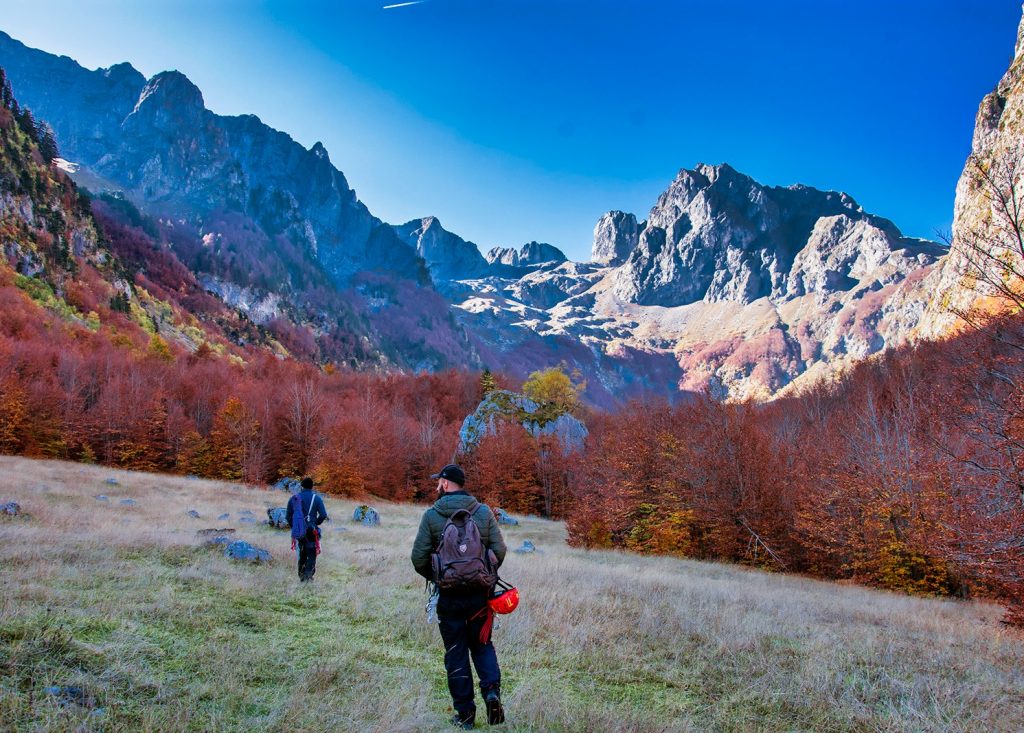
Grebaje valley. Photo credit: Igor Stojović
There are also plenty of historical sites and charming old cities to be discovered. Culturally, the region is one of the most diverse ones in Europe. It is an amalgamation of cultures and religions, Orthodox Christian, Muslim and Catholic.
We have curated this one-week itinerary, revealing some of the best kept secrets of the inspiring cross-border area between Montenegro and Kosovo among amazingly simple, kind and generous people.
DAY 1
Arrival to Plav in the afternoon
Visit to Kula Redzepagica
Kula Redzepagica, a national cultural monument, is known to be one of the most photographed old buildings in Montenegro. It is a beautiful example of traditional local architecture and housing. Well preserved artefacts vividly speak of the lifestyle of local inhabitants in the past.

Details from Kula Redzepagica; Photo credit: Tadeja Leskovšek
Walk around Plav lake
Plav lake is the biggest glacial lake in Montenegro. With the inflows of nearby springs and rivers, its fresh waters are changing every four days. In summer, swimming and variety of other water sports (kayak, boats, pedal boats) are possible. Its beautiful scenery attracts in all seasons. The lake is also a great spot for birdwatchers. You can observe species specific for the region, such as: Mallard, Pochard, Coot, Moorhen, Great Crested Grebe, Little Grebe, Grey Heron, Cormorant.
Traditional, home-made dinner at rural household Savić in the village Pepiće at the foot of Visitor mountain, 7 km from Plav lake. The household produces its own tasty cheese, honey, jam and other local delicacies.

Plav lake at sunset. Photo credit: Tadeja Leskovšek
There are plenty of accommodation facilities available in Plav, such as: Timm Apartments, Ethno village Komnenovo, Lake Views Hotel and Camp, Canovic Appartments etc.
DAY 2
Visit to the Botanical Garden Velemun
Velemun garden was established in 1993 on the local waste disposal. It’s a little oasis full of colourful native plants. Altogether, over 350 plants, 12% of total plant species in Montenegro, can be observed. Its passionate founder and owner has been collecting, preserving, displaying and labelling the plants with much love and care. He brought majority of them from the nearby mountains.

Velemun botanical garden. Photo credit: Igor Stojović
Hiking through the Peaks of Prokletije glacier
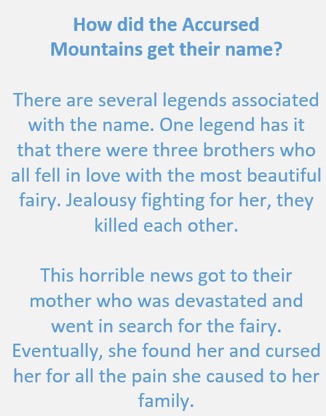 Though “Peaks of the Balkans” are the most renowned route, attracting many visitors to the area, you can try an easy hike through the “Peaks of Prokletije glacier” to get the first sense of Prokletije (the Accursed) Mountains experience.
Though “Peaks of the Balkans” are the most renowned route, attracting many visitors to the area, you can try an easy hike through the “Peaks of Prokletije glacier” to get the first sense of Prokletije (the Accursed) Mountains experience.
This newly launched circular trail merges with the “Peaks of the Balkans” route in one section. Local inhabitants have long used this path to walk from Plav to Vradište. After Vradište, the trail returns via Završ to the Ćuljuntra lookout, then descends to the centre of Plav, to Kula Redzepagica.
Somewhere in the middle of the trail, right after finishing the path of fungi and medicinal plants towards Budovice, rural household Feratović is a great stop for a hearty lunch.
Spending a night in katun
To truly experience the Accursed Mountains, you need to spend a night under the stars in katun. Katuns are originally shepherds’ huts, but nowadays authentic lodges available to visitors around the Accursed mountains.

Beautiful views and tasty homemade raspberry juice in katun. Photo credit: Tadeja Leskovšek
We recommend Katun PSK Hrid, Katun Gradine or Samel’s Cottage (Bajrovica katun) on the way to Hrid lake.
DAY 3
Morning hike to Hrid Lake
This is a hike through the pine forests on well-marked walking trail. Several legends speak of the beauty of Hrid lake. One of the most famous ones is that magical fairies bathe in it. The lake is mainly accessible between June and November. The rest of the year is available to fairies only.
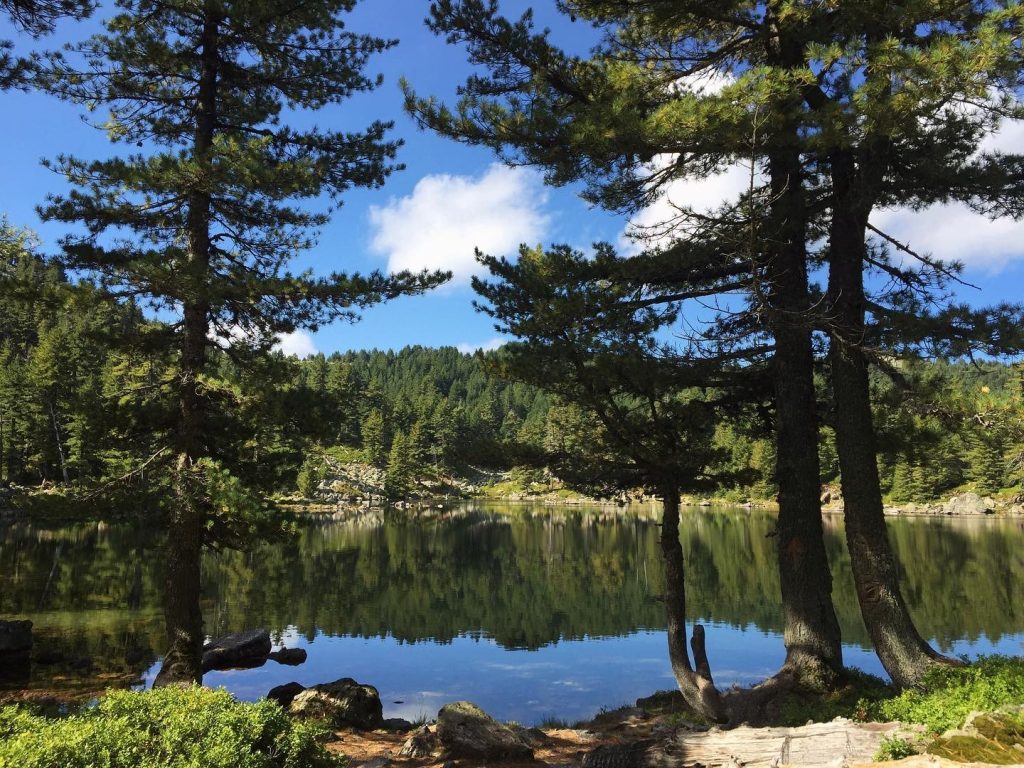
Hrid lake. Photo credit: Tadeja Leskovšek
Lunch at the rural household Redžematović will fill you with energy after this hike. There, you can also learn how to make cheese, help with the preparation of authentic dishes or ride a horse.
After that, it’s time to move towards Gusinje and Vusanje.
Visit to Ali Pasha Springs
The springs are named after a famous commander Ali Pasha of Gusinje.
“In a beautiful, bucolic setting at the foothills of the Prokletije mountains, these karst springs are an ideal spot for a picnic. Locals extol the health benefits of drinking the springs’ water, purportedly rich in therapeutic minerals. The springs are a five-minute drive – or an easy 25-minute hike – south of Gusinje.” (Source: Lonely Planet). 💦💦

Ali Pasha springs. Photo credit: Tadeja Leskovšek
Nested in a little valley, Eko Katun Rosi is a nice place to spend the night.
DAY 4
Arrival to Grebaje Valley
Grebaje valley is a beautiful Alpine valley, one of the signature sceneries of Prokletije National Park.
Walking through the valley reveals several nature wonders, such as the “Šuplja vrata”, a stone formation known as “the kissing cats” as well as the eternal glacier.
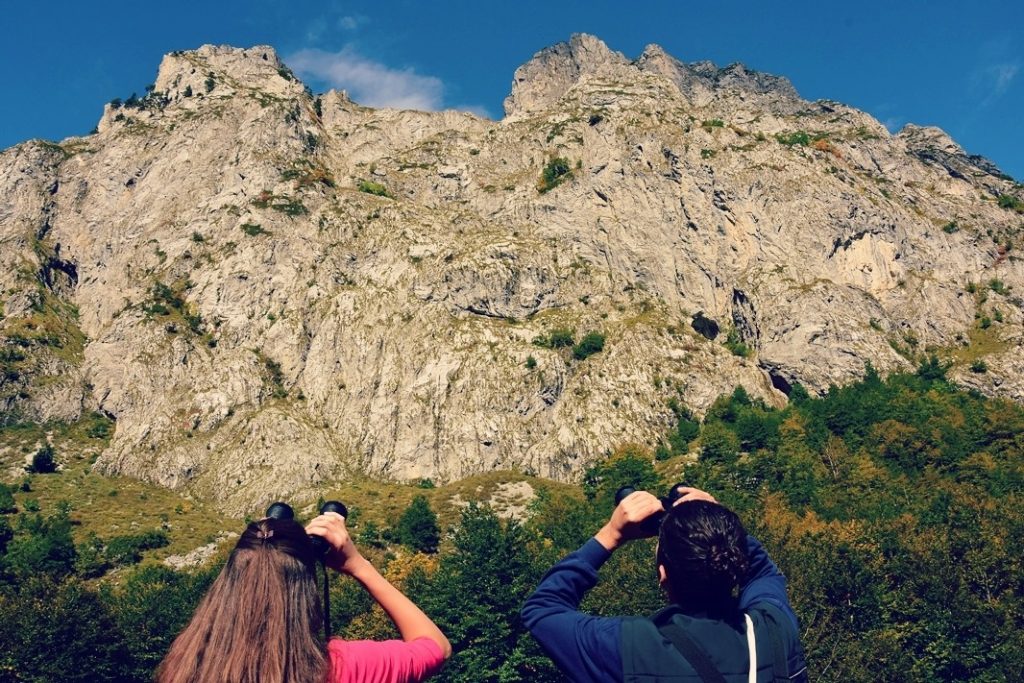
Birdwatching in Grebaje valley. Photo credit: Igor Stojović
Bicycles can be arranged at the national park info centre for a scenic ride from Grebaje to Ropojana valley. Its myriad shades of green are soothing to the eye. The valley is surrounded by rugged grey mountains rising to the sky high above.
There are several rural households in the surrounding villages where you can stop for a tasty lunch. One of them is household Bojović in the village Grnčar where you can try traditional dishes, including a carrot jam, the household specialty.
Grebaje valley is a great starting point for several mountain trails in the vicinity.
You can visit magnificent “Oko Skakavice”, the largest spring in Prokletije.
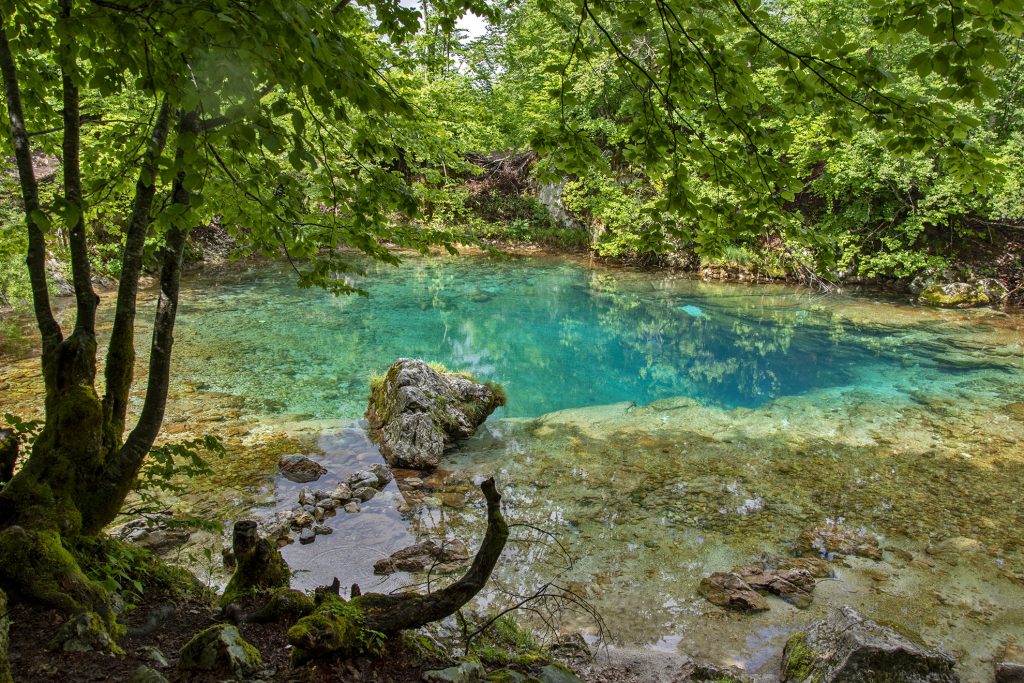
Oko Skakavice. Photo credit: Igor Stojović
Volušnica trail is also an attractive option. It is one of the most known mountain trails in Montenegro. Ancient history enthusiasts will enjoy searching for Magna Mater Stone Gravure near the abandoned Volušnica summer pasture. This ancient gravure is showing the combat of a man and a woman with a wolf, attacking their child. Archaeologists estimate that it dates back to the Neolithic period.
Nature lovers might be particularly interested in a walk to Kotlova and the lowest glacier in Montenegro, there, some endemic plants like, Wulfenia blecicii, can be seen.
Experienced mountaineering guides: Ahmet Reković, Dino Mulamekić, Semir Kardović and Enes Drešković can guide you in these beautiful mountains.
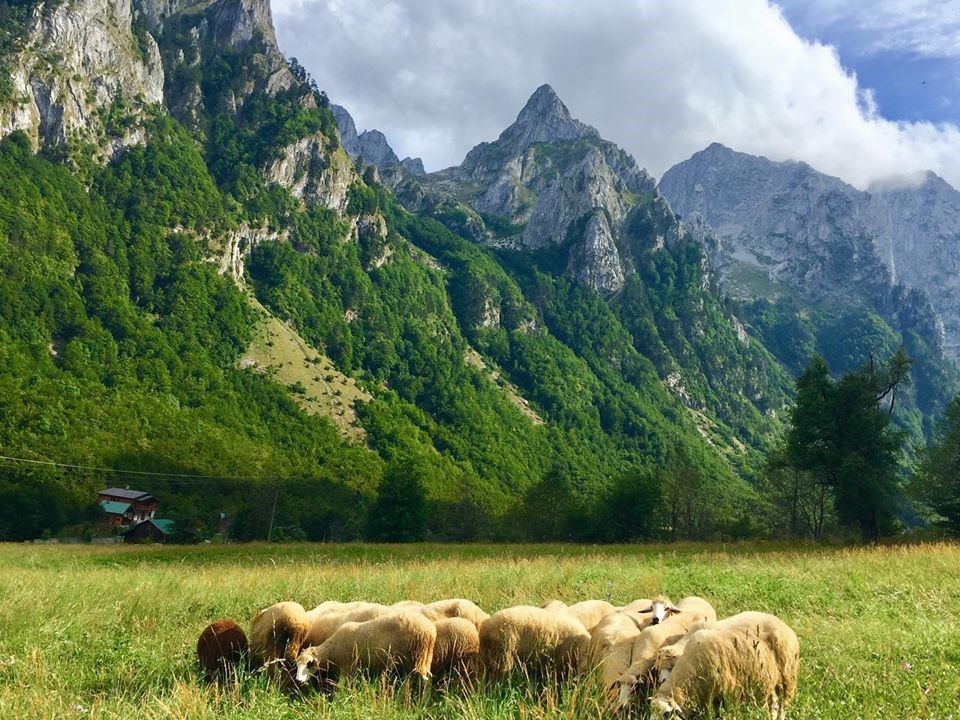
Grebaje Valley. Photo credit: Tadeja Leskovšek
A great place to stay in Grebaje valley is katun Maja Karanfil. In their restaurant, you’ll be served traditional dishes while overlooking the unique amphitheatre of Grebaje peaks. They also provide accommodation.
Evenings can be spent in relaxation in Grebaje valley. The valley is a nice spot for easy evening walk, jogging or meditation.
DAY 5
Departure to Kosovo
Before crossing the border, it’s nice to stop for a coffee in the old town of Rožaje in Montenegro. If you have enough time, we recommend a short walk to nearby mountain Hajla which is known for beautiful flowery meadows.
Visit to Deçani / Dečani Monastery
Visoki Dečani Monastery is UNESCO World Heritage site, one of the most amazing cultural tourist attractions in the cross-border area between Kosovo and Montenegro. The monastery was founded in the first half of the 14th century by the king Stefan Dečanski. Beautifully decorated high walls of the church together with its other treasures are very impressive.

Visoki Dečani monastery. Photo credit: Tadeja Leskovšek
Lunch in kulla in Drenoc
“Kullahopping” is another unique experience that can be tried out in Deçani / Dečani. It’s about visiting “kullas”, traditional tower houses, in villages Drenoc and Isniq. Some kullas are specialized, such as mill kulla or Osdautaj kulla in Isniq.
Osdautaj kulla also offers accommodation and features a small museum of traditional costumes and agricultural tools. There, you can meet one of the last artisans, preserving unique local weaving tradition.

Weaving master from Isniq. Photo Credit: Shkumbin Spahija
If you’re a fan of historical artefacts, we recommend to visit Kastrioti Ethno Museum in Deçani / Dečani. For over 20 years, the passionate owner of this simple museum has been collecting precious historical pieces. Altogether, more than 1,000 objects are displayed, including a 5,000 years-old ancient stone artefact of special value.
Accommodation in Deçani / Dečani
DAY 6
Exploring Mountains around Deçani / Dečani Valley
After a hearty breakfast, it’s time to explore mountains around Deçani / Dečani valley. The area is rich in biodiversity with a total of 750 plant species, of which 18 are endemic.
One of the best hiking trips starts from Zalli Rops to Qafa Bogiqe (2,090 m) which lies at the border line between Kosovo and Montenegro. From there, you can climb to the summit Maja Rops (2,501 m) and descend back. During this trip you will hike a segment of the renowned Via Dinarica mega trail. This hike is 15 km long and it will take 6 hours. Another option is to cross the border and continue downhill to Katun Bogicevice in Montenegro.
For skilful mountaineers, hiking Maja e Gjeravicës / Gjeravica is a must experience. With the elevation of 2,656 m, it is the highest mountain peak in the cross-border area between Kosovo and Montenegro and the second highest in the entire Dinarica mountain range. Several glacial lakes can be found near the summit, such as Gjeravica Lake / Liqeni i Gjeravicës, the highest mountain lake in Kosovo located just under the summit of Gjeravica peak. It is also known for salamanders which feast on flying insects. The scenery at the top of Gjeravica is spectacular.

The view from the top of Gjeravica on the glacial lake in the shape of a heart. Photo Credit: Kosovo Mountaineering and Alpinists Association
Mountaineering guides can be found in regional tourism centres. There are several options to access Maja e Gjeravicës / Gjeravica, one is from Deçani / Dečani and the other is from Gropat e Erenikut. The route from Gropat e Erenikut takes about 4-5 hours, while the route from Deçani / Dečani, in a total distance of around 14 km, takes 8 hours. There’s also an option of combining the two routes, by starting in Deçani / Dečani and finishing in Gropat e Erenikut or the other way around.
Gjeravica is accessible in all seasons. One has to be in good shape and needs the appropriate gear. If a challenge is what you’re after, give Gjeravica mountain a try in winter.
Two other interesting hiking trips from Deçani / Dečani valley are:
1. Bjeshka e Prilepit (2,150 m) – Marijash – Shkallet e hajnave – Roshkodol, 12 km, 7 hours;
2. Bjeshka Beleg (2,365 m) – Krshi Bletës – Maja Madhe – Bjeshka Beleg, 10 km, 6 hours.
In summer, you can spend the night in a simple hut in the mountains. Kind and generous shepherd families will provide a delicious organic meal. Unforgettable!

Mountain vibes around Deçani / Dečani. Photo credit: Perla e Dukagjinit
DAY 7
Visit of Peja / Peć major attractions
Peja/Peć offers variety of attractions for culture and nature lovers.
Culture enthusiasts might want to start the day by:
• Visiting regional ethnographic museum, a renovated and reallocated home of Tahir Beg in Peja / Peć, one of the most beautiful medieval houses in the city.
• Visiting Haxhi Zeka Mill – the mill was the tallest building in Peja / Peć when it was built. It was the first mill in Kosovo and in the wider region which had the most advanced electrical technology brought in from Austria. The mill initially used water for its power source, but soon switched to electricity.

Haxhi Zeka Mill. Photo credit: Tadeja Leskovšek
• Meetings with local masters of traditional crafts
Meeting a handicraft master who still makes traditional plis is a unique experience. Plis is a white woolen hat traditionally worn in Kosovo. Wearing this hat requires special care. It must be kept white at all times! The height of the hat varies region to region and is part of the traditional local costume. Its style is thought to originate from a similar one worn by the Illyrians.
Filigree masters – there’s only a handful of artisans that keep a centuries-old tradition of handmade filigree jewelry alive in Peja/Peć in Kosovo. Artisans spend hours curling fine silver threads into sophisticated necklaces, earrings, rings, bracelets. Kosovo is one of rare places in Europe where this delicate lace-like kind of jewellery making tradition still exists. In the past, the area had its own silver mines and artisans had plenty of raw material to work with. Now, it is mainly imported, but filigree still holds special place in traditional wedding ceremonies.
If you’re more of a nature lover or adventurer, you might want to spend the morning in Rugova valley.
Rugova Canyon is a place of great natural beauty. It is considered to be one of Europe’s longest and deepest canyons, reaching a depth up to 1,000 meters. The canyon has been declared a protected monument of natural heritage due to its geological, speleological and botanical values. With numerous hiking possibilities, with amazing “Tibetan Bridge” (41 m of length and 60 m of height), a spectacular zip line and via ferrata, it is also one of the best destinations in Kosovo for nature lovers and adventurers. Visit tourist centre in Peje/Peć for more information.
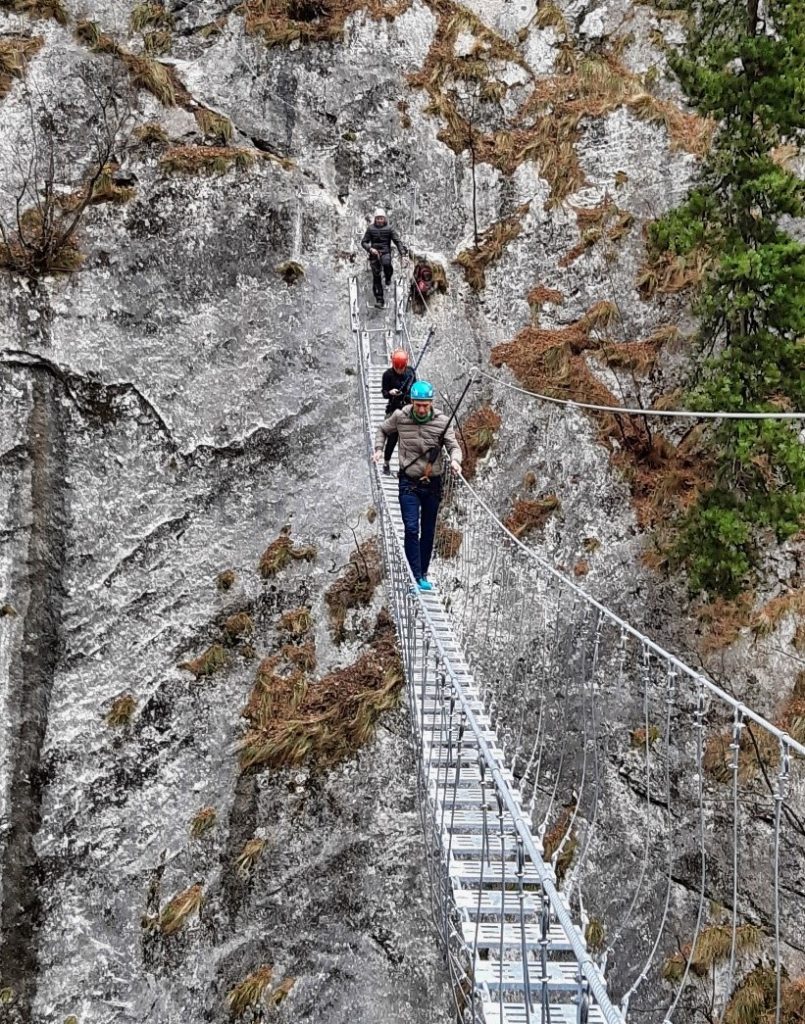
The “Tibetan Bridge” is currently the longest bridge of this type in the Balkans. Photo Credit: Shkumbin Spahija
Departure to Gjakovë / Đakovica
A short drive through the Dukagjin / Metohija plain will take you to Gjakovë / Đakovica. The plain covers 35% of Kosovo’s total area. Several small rivers flowing along the valley provide water for irrigation. In combination with mild Mediterranean climate, this fertile land provides excellent conditions for wine making, growing of vegetables, chestnut and almond trees. Fruit orchards also adorn the area.
Recent world events related to coronavirus reminded us of the exceptional value of local food supply. At Jupa’s Restaurant, they will bring all local flavours to your table.
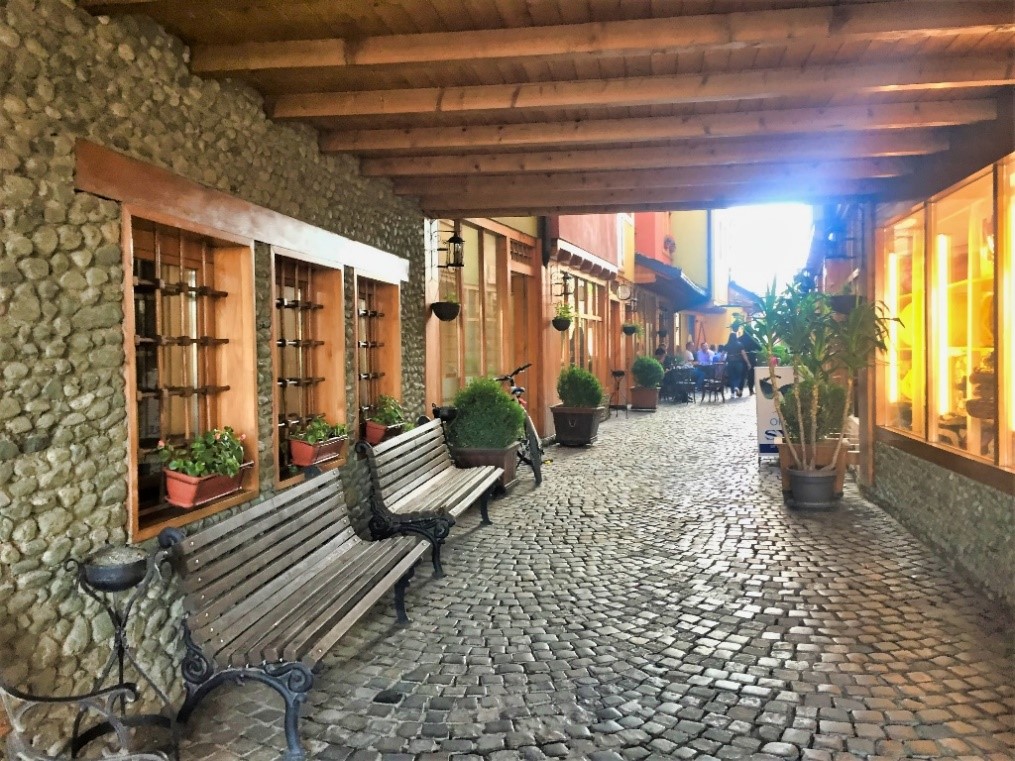
Gjakovë / Đakovica old town. Photo credit: Tadeja Leskovšek
Walk through the Gjakovë / Đakovica old town
You can start exploring the city by visiting its major cultural attractions, such as: Tabaku Bridge and Hadumi mosque complex, including its rich library.
Gjakovë / Đakovica old town is a great place for socializing. Either for a morning coffee, lunch or late-night stroll, the old town never disappoints. Locals are famous for their unique sense of humour. Stand-up Comedy Festival is taking place here in summer. Though it may be small, the city of Gjakovë / Đakovica knows how to make an impression.
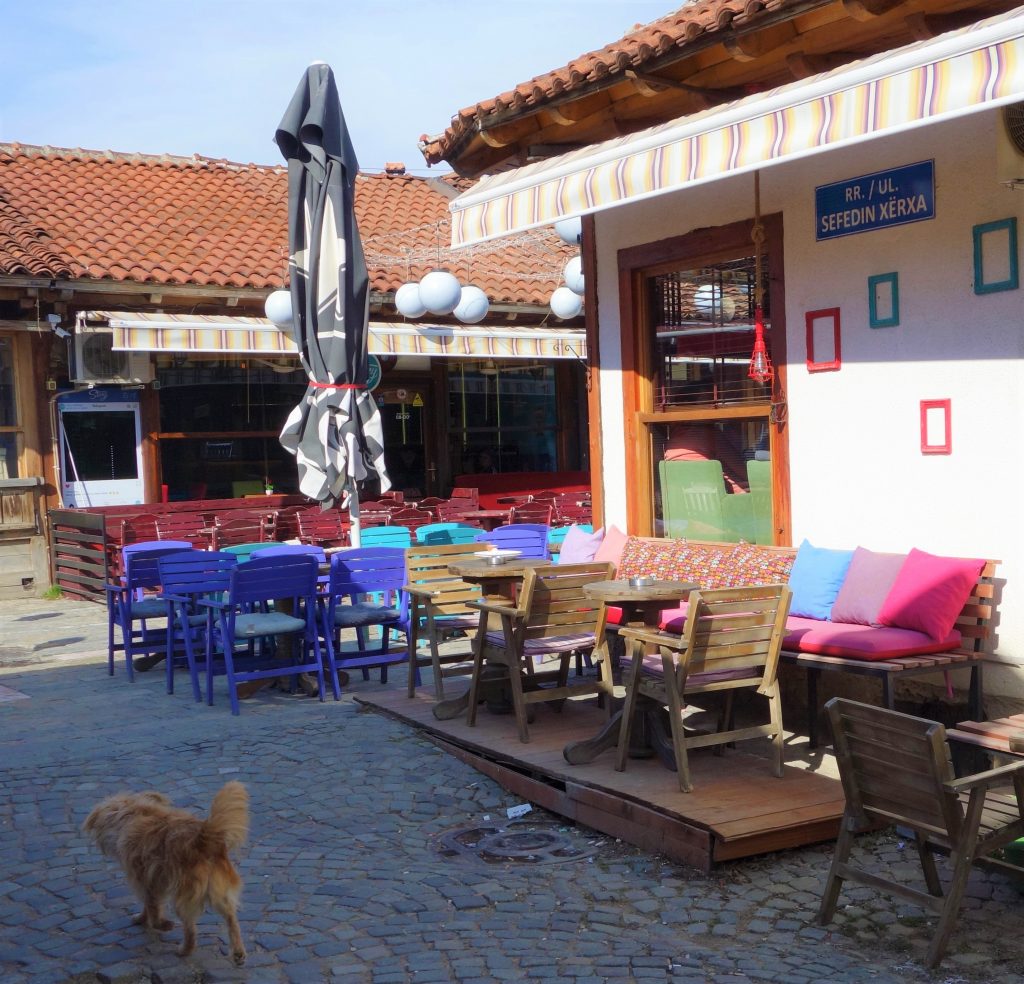
Gjakova / Đakovica old town. Photo credit: Tadeja Leskovšek
Accommodation at Hotel Carshia e Jupave Inn, located in the very heart of Gjakovë / Đakovica old city. This tastefully designed hotel is retaining the local traditional character with a touch of warm contemporary design.
DAY 8
Morning biking around Junik
Bicycles can be rented at Regional Tourism Centre Dukagjin in Junik.
Visit to Tekke of Alijjei – Halvetije Xhaferije Tariqa (Teqja Amë e Tarikatit Alijjei – Halvetije Xhaferije) in Junik
Tekke is a religious building of the Islamic Sufi brotherhood. It belongs to the Khalwati order (also known as Khalwatiya or Halveti). Sufis are recognised for inspiring whirling ceremonies, aiming to reach the source of all perfection through listening to the music, praying and spinning in repetitive circles. The whirling has been seen as a symbolic imitation of planets in the Solar system orbiting the sun.
The main public whirling ceremonies take place in January, March and August. They also organise small public whirling ceremonies every Friday at noon.
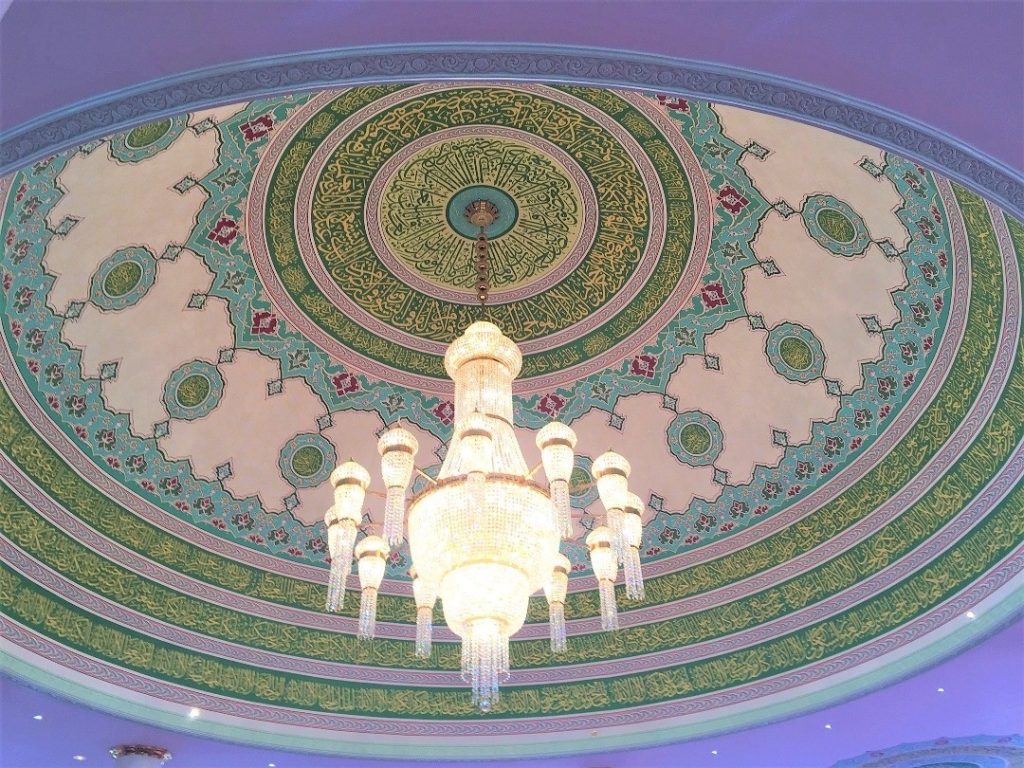
Tekke of Alijjei – Halvetije Xhaferije Tariqa. Photo credit: Tadeja Leskovšek
The Accursed mountains will give you plenty of opportunities to be pleasantly exhausted after a good hike in pristine nature, spiritually uplifted or charmed by local people. Nevertheless, you will certainly enjoy this extraordinary experience of visiting one of the most undiscovered areas in Europe!
Written by Tadeja L. Colnar
Lalibela is one of Ethiopia’s most iconic destinations. The UNESCO enlisted rock-cut monolithic churches of king Lalibela have been built over 800 years ago. There are 11 churches located within this amazing cultural heritage complex.
Back in the early 4th Century, several Ethiopian ethnic groups were among the first ones that adopted Christianity. The four kings of Zagwe dynasty left some remarkable traces in ancient Ethiopia. The most famous of them was king Lalibela.
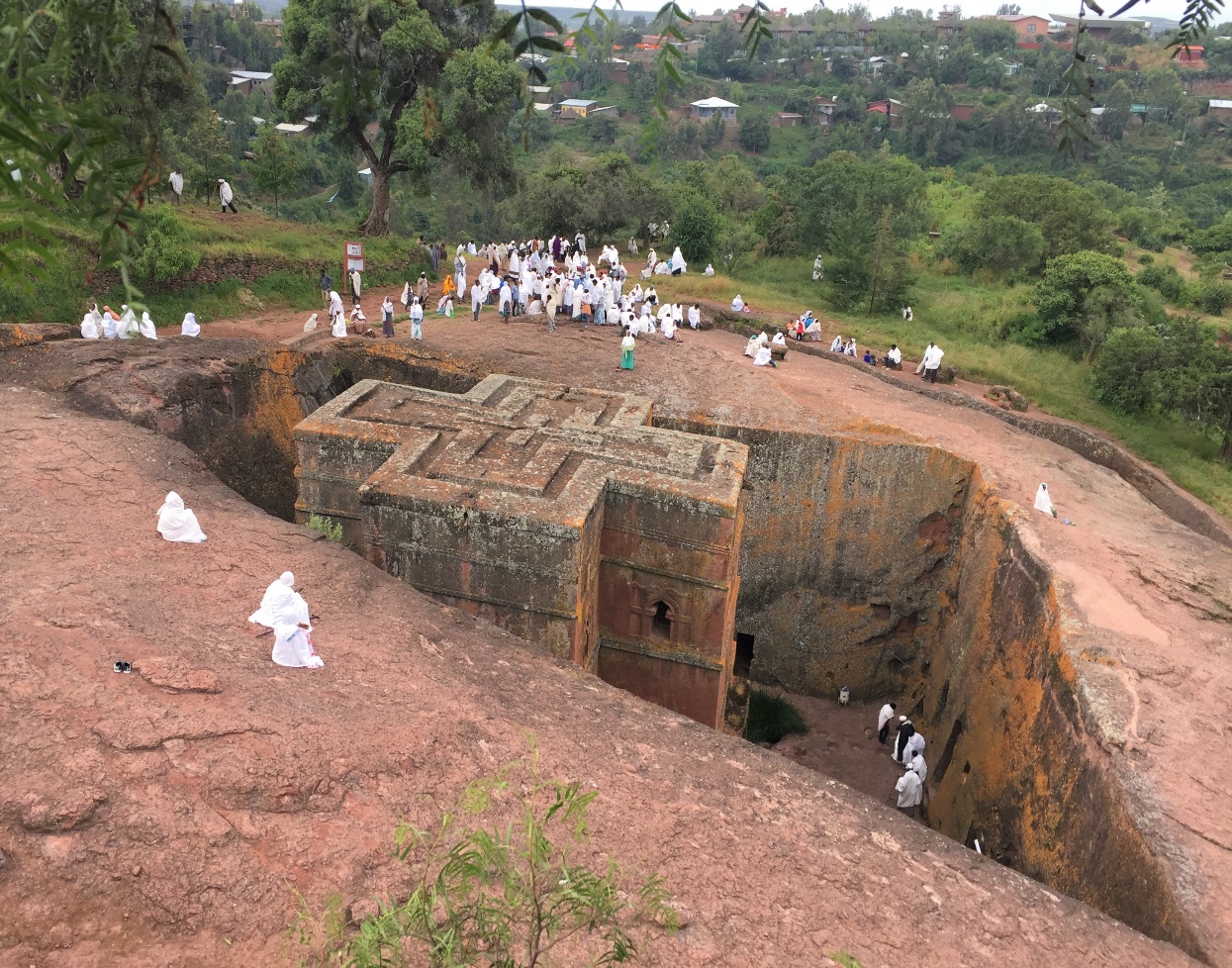
Festivals in Lalibela are immersive, wholeheartedly embraced by locals, rich in tradition, picturesque and vividly distinctive. In short, they are a must experience.
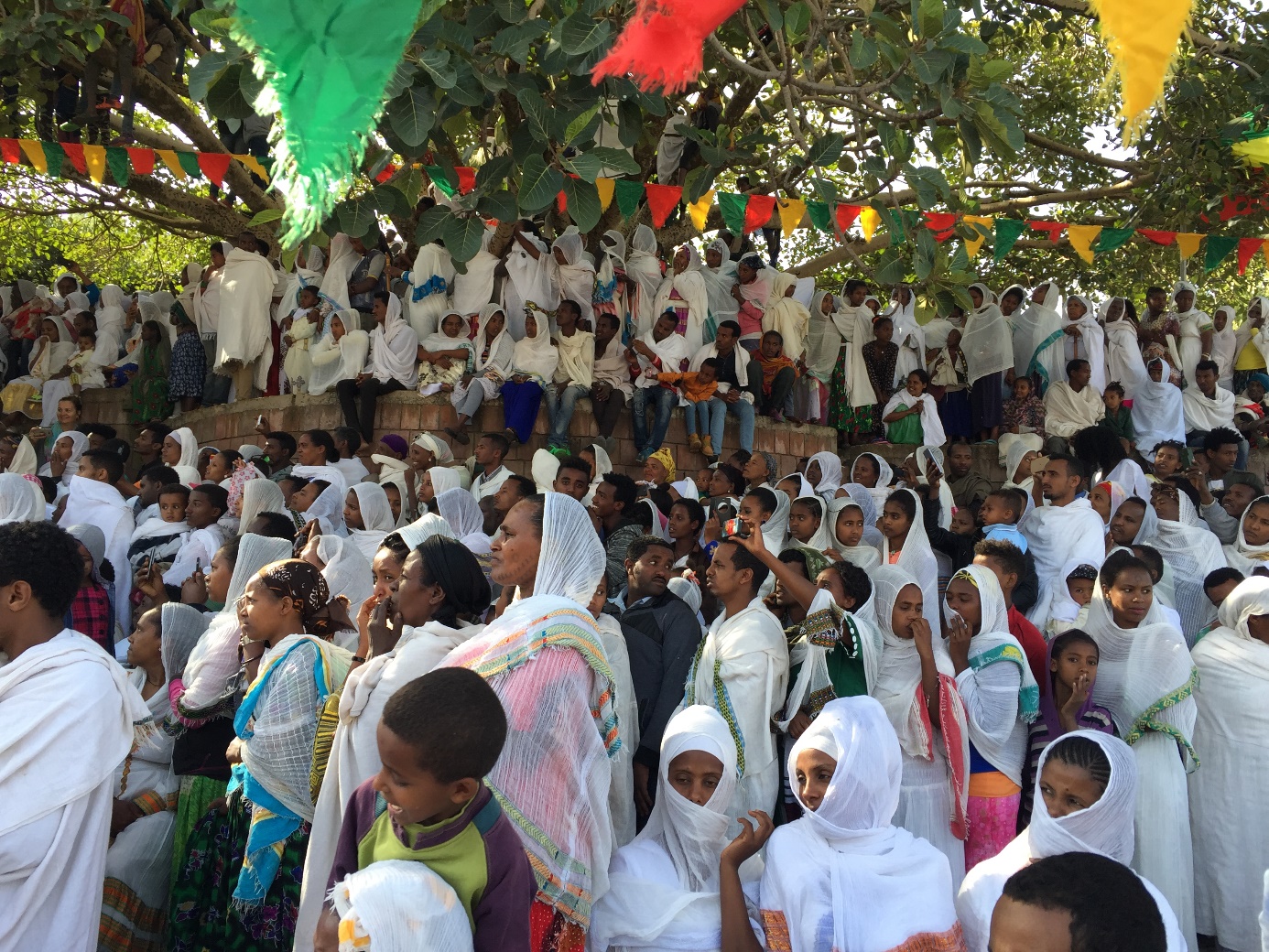
The legend says that all Lalibela churches were built by king Lalibela himself with the help of angels. An alternative interpretation by historians and scientists would be that it took anywhere between 10 to 40 thousand people to build 11 churches in 23 years.
These hand-crafting skills are still in the genes of Lalibelian people. Pottery makers, weavers, leather goods producers are spotted all around the place.
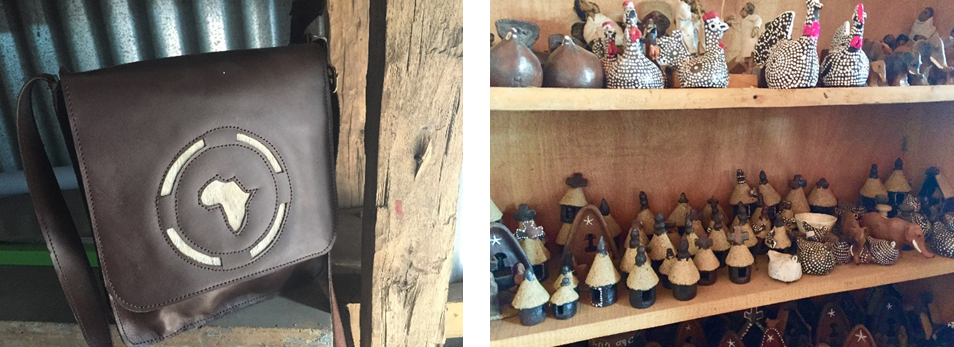 Leather products by Tadesse Crafts by St. Lalibela Association
Leather products by Tadesse Crafts by St. Lalibela Association
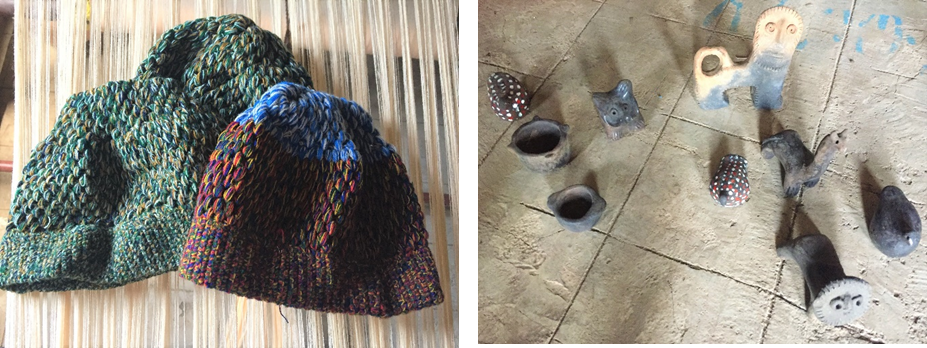 Handicrafts by Desta Association
Handicrafts by Desta Association
King Lalibela is also recognized for paintings which adorn some of the churches. Nowadays, Lalibela has an emerging art scene, waiting to be explored. We met numerous local painters who inspire with love and passion for their art.
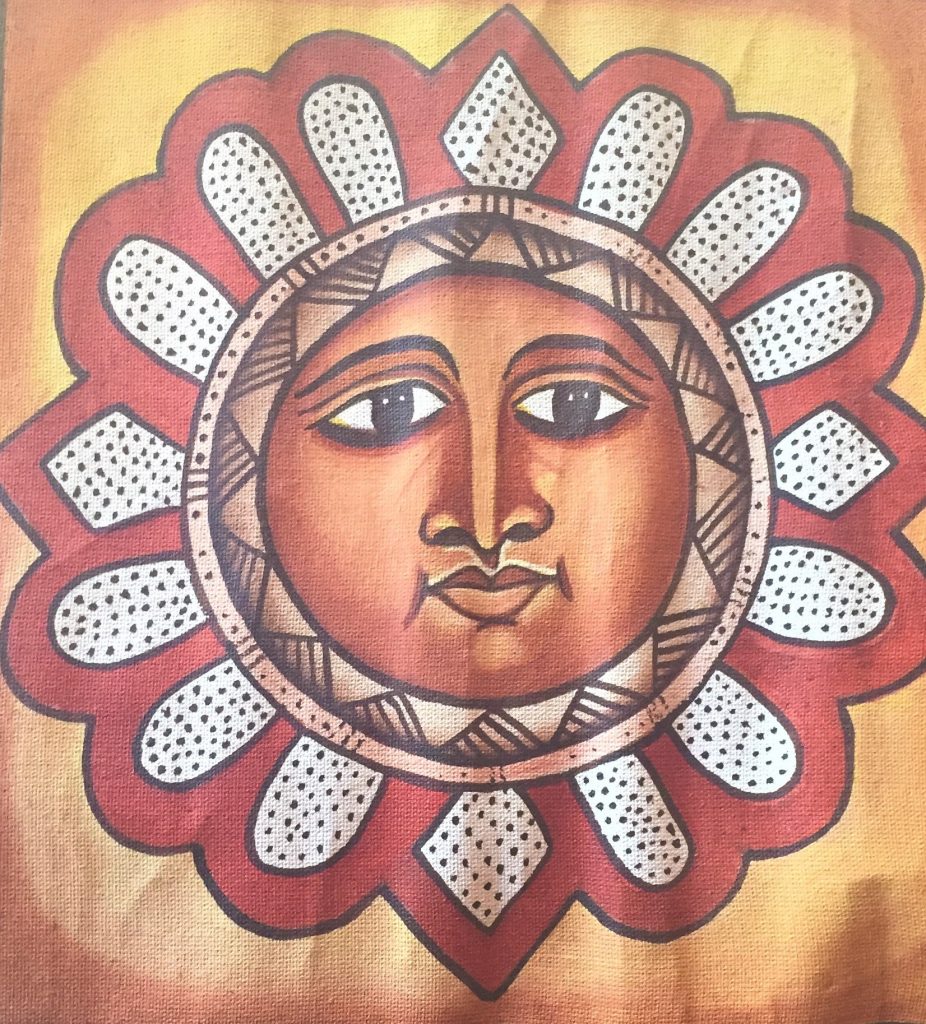
Art by Hailemariam Tadesse

Art by Smachew Mesfin
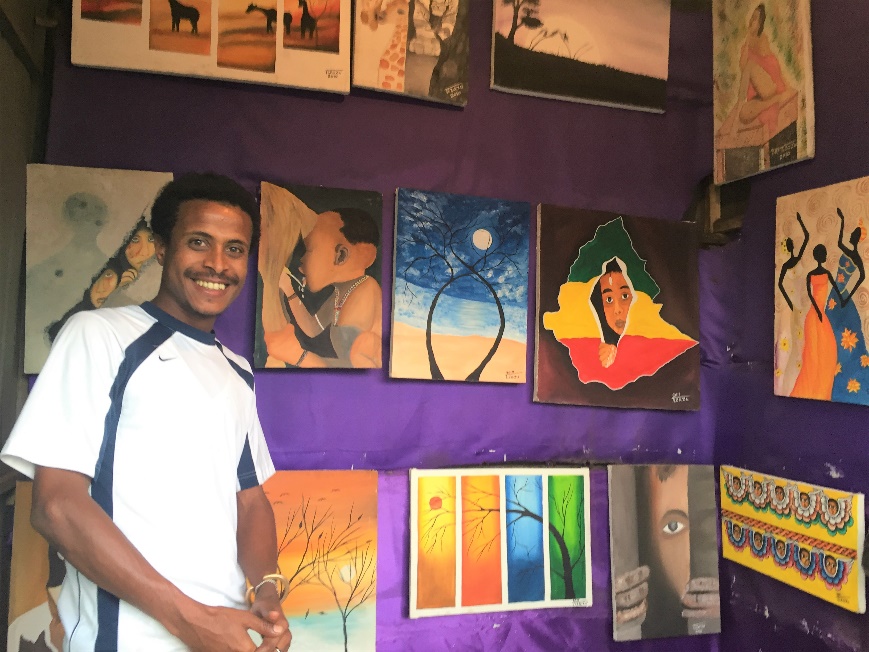
Art by Tizazu
A place with over 800 years of continuous spiritual ceremonies is almost impossible to find anywhere else in the world. Somehow, it seems that Lalibela is impregnated with peace, also reflected in local people.
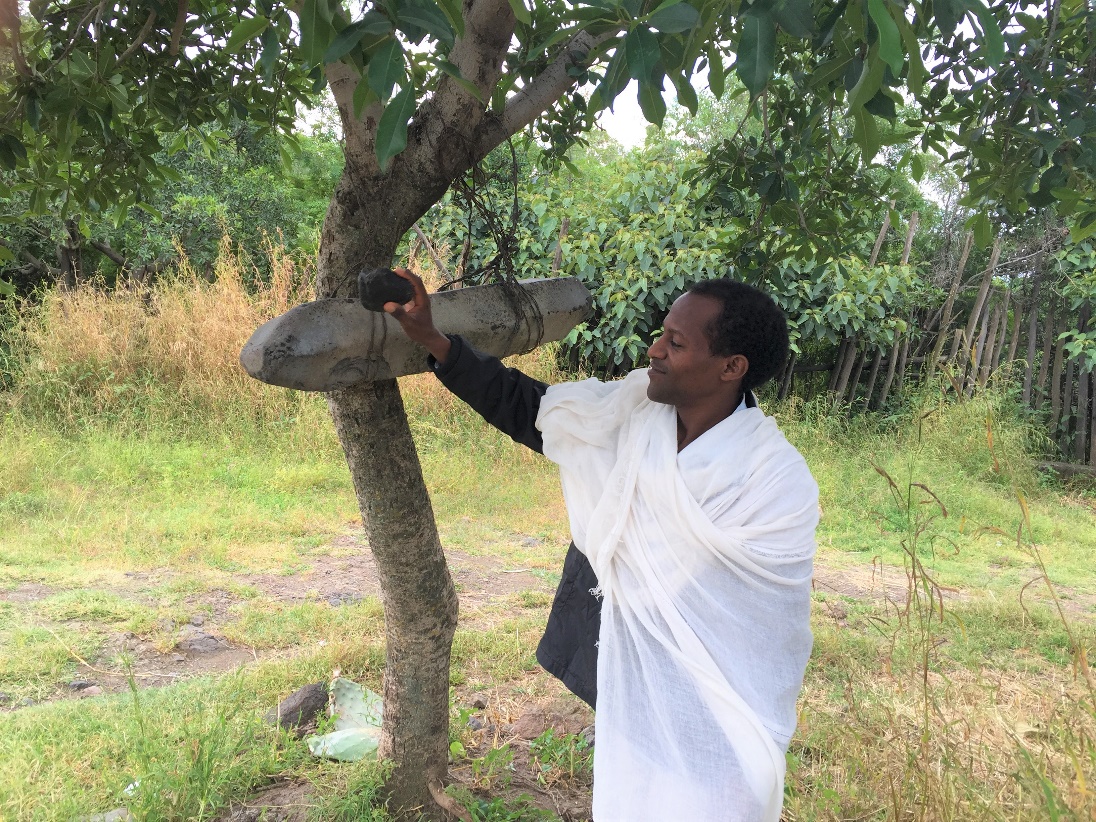 Our trusted guide Endayene Ayalew
Our trusted guide Endayene Ayalew
Though, this might change with further tourism development, we were particularly charmed by people of Lalibelia. Drivers, guides, hotel owners, receptionists, waitresses, artisans, people on the streets, young and old, most of them radiating unique calmness, kindness and warmth.
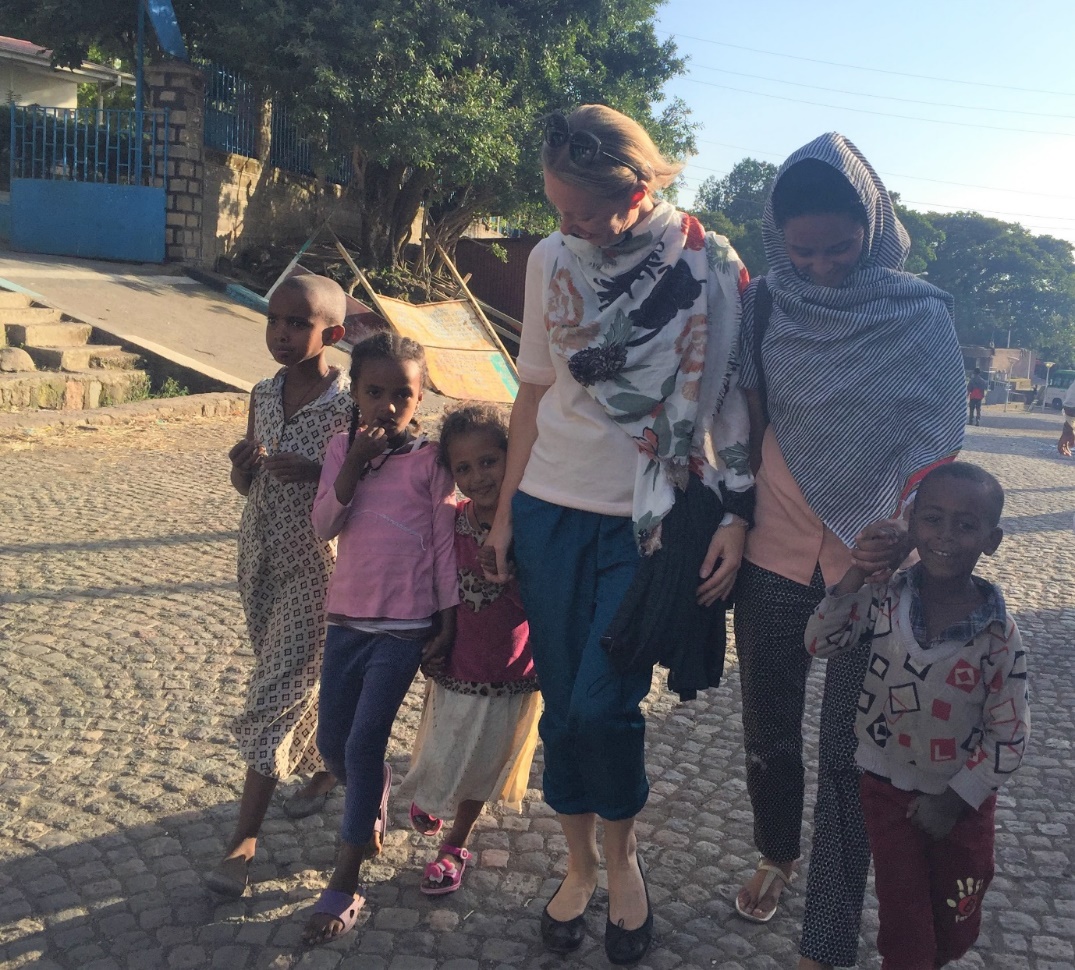
Outdoor enthusiasts will enjoy hikes to surrounding mountains, reaching over 3,000 m.a.s.l.. One of our favourites was the hike to Asheten Mariam church high in the mountains above Lalibela where king Lalibela’s prayers to locate the rock-hewn churches from his vision had been heard.
Nature paints each season in its own colours. After a rainy period, in September and October, the landscape turns green, while in the beginning of the year earthy brown colors dominate. Mainly uninhabited valleys look magnificent from nearby hills, witnessing spectacular performances of the sun and clouds.
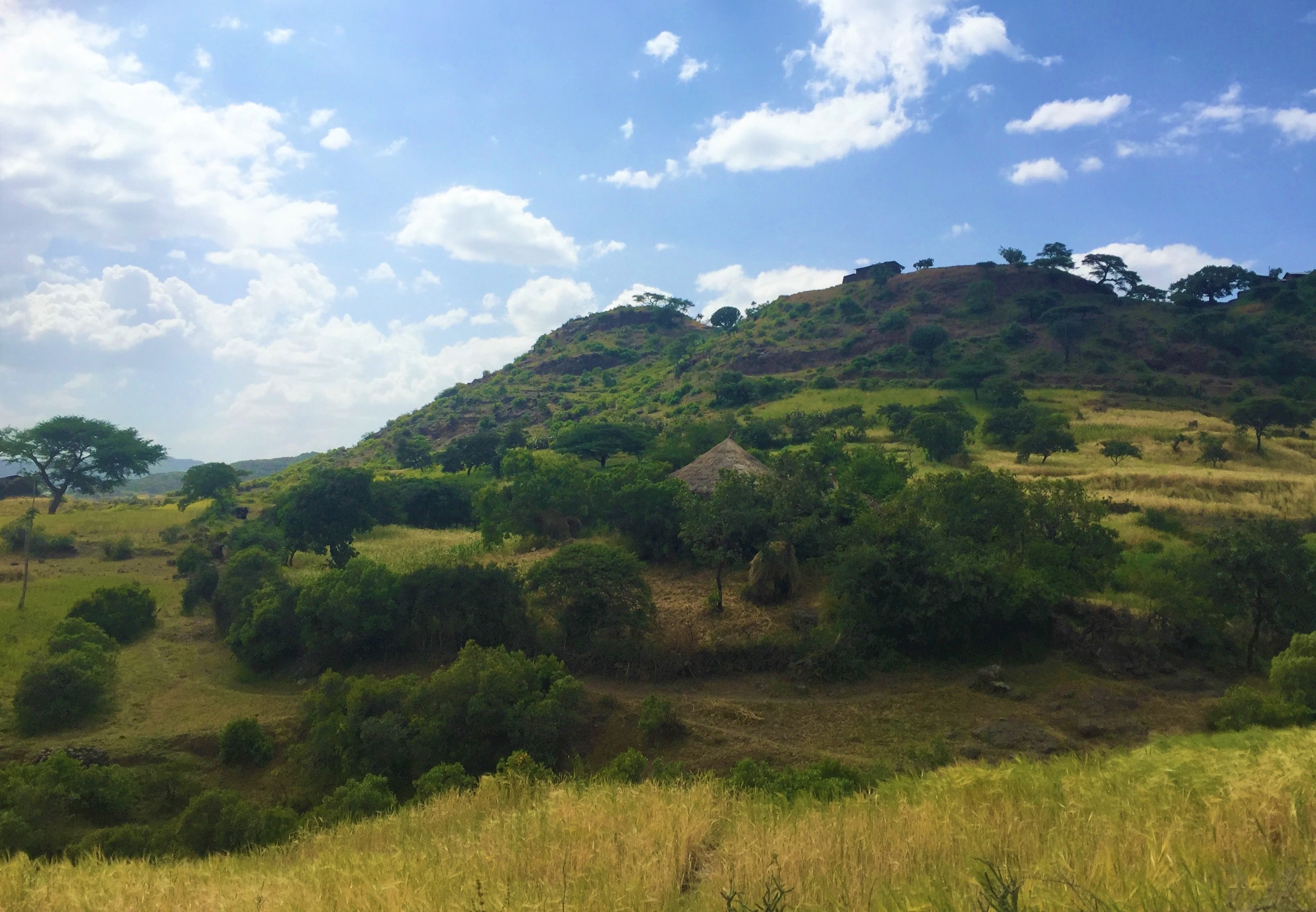
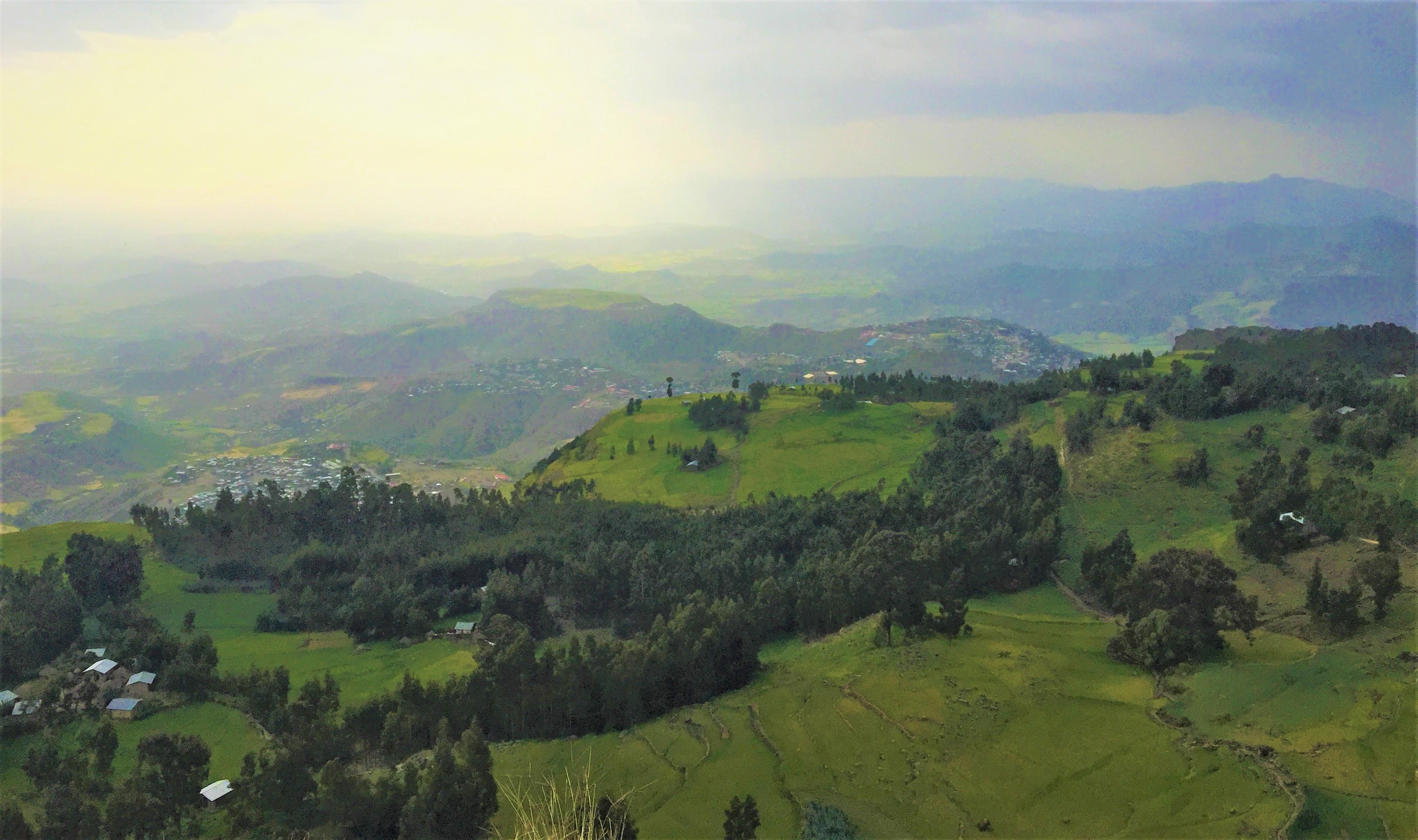
Ethiopia is known to be the biggest producer of honey in Africa and Lalibela is its honey capital. The land of “honey-eaters” which is the meaning of the word Lalibela, offers delicious varieties of honey in all tastes and colours, from near-white through yellow, gold, amber, dark brown, either liquid or creamed. Delicious!
We tried several simple street coffee shops, decorated with grass on the floor and incensed with a pleasant odour of burning wood. Their coffee was without any exception always tasty.
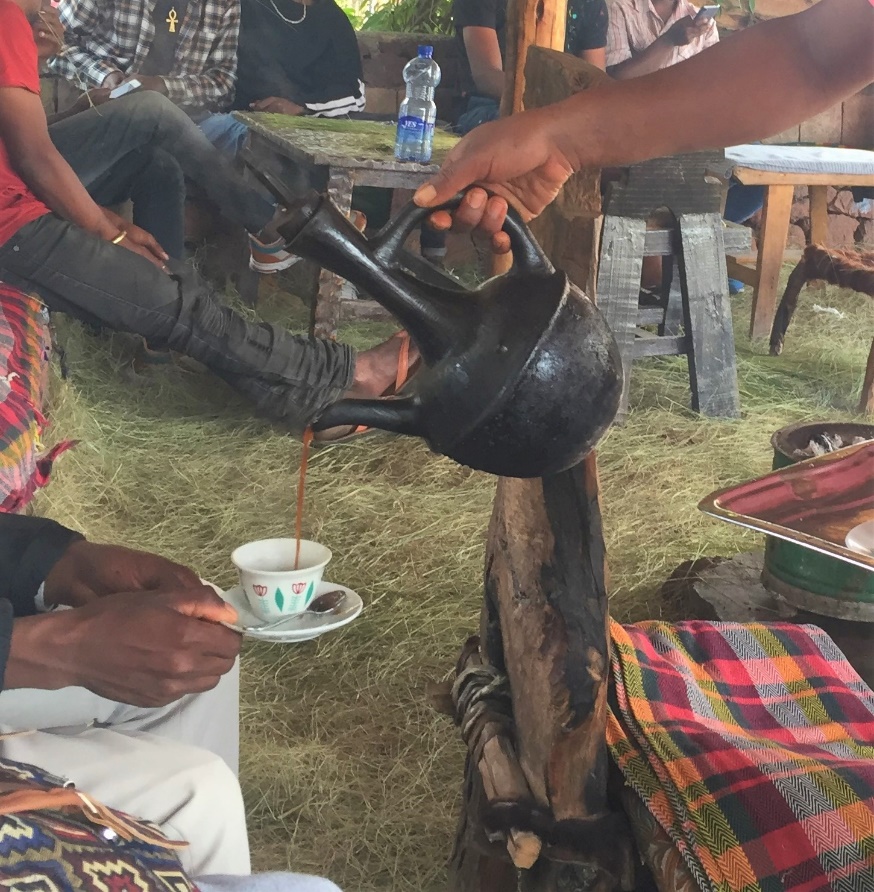
We were also lucky to enjoy local cuisine at Honey Land Hotel, made from fresh ingredients, served with care.
Lalibela is one of those rare places in the world where tourism is still truly authentic, where moments are savoured and where inner peace is a value!
Good to know:
There are several morning flights to Lalibela from Addis Ababa, operated by Ethiopian Airlines. Lalibela and Gondar are also well connected. Special discount can be obtained, if your international flight is operated by Ethiopian Airlines.
End of September is a good time for visiting Lalibela. After the rainy season, the landscape turns green. October is one of the peak seasons. Lalibela is also very popular among Ethiopians for Christmas celebrations in January.
Foreign visitors’ entrance fee of 50$ to Lalibela churches is valid for 5 days. To comprehend the amazing story behind the churches, it is highly recommendable to explore them with local guides.
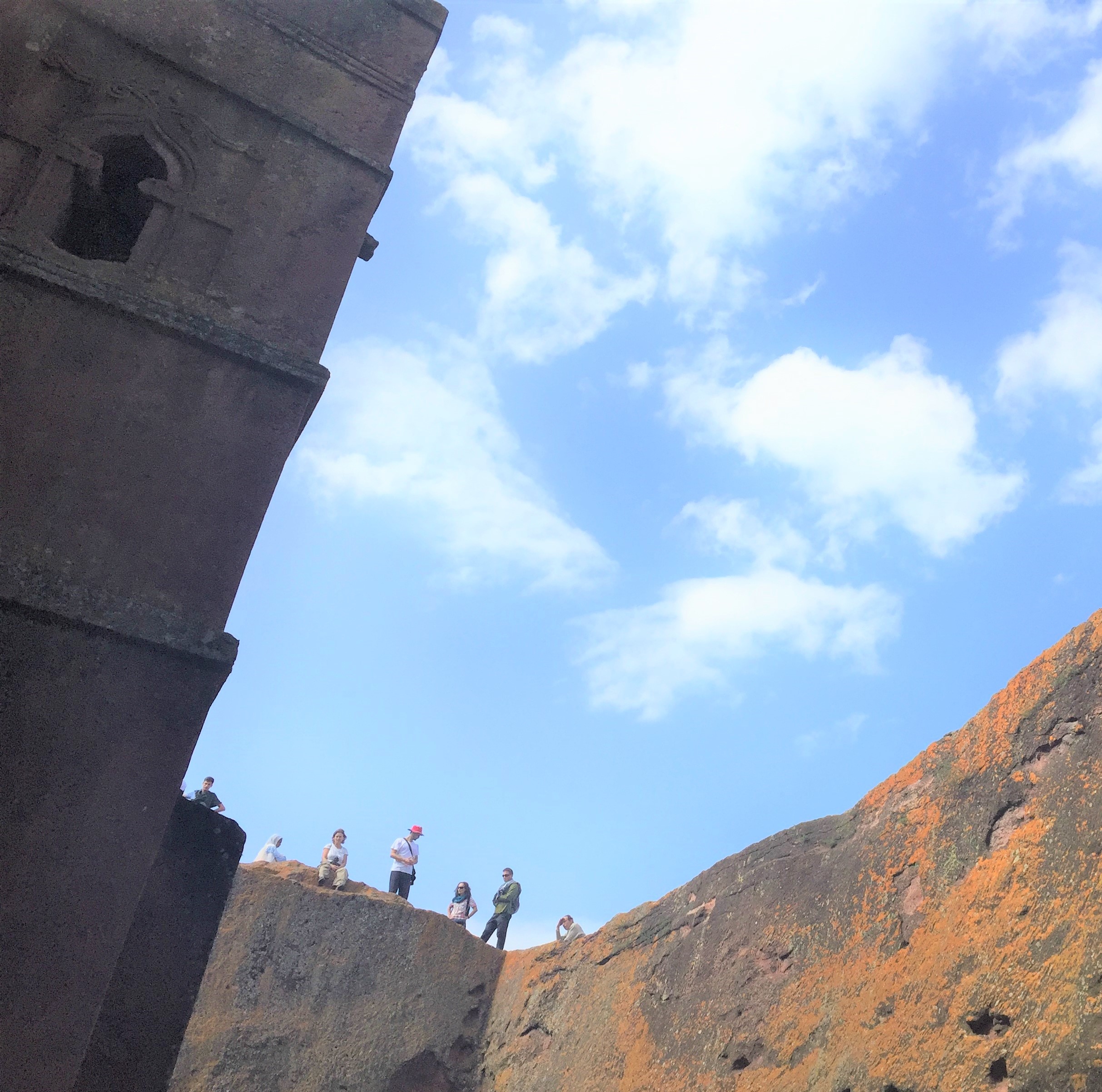
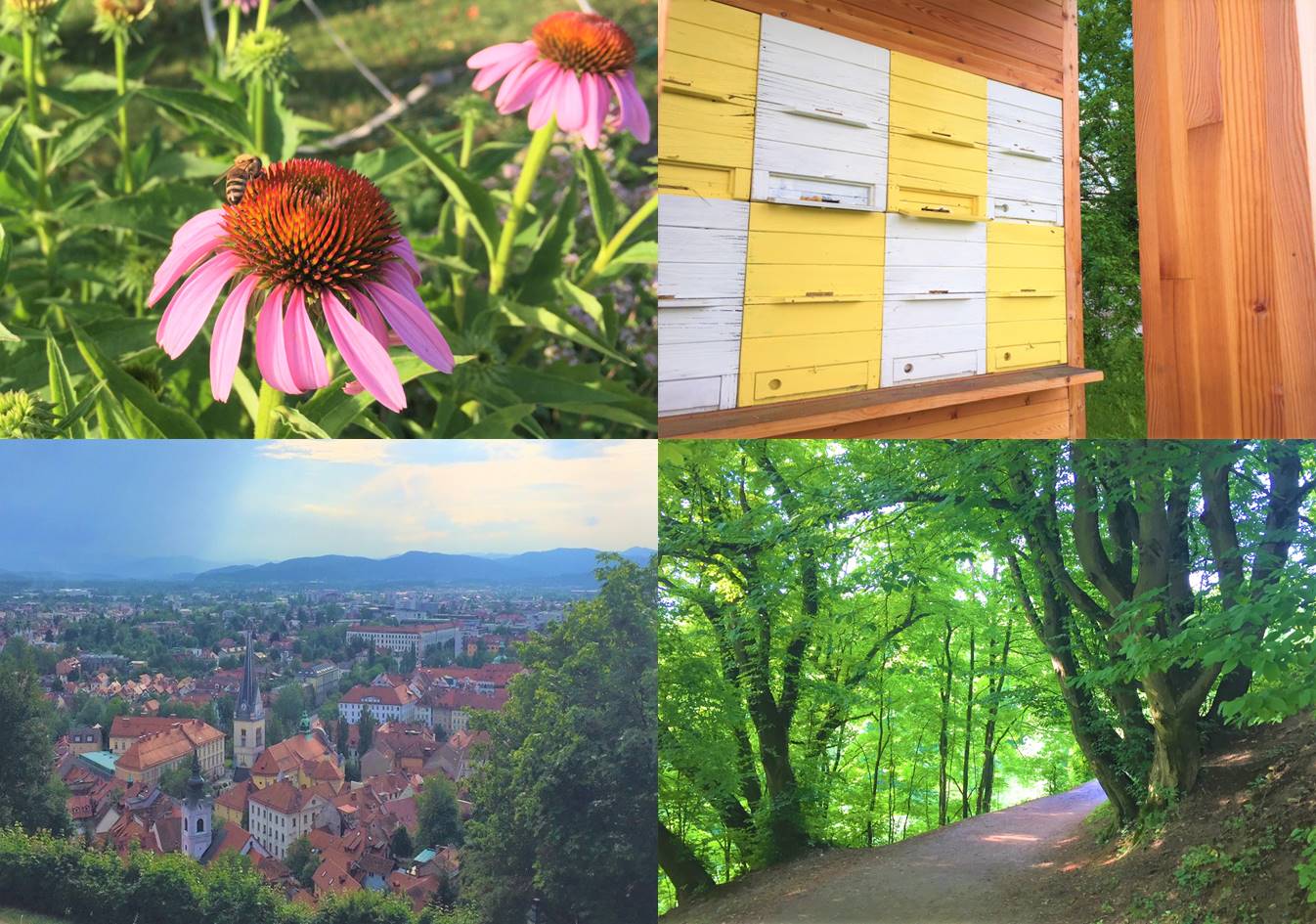
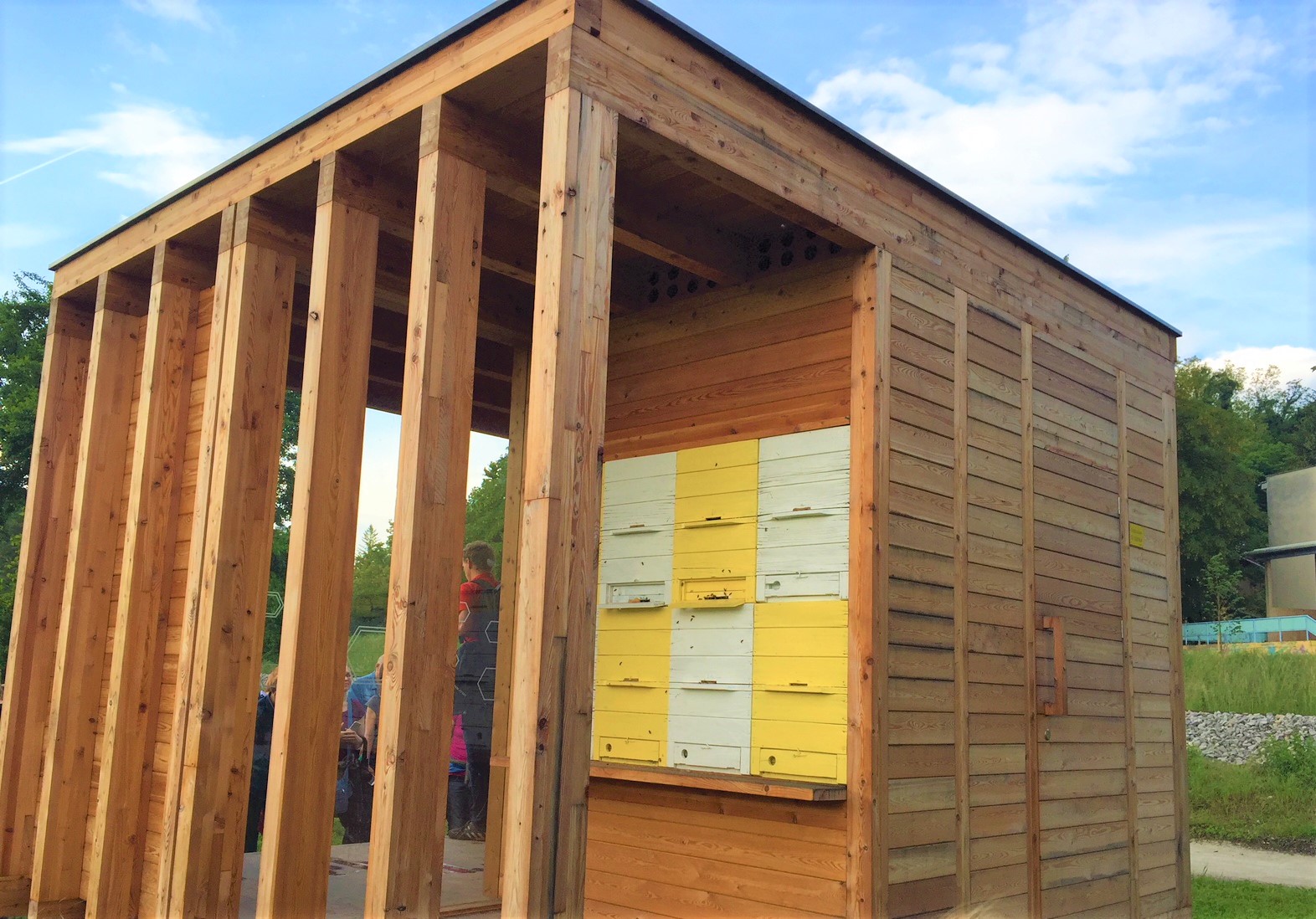
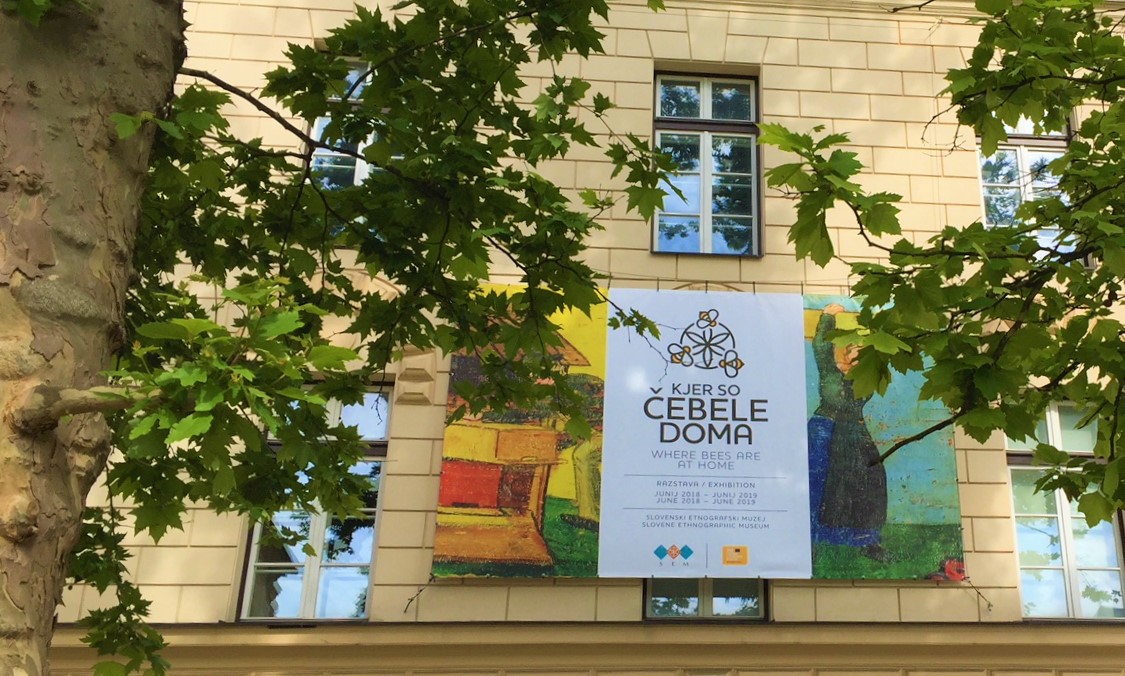
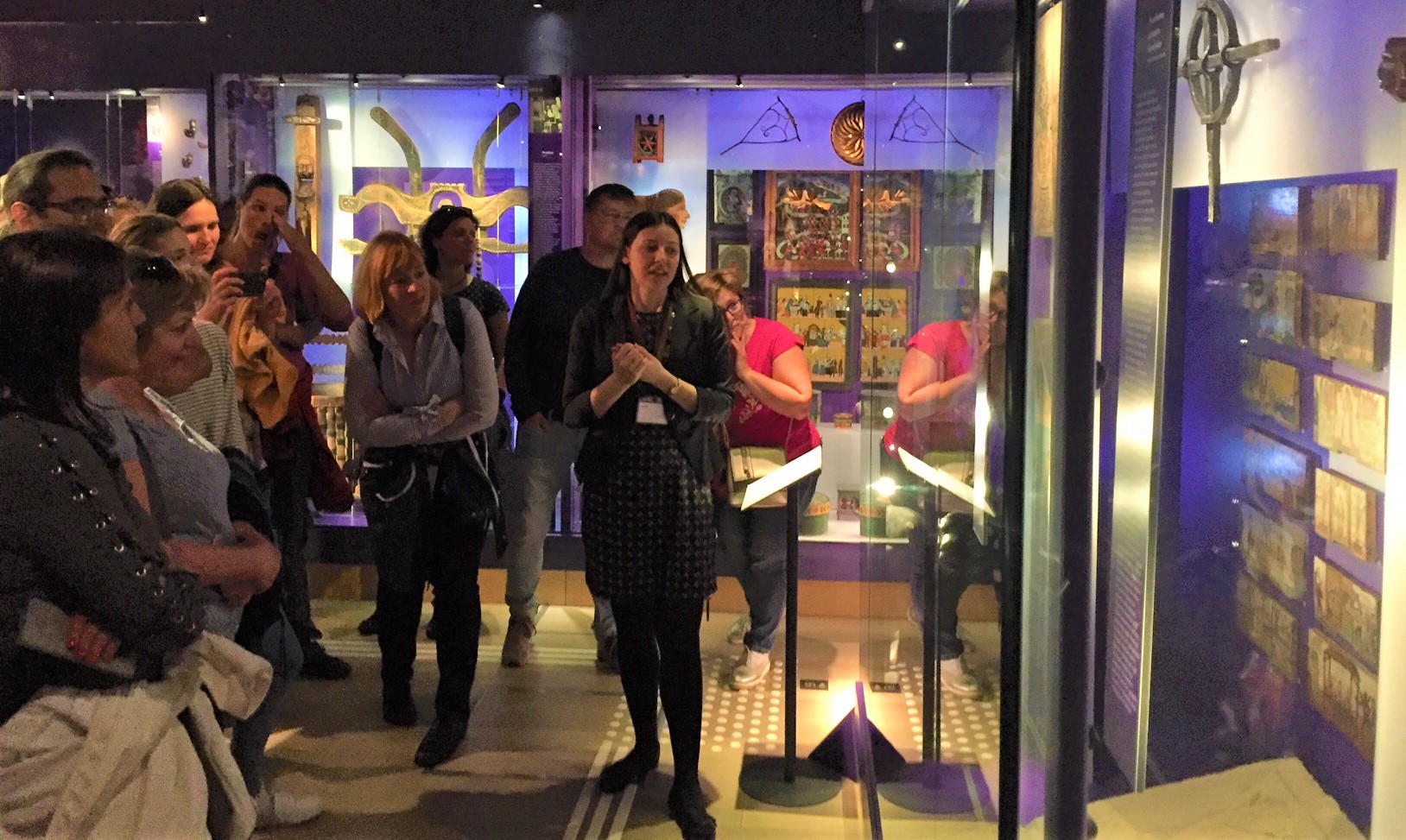
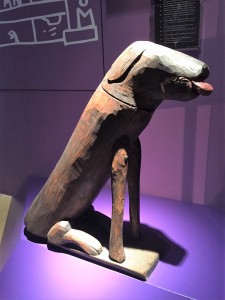
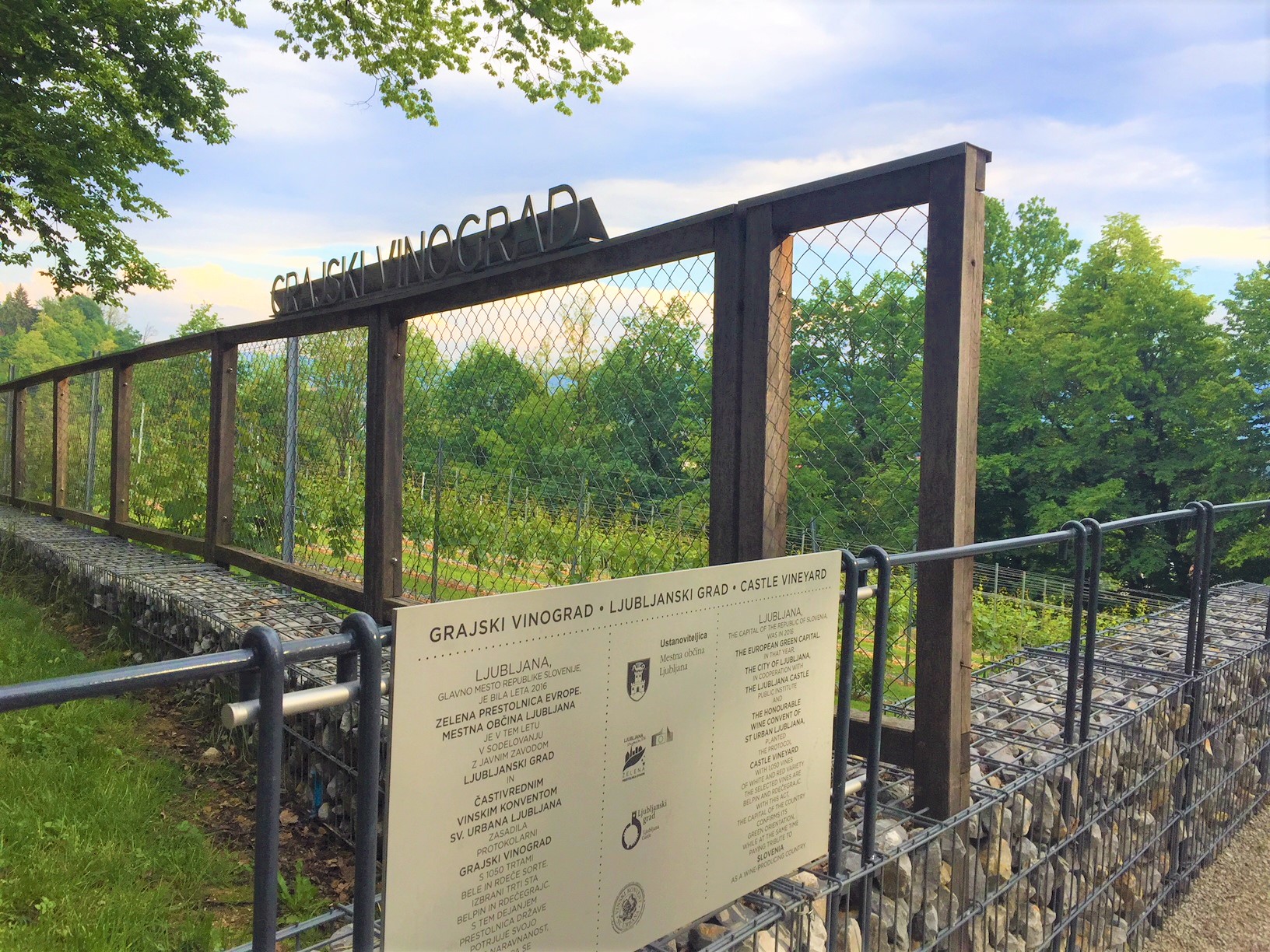
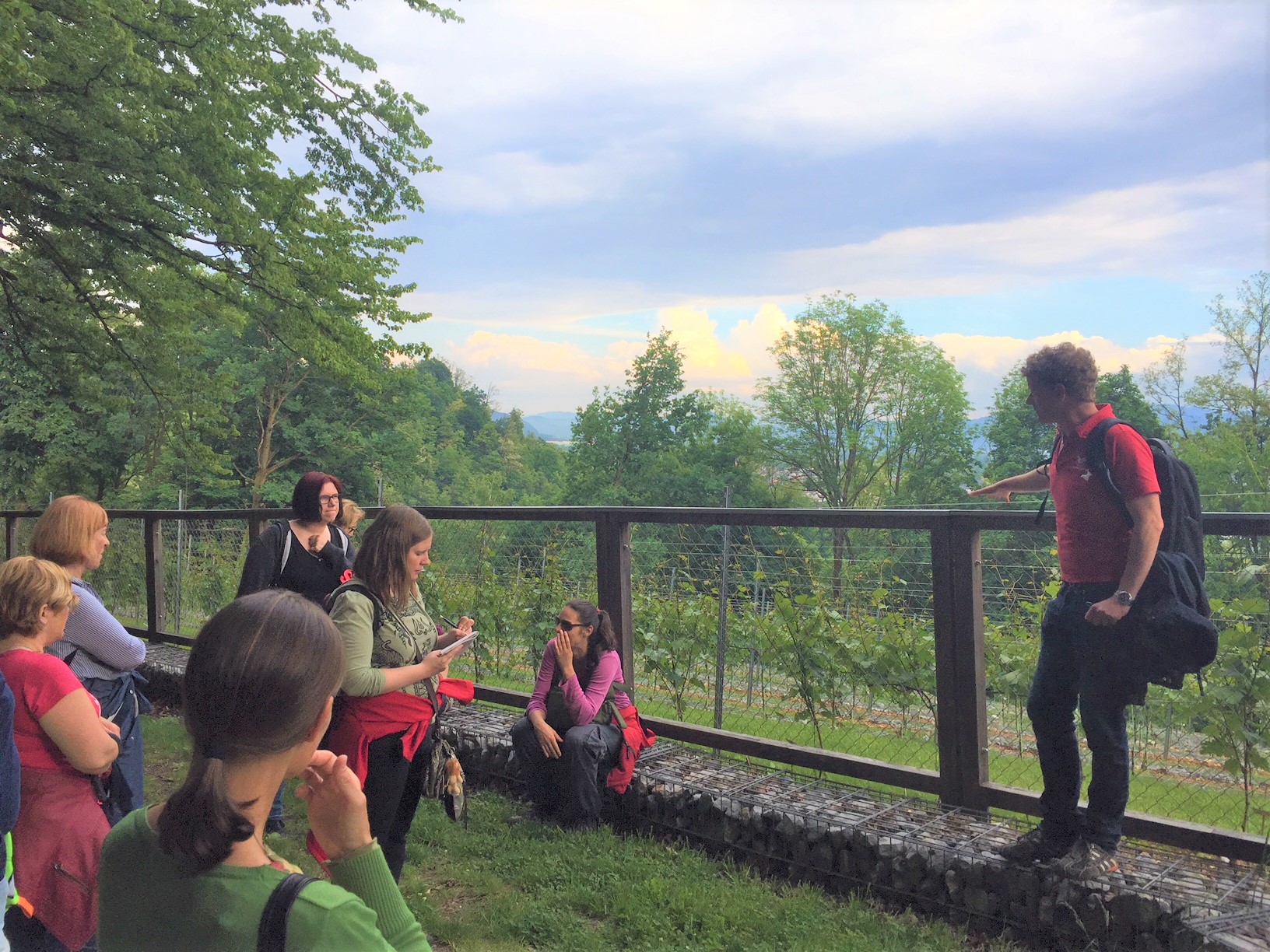
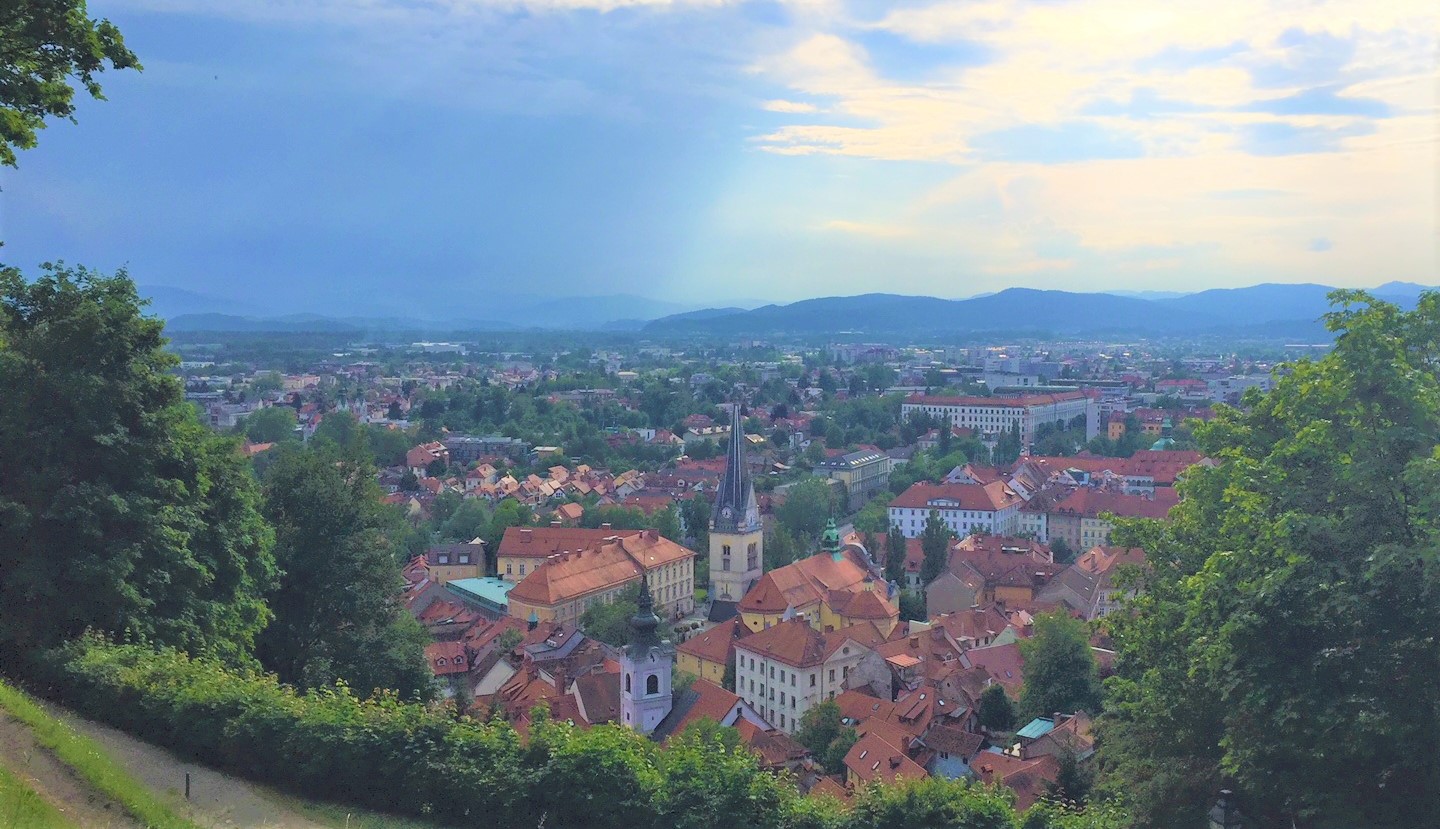
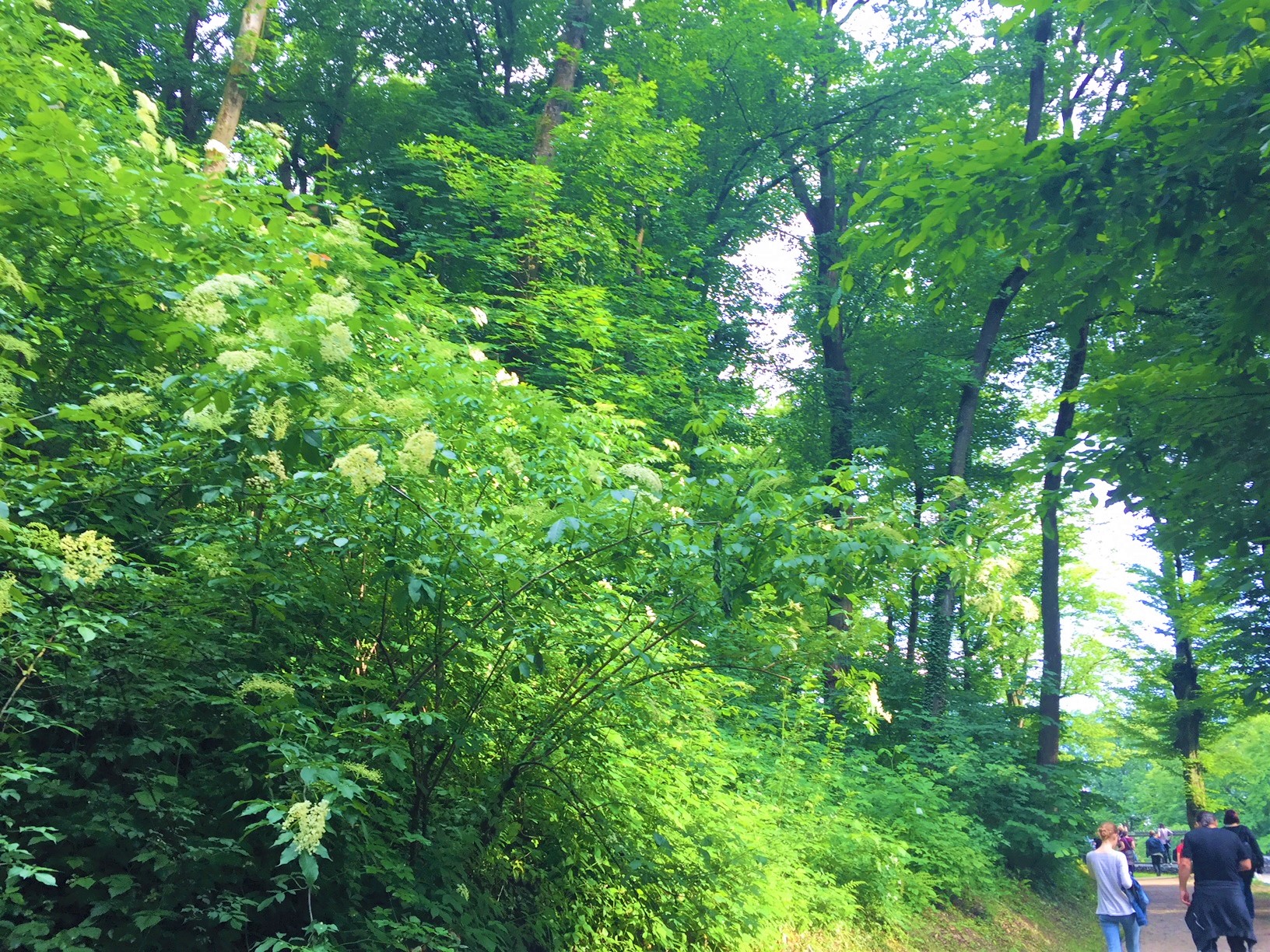
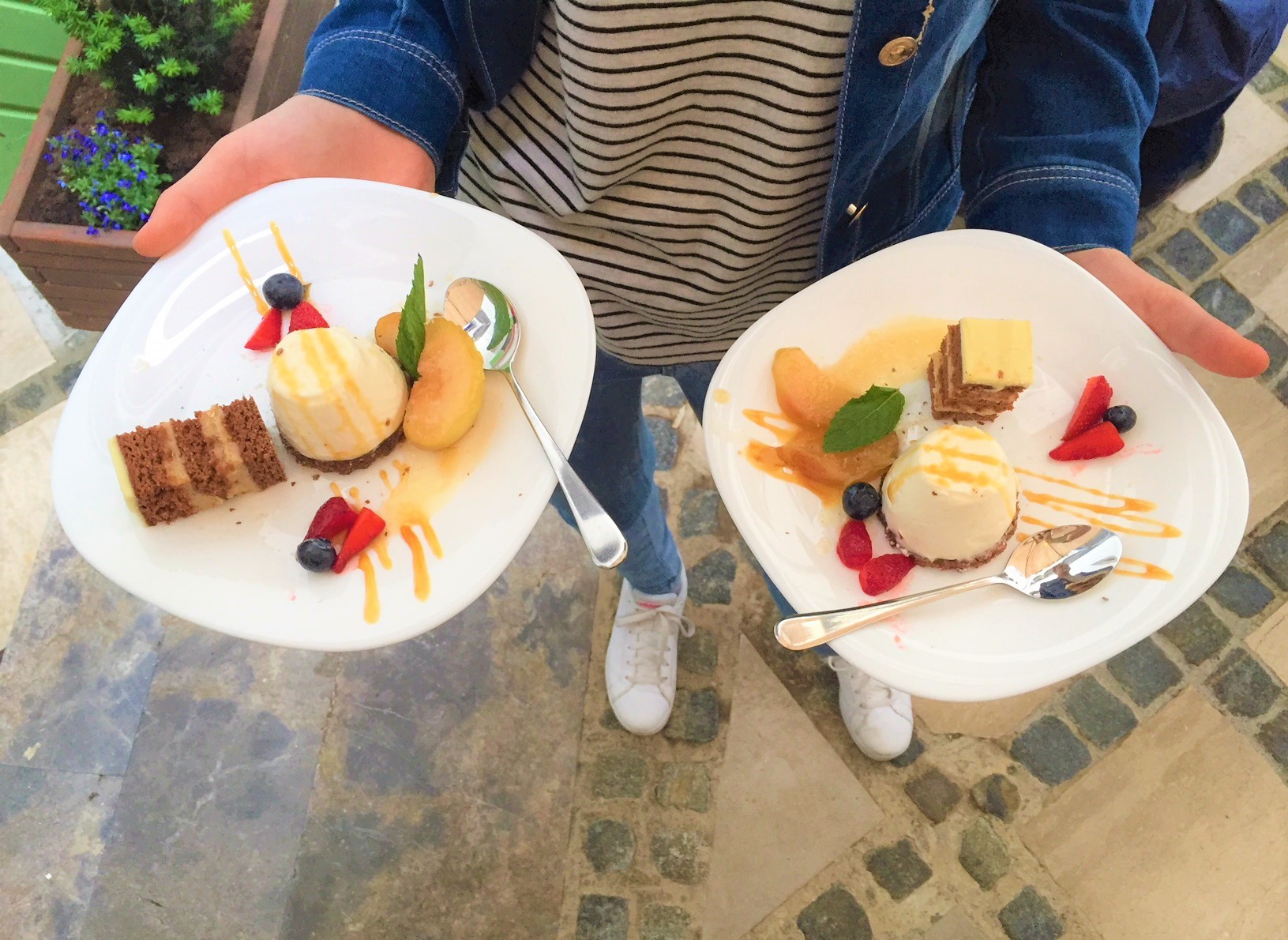
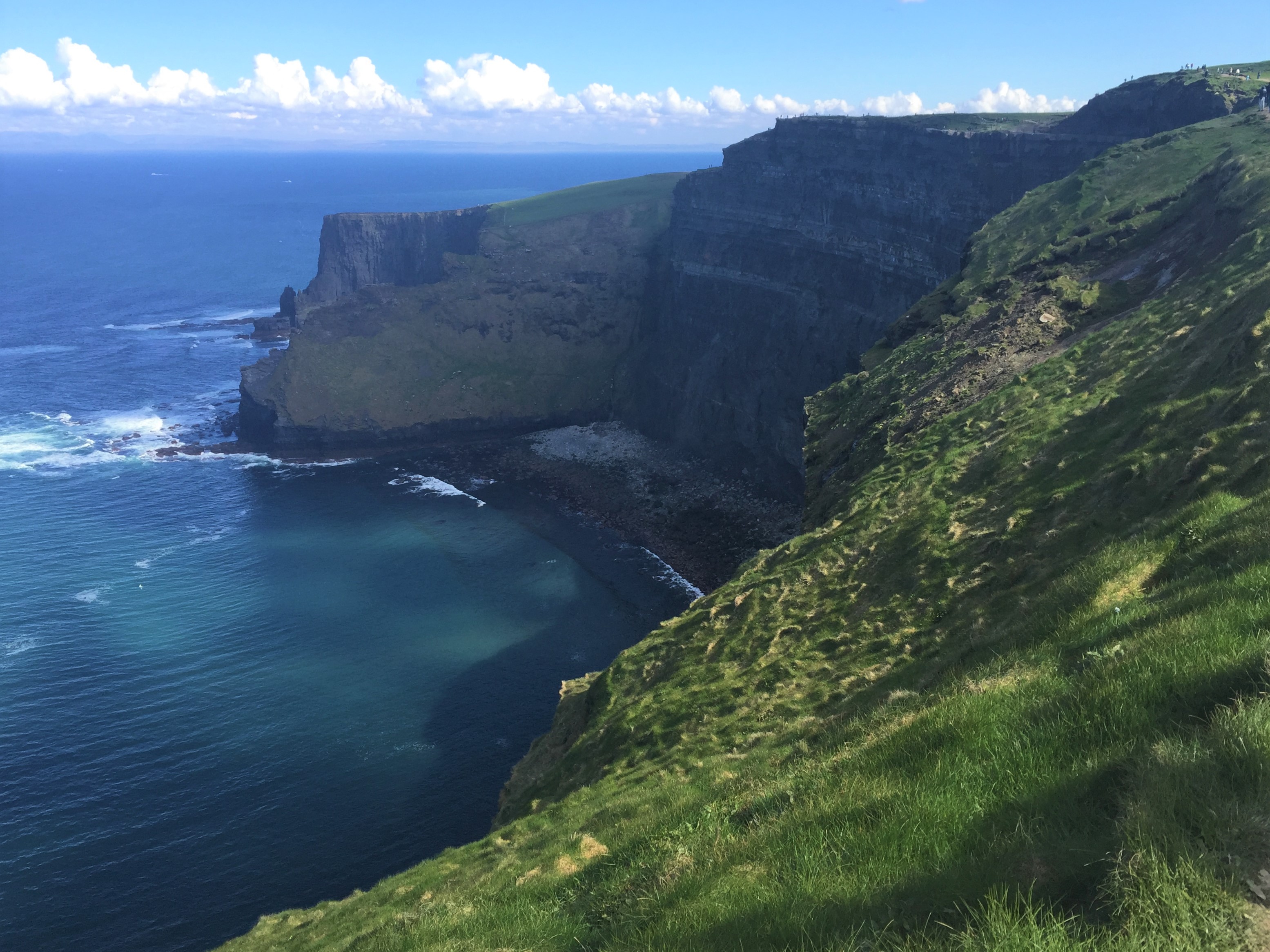
Cliffs of Moher are Ireland’s number one natural tourist sight, attracting more than 1.5 million visitors annually. Reaching the maximum height of 214 meters below the O’Brien’s Tower, they are truly a beautiful natural spectacle.
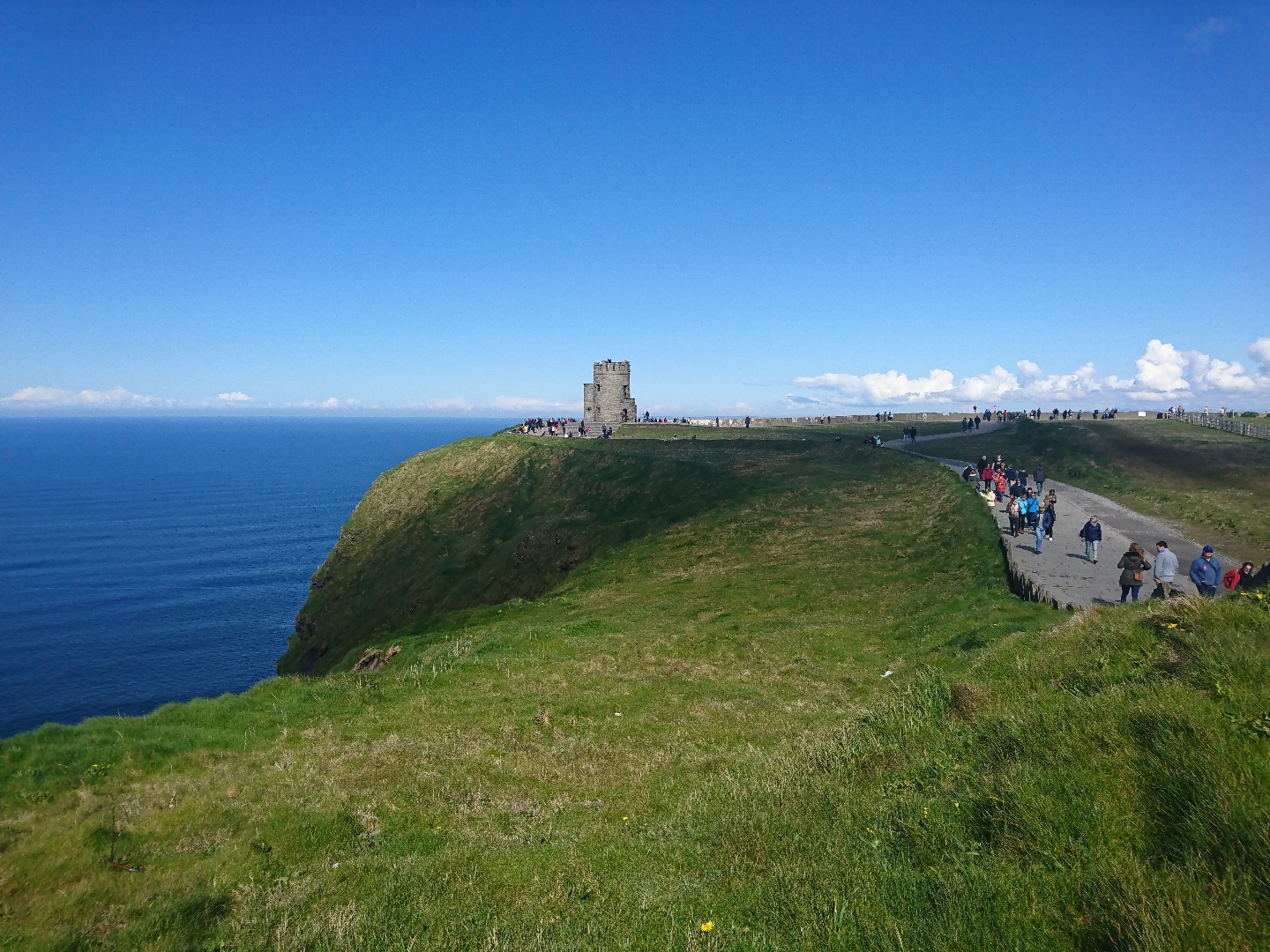
We were recommended to reserve half a day for exploring several walking trails on the cliffs which was fun.
On our way back we popped into a visitor centre where we were positively surprised by a dynamic and interactive exhibition, offering plenty of information for adults and children alike.
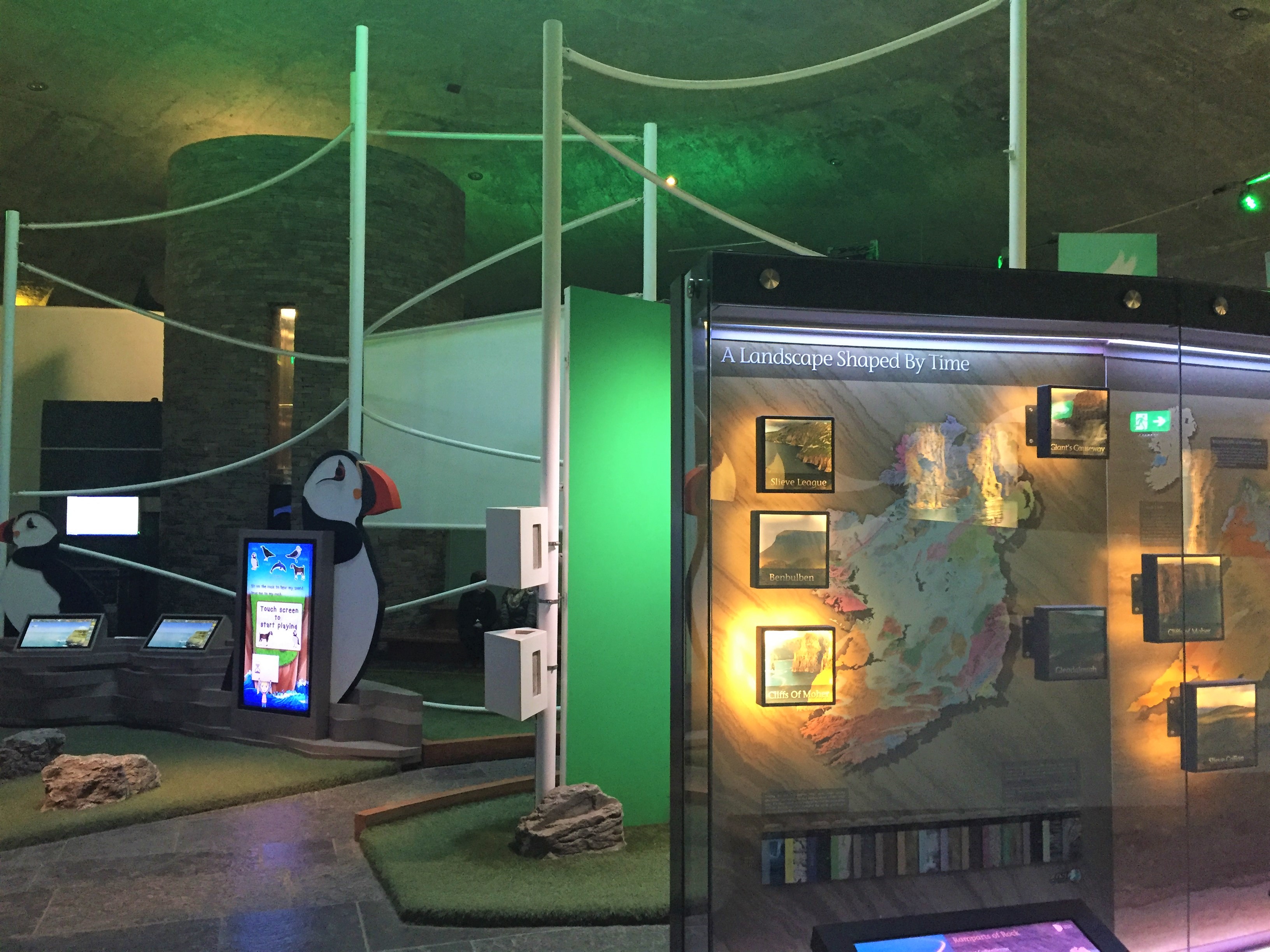
Nature conservation is a big topic there. Local conservators brought it to a very high level. Together with tourism service providers they are committed to making the area a premier worldwide destination for responsible tourism. They are effectively managing and communicating information about waste recycling, energy and water usage per visitor, promoting and educating about “leave no trace” ethics. Even the toilets are showcasing eco facts!
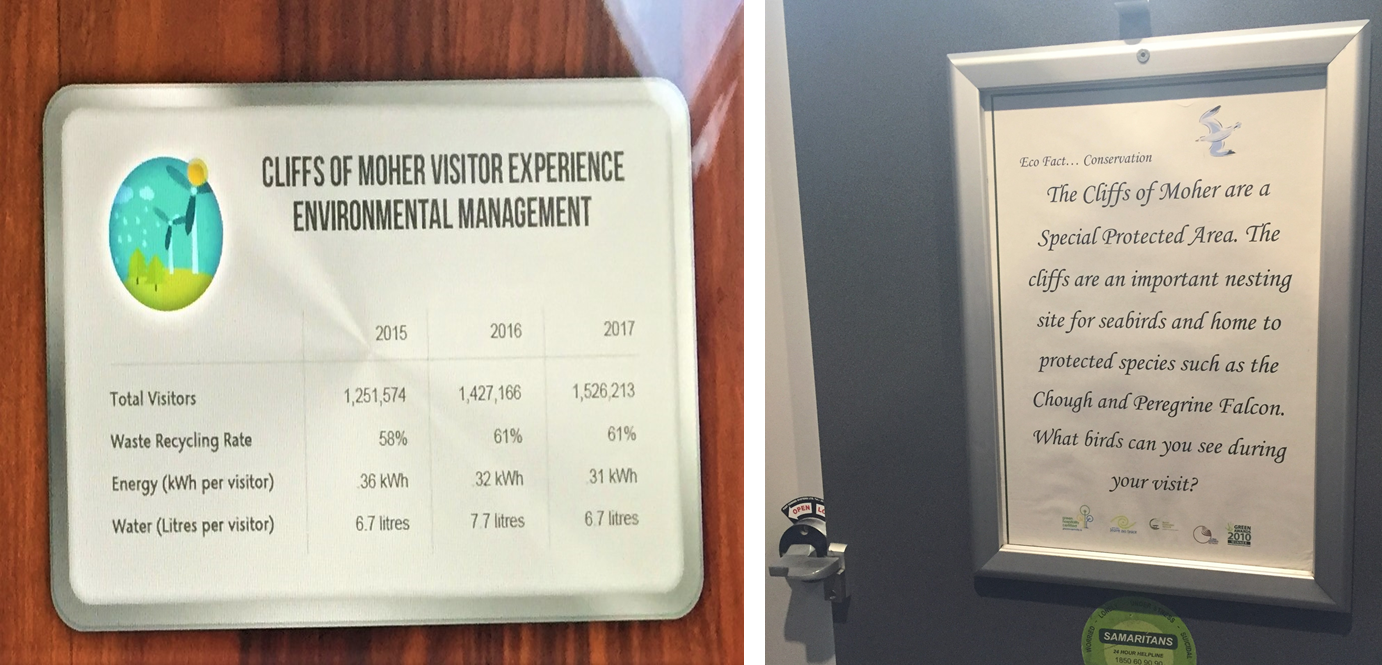
However, traveling to western Ireland only for a couple of hours of cliffs’ experience sounded a bit limiting to us. We were looking for a more authentic experience which would allow us to get beneath the surface of the destination.
And here comes the Burren! Together with the Burren, Cliffs of Moher were awarded UNESCO recognized Global Geopark status seven years ago. As they say, it’s about people, place, learning and livelihood.
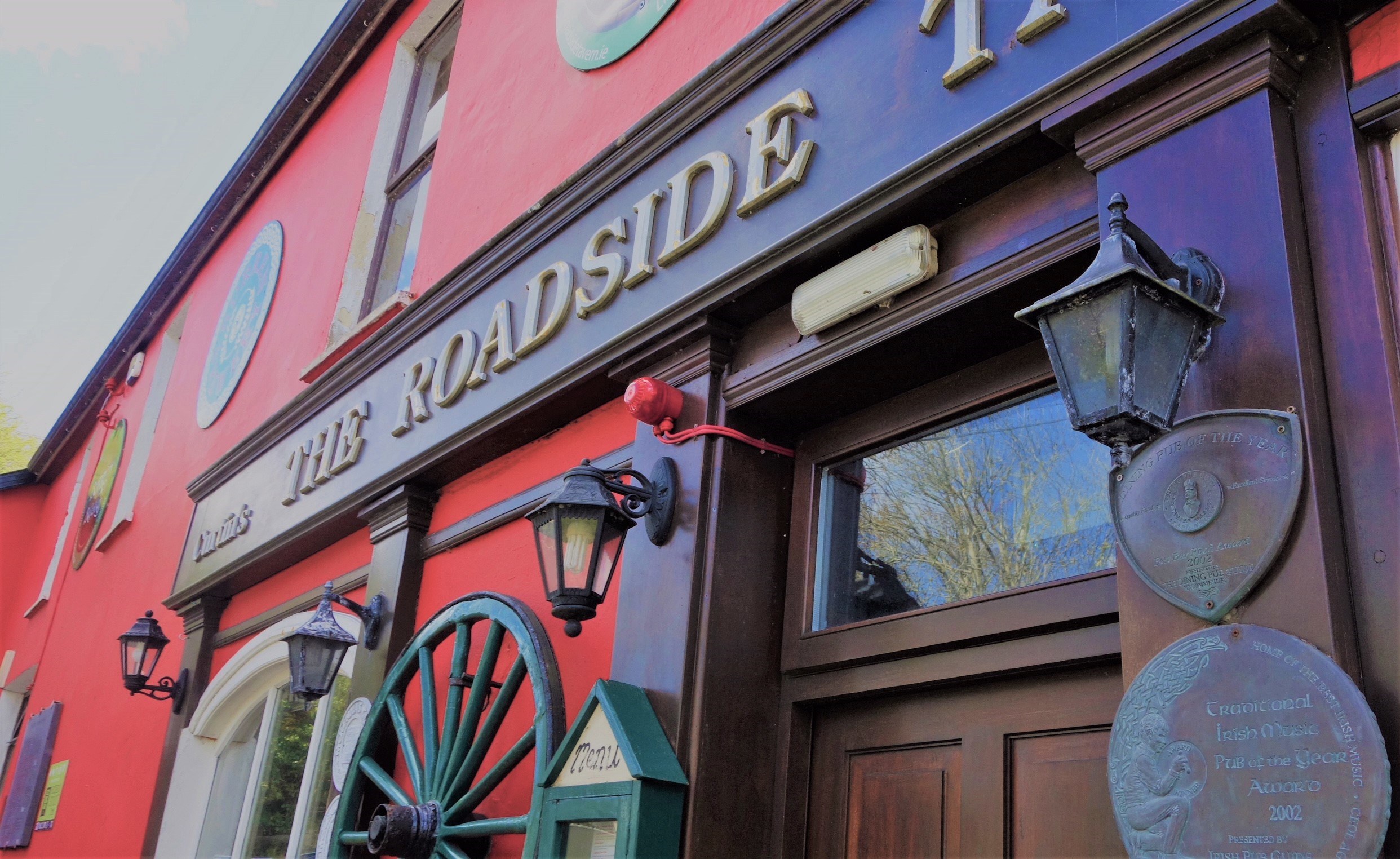
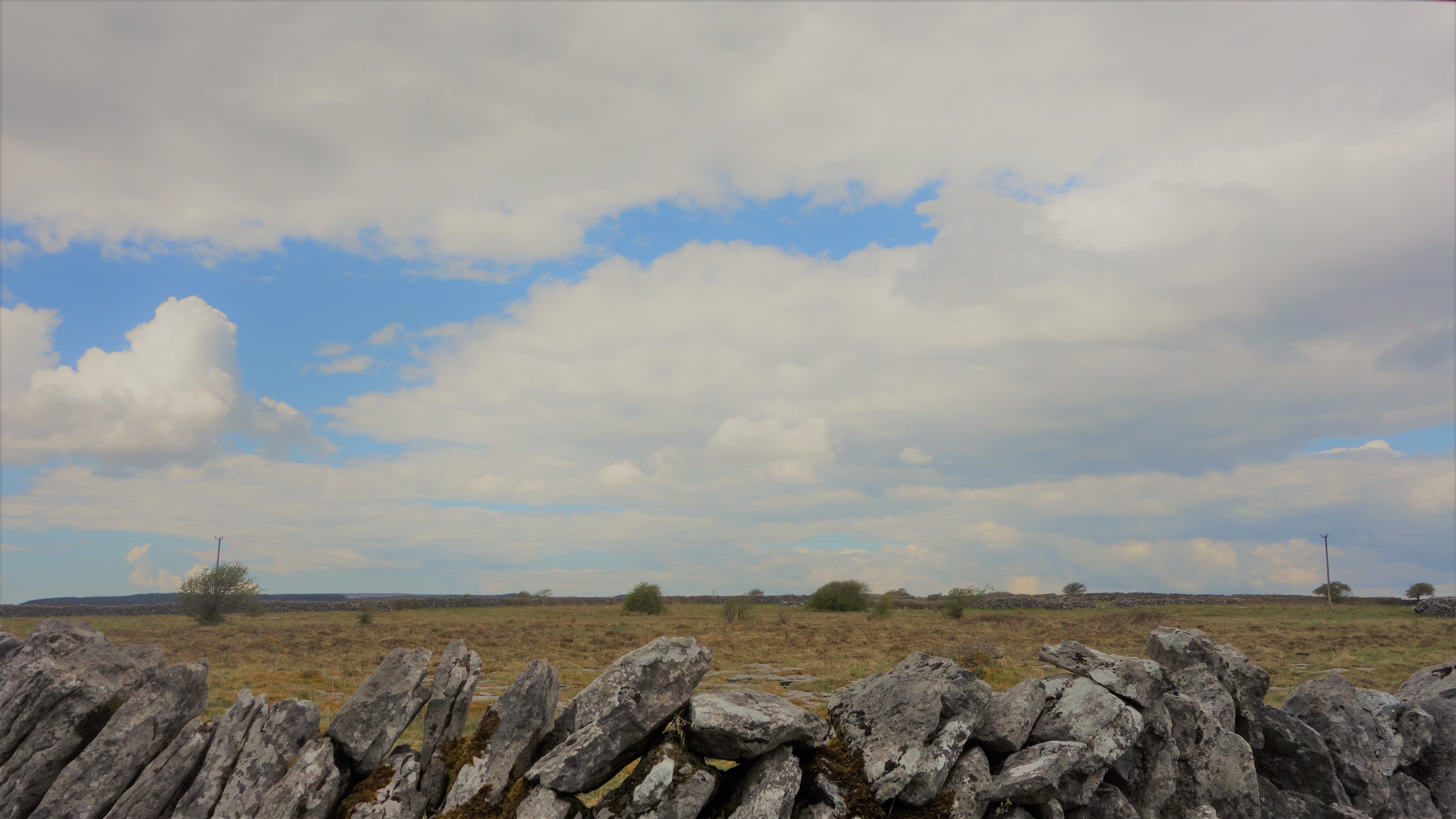
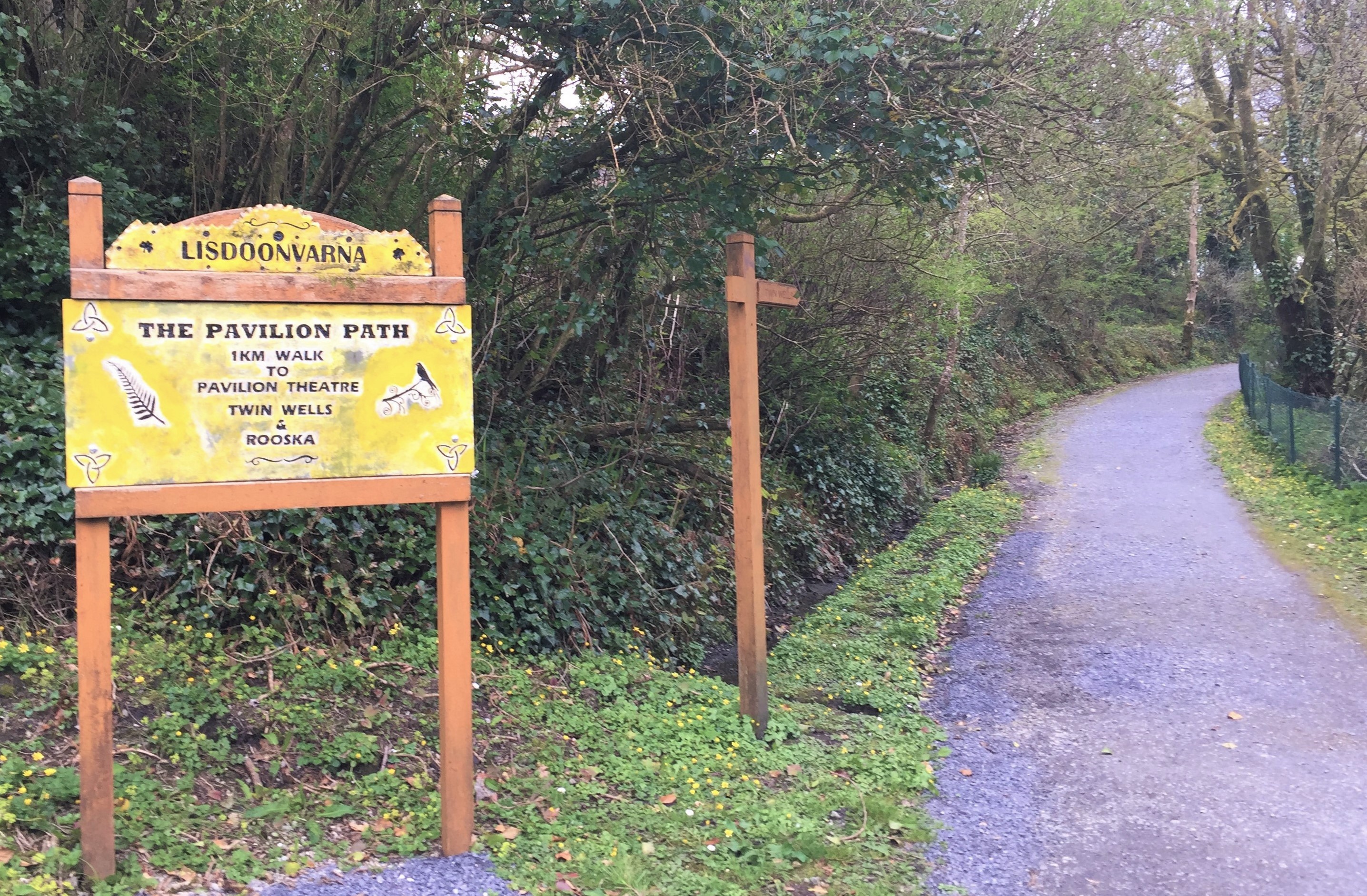
The Burren Smokehouse was the place where we tasted delicious cold smoked organic Irish salmon with seaweed and a honey-glazed variation with whiskey and fennel. Mouth-watering!
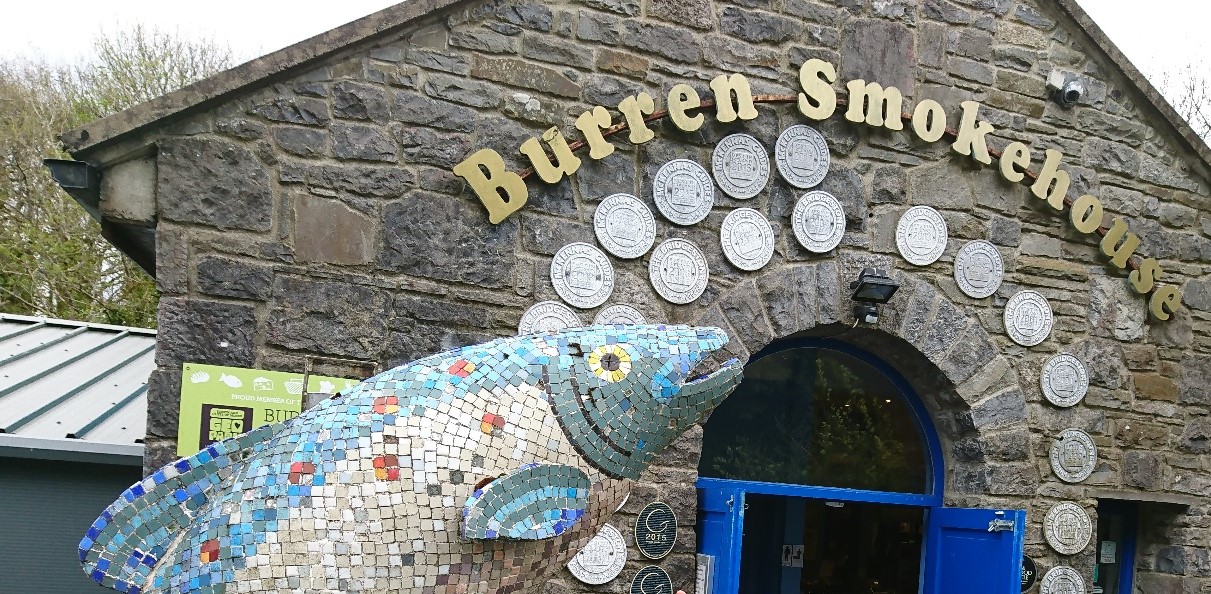
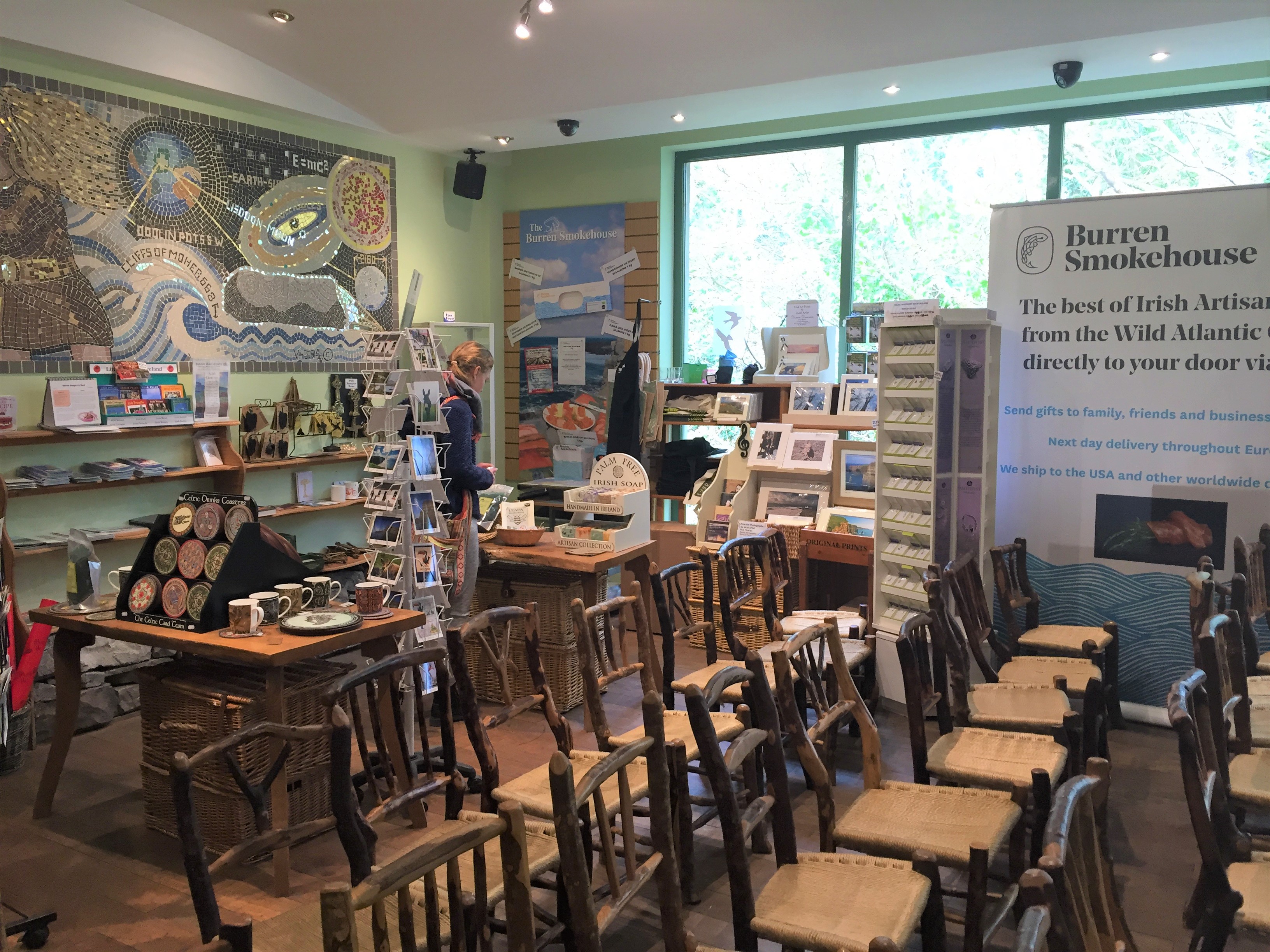
The Burren Perfumery makes perfumes inspired by the local landscape. And there are many more inspirational stories in the Burren, such as: the Moher stone, the Doolin Chocolate Shop, Linnalla Ice-Cream, several exhibitions and thematic events etc.
Our beautiful planet is full of amazing natural sites. Memorable authentic travel is only possible when people and places go hand in hand together, treating each other with respect. This proves to be the critical link between authentic and responsible tourism.
Though a small country, Montenegro has been blessed with cultural richness and immense natural beauty. Its capital Podgorica is rarely chosen as a primary tourist destination, however its central location can be a good base for exploring the country.
Whether you’re visiting on your own or with family and friends, here are my picks for 7 half-day trips. You can either take them in the morning, or in the afternoon and still be back early enough to attend your meetings or experience the buzzing nightlife of the Podgorica city. No ranking here, each of these trips has a charm of its own.
Skadar lake is an ancient tectonic lake. Numerous scientific studies have revealed that several European freshwater animal species originate from there. Skadar lake is also one of the largest bird reserves in Europe and, among other birds, pelicans can be spotted there.
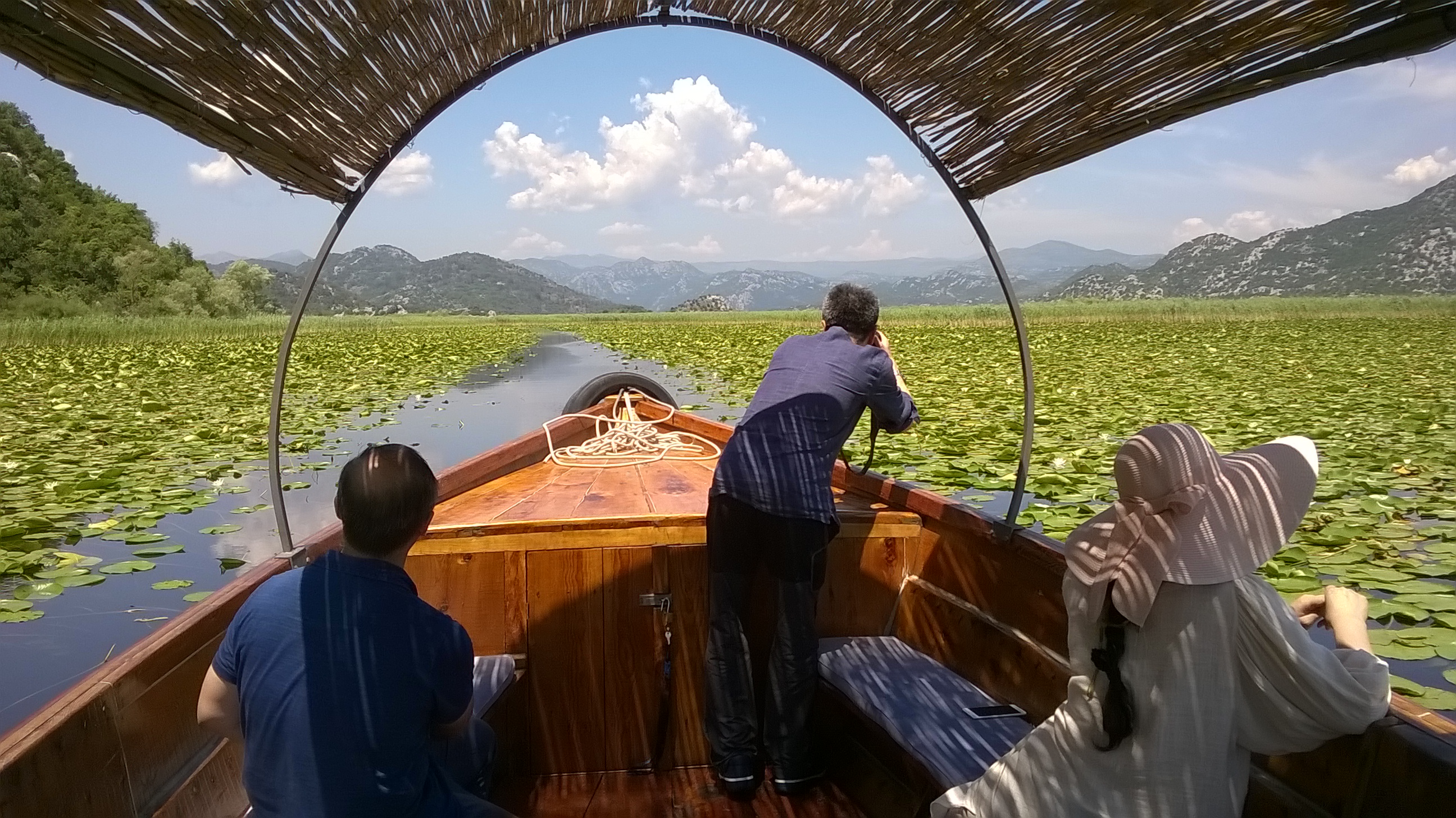
Skadar Lake Boat Trip; Photo by Nino M. Markovic
Skadar Lake boat trips, lasting from 2 to 6 hours, are bringing a new dimension to out-of-town getaways. Silent boats, sliding over the beautiful lake, covered with waterlilies and other aquatic plants, are circling tiny islands, called Gorice, Mala & Velika Čakovica, Andrijska Mountain and Grmožur, the latter also known as the Montenegrin Alcatraz. Yet another trip will take you to the magnificent Kom Monastery, built between 1415 and 1427. In hot summer days you might want to combine a boat trip with a short hike to the waterfalls in nearby Poseljani and jump into fresh waters. Birdwatchers will enjoy Dodosi, delta of the river Morača and above all, Manastirska Tapija, an ornithological reserve.
Biodiversity protection is of vital relevance to the lake and we recommend a trusted nature-sensitive boat operator Skadar Lake Boat ‘Milica’.
An alternative heritage & culinary colored trip can be experienced by visiting another town on the shores of the lake: Rijeka Crnojevica – hiking or biking to a couple of traditional villages and tasting an authentic meal either at ‘gumno’ or ‘konoba’. The ‘wine route’, as well as, the ‘cheese road’ call for unique experiences. Check out Your Montenegro Agency website.
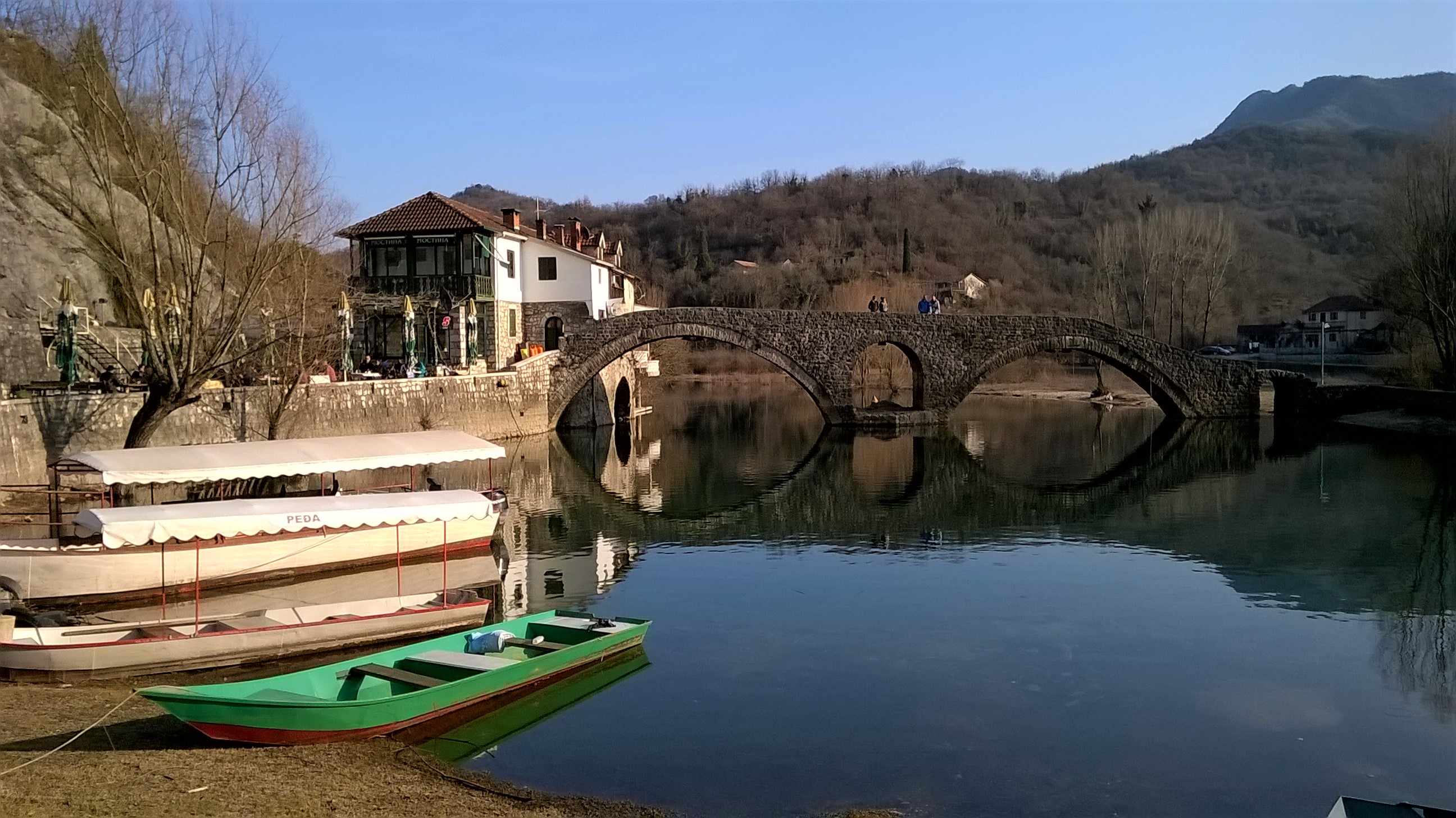
Rijeka Crnojevica; Photo: Nino M. Markovic
Donkeys have a special place in Montenegrin rural heritage. However, modern agricultural technology replaced them. Darko Saveljic, the ‘founding father’ of the farm, is a passionate nature lover who saved several indigenous female donkeys (jennets) from maltreatment and abandonment by opening his farm. Martinici Donkey Farm is probably one of the most nature-friendly donkey farms in the world.
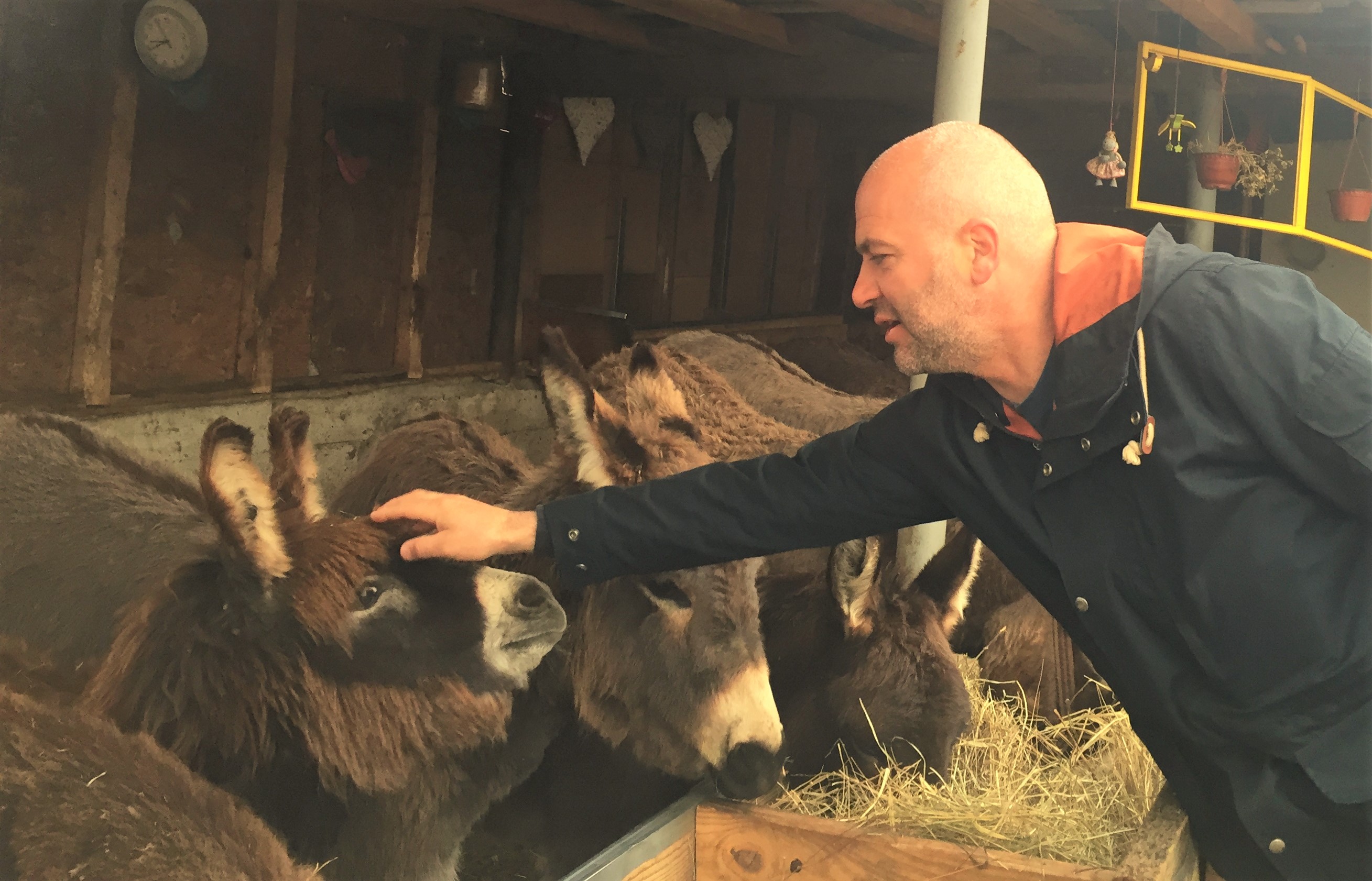
Donkey Farm Martinici; Photo by Tadeja L. Colnar
Only a 20-30 min drive from Podgorica brings you to a great place for children (and adults) to see these animals, learn about beneficial effects of donkey milk, enjoy the countryside and get inspired for nature protection. Donkeys are also great ‘therapists’. Children will certainly enjoy touching and combing them and designing funny hairstyles from their hair. Free hippo-therapy can be individually arranged for children with symptoms of autism.
The farm is open every Sunday 10.00-13.00, entrance fee is 1 kg of donkey feed, such as: apples, carrots and similar. Group visits can also be arranged.
Stellar natural spots with amazing vistas over the river Cijevna, Podgorica and Albanian Alps are to be experienced on the designated circular path ‘Krug oko Korita’. By walking only a section of this panoramic route for about 1.5-2 hours, you reach spectacular Falcon’s Throat (Grlo Sokolovo). Kucka Korita, the starting point of this hiking tour, are located 38 km from Podgorica. Maps are available on the Tourism Board Podgorica web site or at the visitors’ centers.
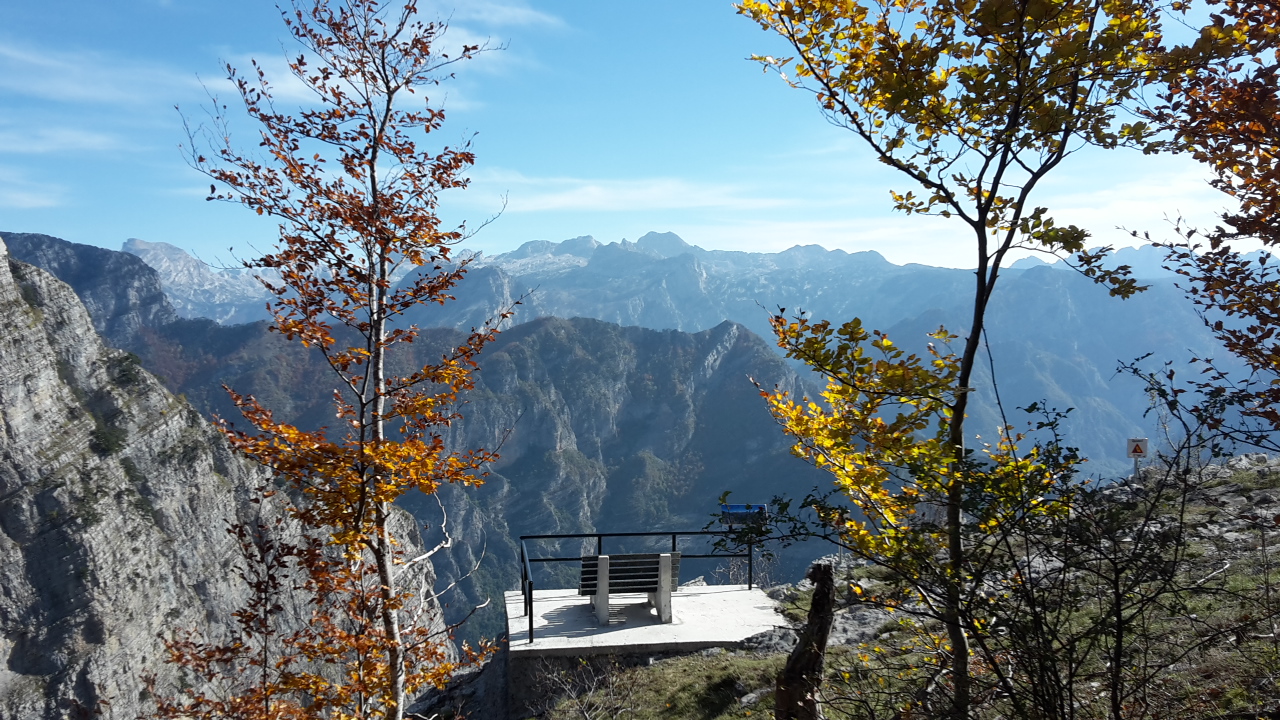
Viewpoint ‘Falcon’s Throat’ (Grlo Sokolovo) on Krug Oko Korita; Photo by Nino M. Markovic
Lipa cave, located 35 km east of Podgorica, near the historic capital Cetinje, is the youngest member in the family of renowned world show caves, and the most impressive cave, open to visitors, in Montenegro. It is known that King Nikola held receptions there and Njegoš spoke of its beauty. A system of 2.5 km of passages and halls is available to visitors. Theater lighting designers have created illuminations that have a rich influence on the scene of the cave.
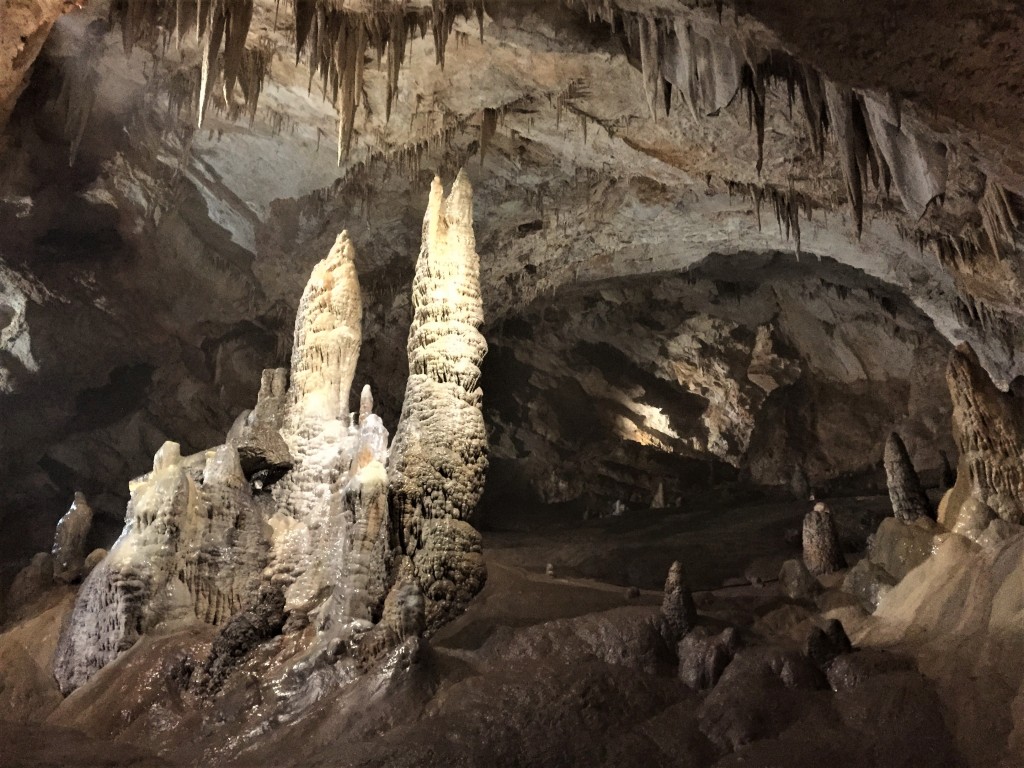 Lipa Cave; Photo by Tadeja L. Colnar
Lipa Cave; Photo by Tadeja L. Colnar
Families and casual visitors can enjoy a walk along the 400 m of cave corridors, admiring cave ornaments, underground lakes and majestic hallways created by nature. Adventurers and adrenaline seekers might prefer a 30 m descent from the ceiling on a rope and explore hidden corners of the cave with a professional guide. These adventures are only available, if arranged in advance. The cave is open to visitors from April till December.
Taken with a pinch of famous Montenegrin humor, these ‘Niagara falls’ are much smaller than their northern American namesakes. Nevertheless, the five rivers of Podgorica are certainly an important natural asset, enriching the experience of the city. ‘Niagara falls’ on the river Cijevna are a cool out-of-the-city spot, popular among locals and less known to the visitors. On hot summer days, you can cool yourself off by jumping into calm waters. It only takes a 10 minute drive from Podgorica to Tuzi to get to the Niagara falls.
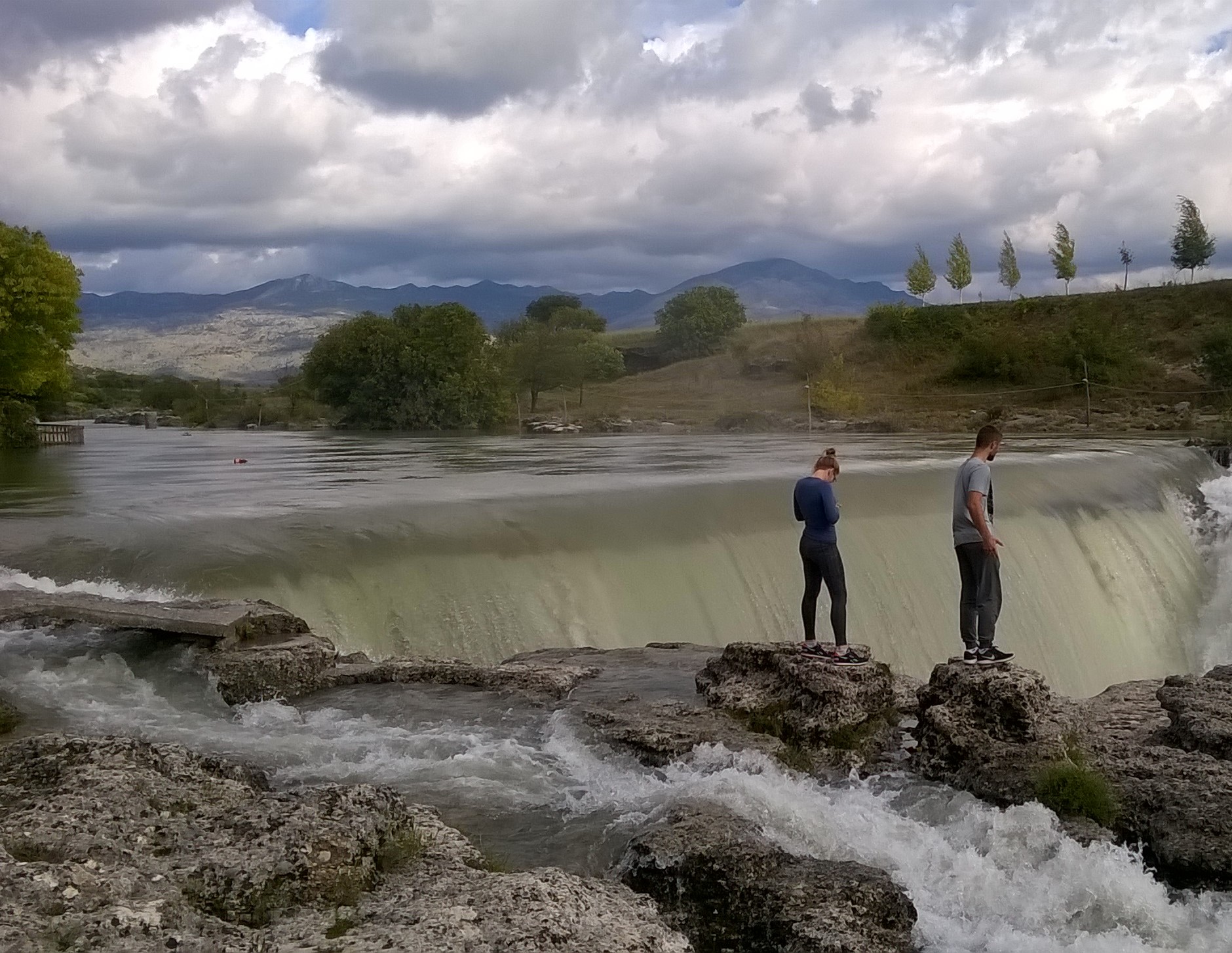
Niagara Falls on Cijevna River; Photo by Nino M. Markovic
In the northern outskirts of the city, you can visit one of the best preserved ancient historical sites in Podgorica: the Roman settlement Duklja, built in the 1st century. There’s not much tourist infrastructure on the site. It is rarely crowded so you can usually explore the old ruins on your own.
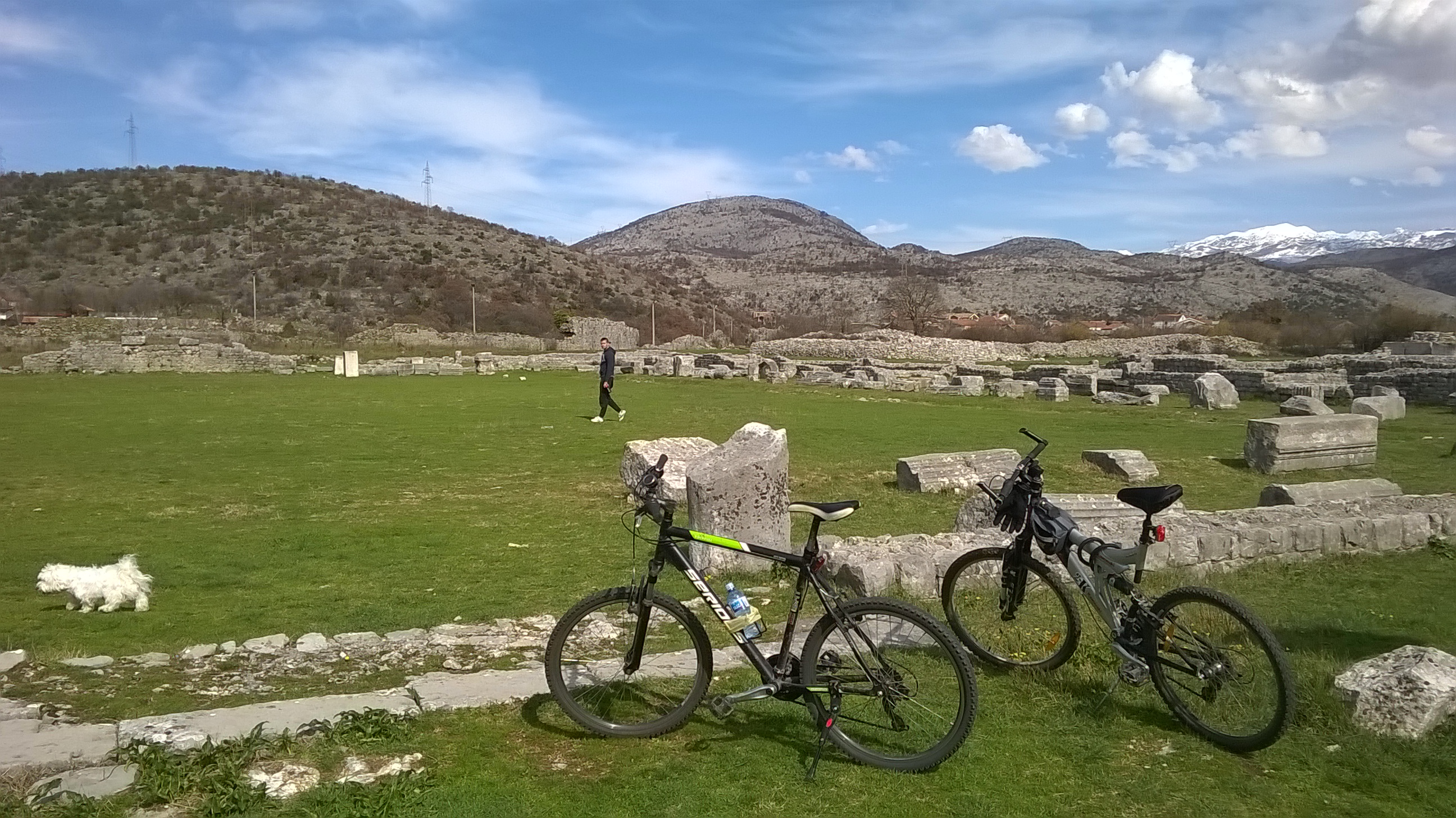
Roman Settlement Duklja; Photo by Nino M. Markovic
While being in the area you might want to visit Zenta Winery, located above the shores of Zeta river in Rogami. What began as an experimental vineyard has grown into one of the most renowned wine brands in the country. A cozy tasting room with old ceiling beams is a great place to end the day, but arrange your visit in advance.
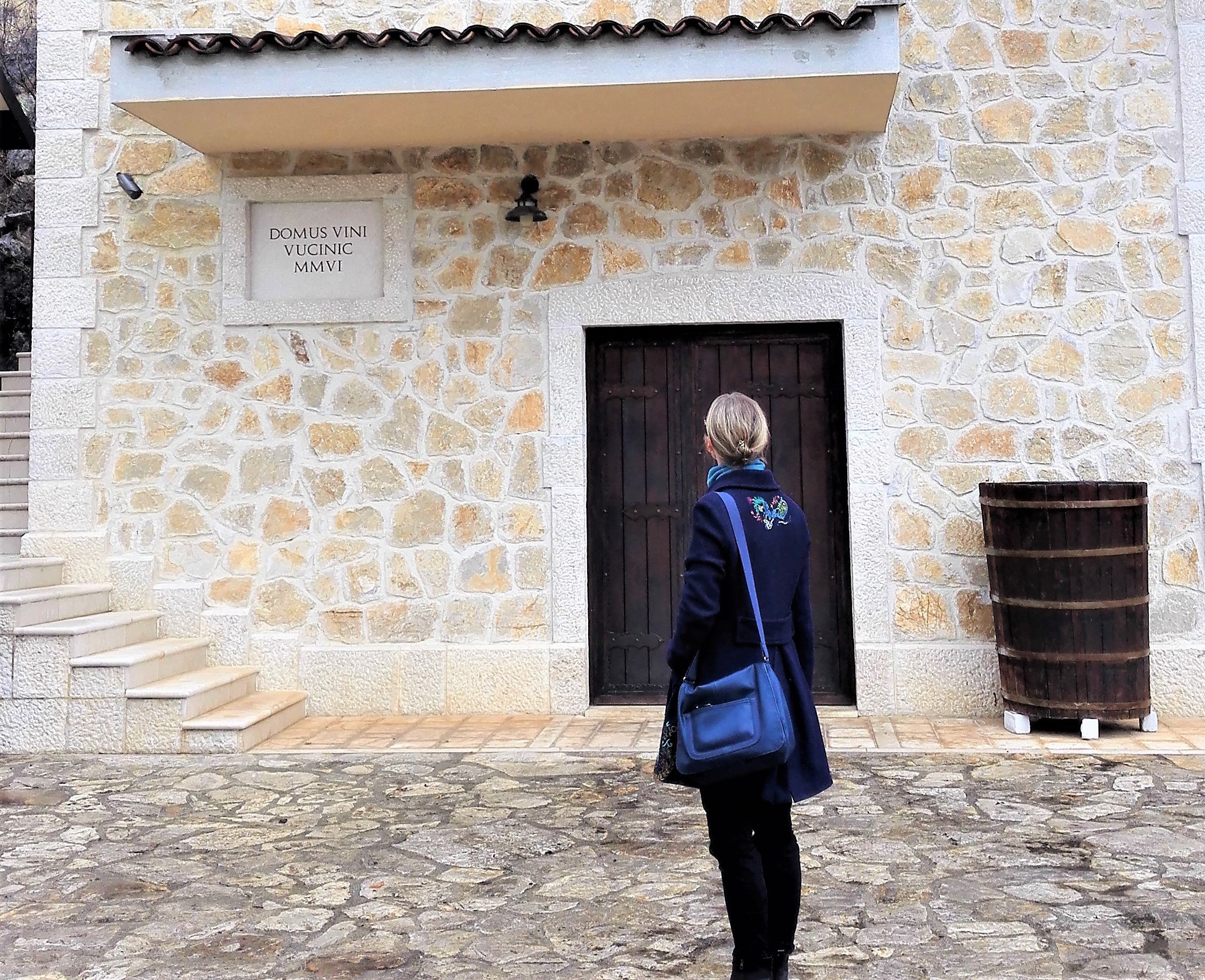
In Front of the Cellars in Zenta Winery; Photo by Bernadette
An alternative way of approaching Duklja is an insightful 4-5-hour bike tour from the center of Podgorica, following the river Moraca to Duklja. The biking tour continues on the banks of Zeta river all the way to Danilovgrad. Montagna Agency provides you with bikes, accompanying vehicle and guides.
If you feel like getting some air under your feet, limestone rock formations at Smokovac are the place to go. Smokovac, located 5 km Northeast of Podgorica, is a hot spot for free climbers of all levels of experience from absolute beginners to professionals.
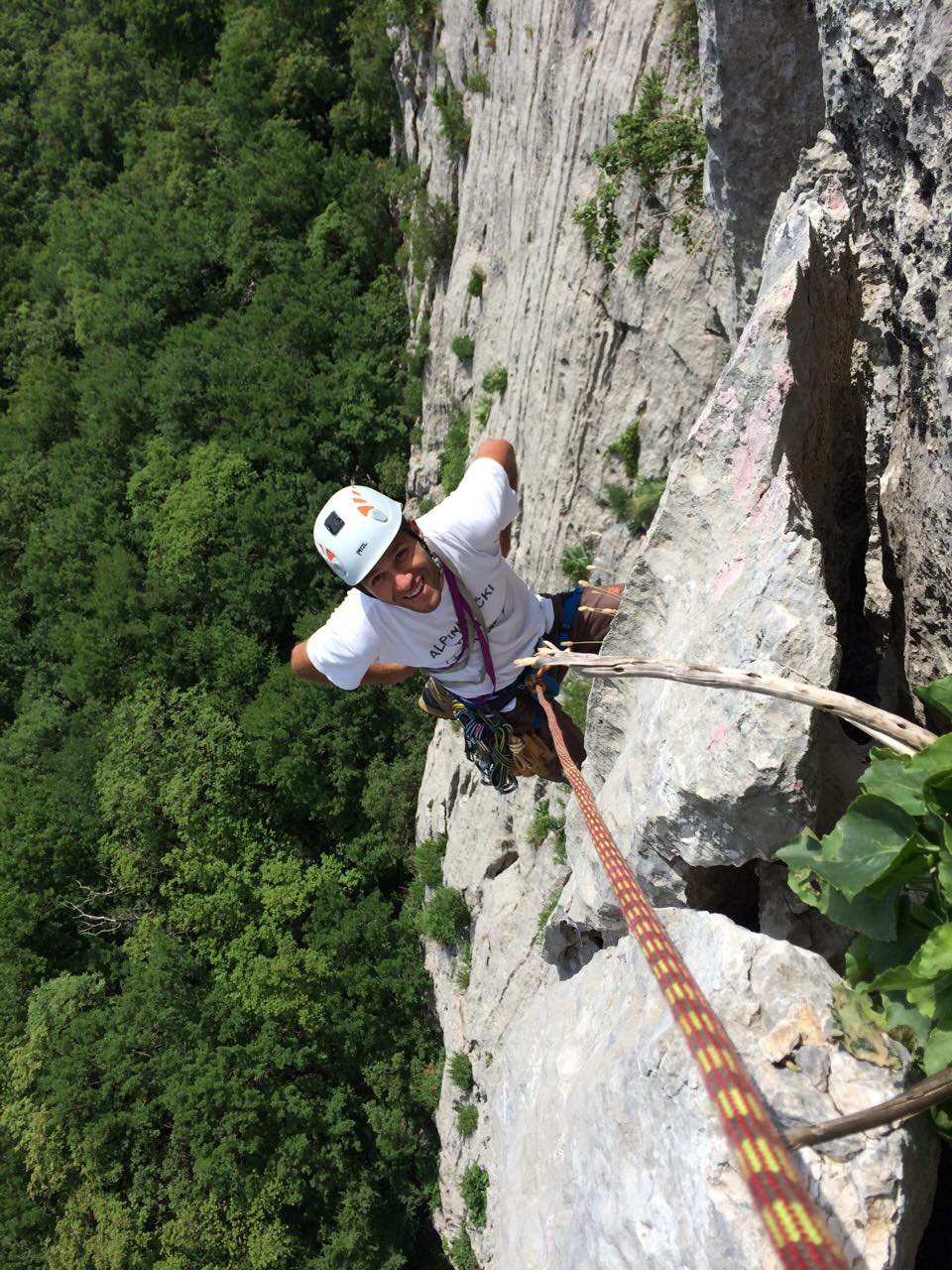
Smokovac Free Climbing; Photo by Mico Cerovic
Climbers are supported by a guide, using safety ropes, and provided with climbing equipment. For more information contact Montagna Agency.
***
Our home away from home has been Hotel and Restaurant Laguna, renowned for authentic cuisine that can be rarely experienced in Podgorica. Try delicious ‘priganice’ for breakfast or carp fish, eel, ‘rastan’ (green cabbage stew) or ‘japraci’ (traditional rolled green cabbage stuffed with meat and rice) for lunch or dinner. Be prepared for generous portions!
On our trips, we devoted special attention to local heritage and nature protection, thanks to our trusted and responsible tourist guide Nino M. Markovic from Montenegro Tour Guide.
Written by Tadeja L. Colnar
Prepared within the EU-funded project ‘Laguna Heritage Tourism Cluster’ (LHTC), led by the Institute for Strategic Studies and Prognosis (ISSP).
While working on the Upper Egypt Local Development Project…
A two hour drive from the famous Luxor brought us to a less known gem among Ancient Egyptian temples, the Temple Complex in Dandara. First temples there date back to 2250 BC, but most of them were built in 360–343 BC. They are devoted to the Goddess Hathor who personifies the principles of joy, celebration, love, and motherhood. She is associated with the Greek Goddess Aphrodite and the Roman Goddess Venus. Historians say that more festivals were honoring her than any other Egyptian deity.
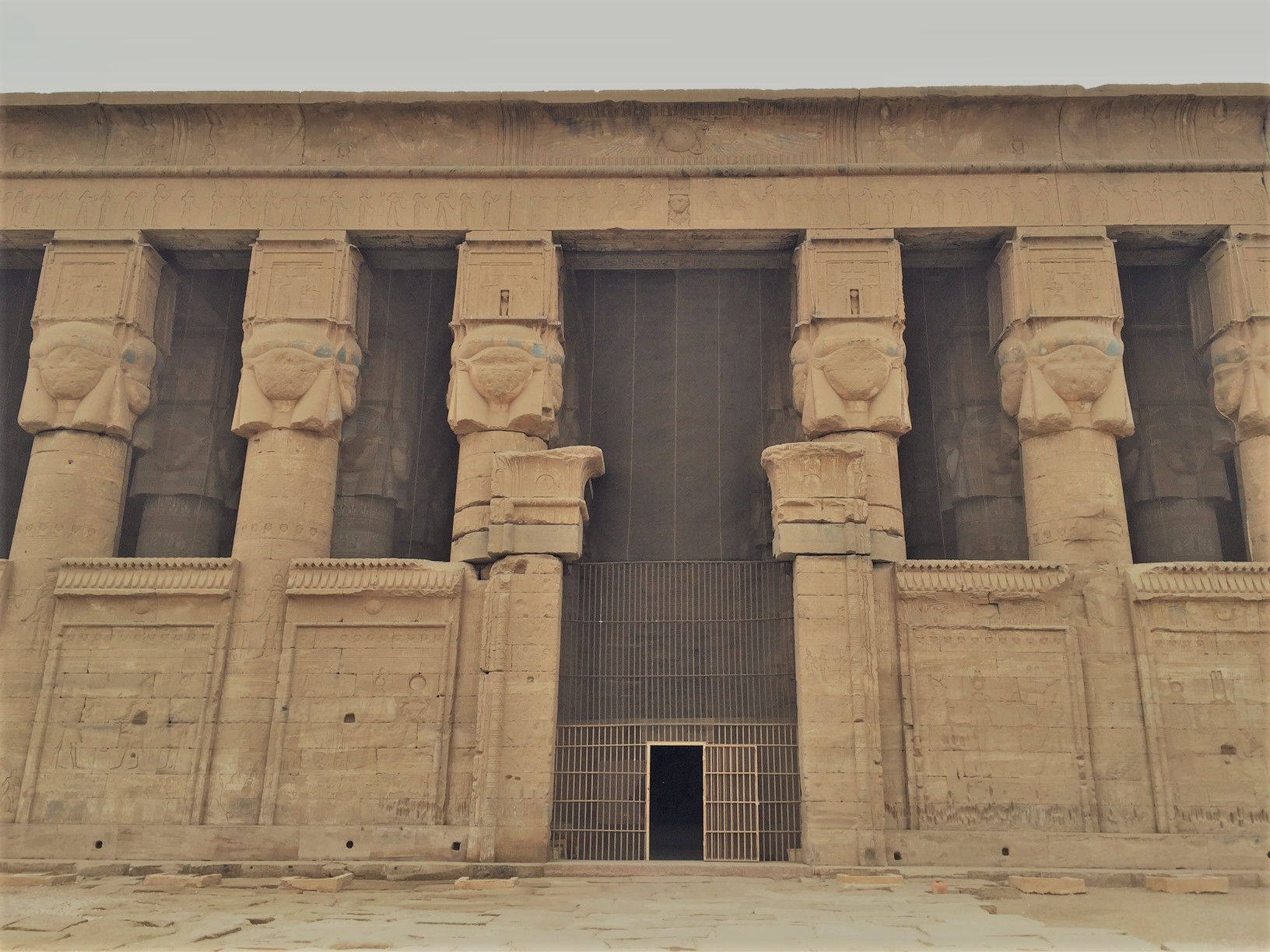
The Sacred Temple of Hathor
One of the major festivals took place every summer when the Goddess Hathor went on a journey from Dandara to Edfu to meet with Horus. The people of Ancient Egypt celebrated their reunion, symbolizing all that is good in life, abundance, creativity and wholeness.
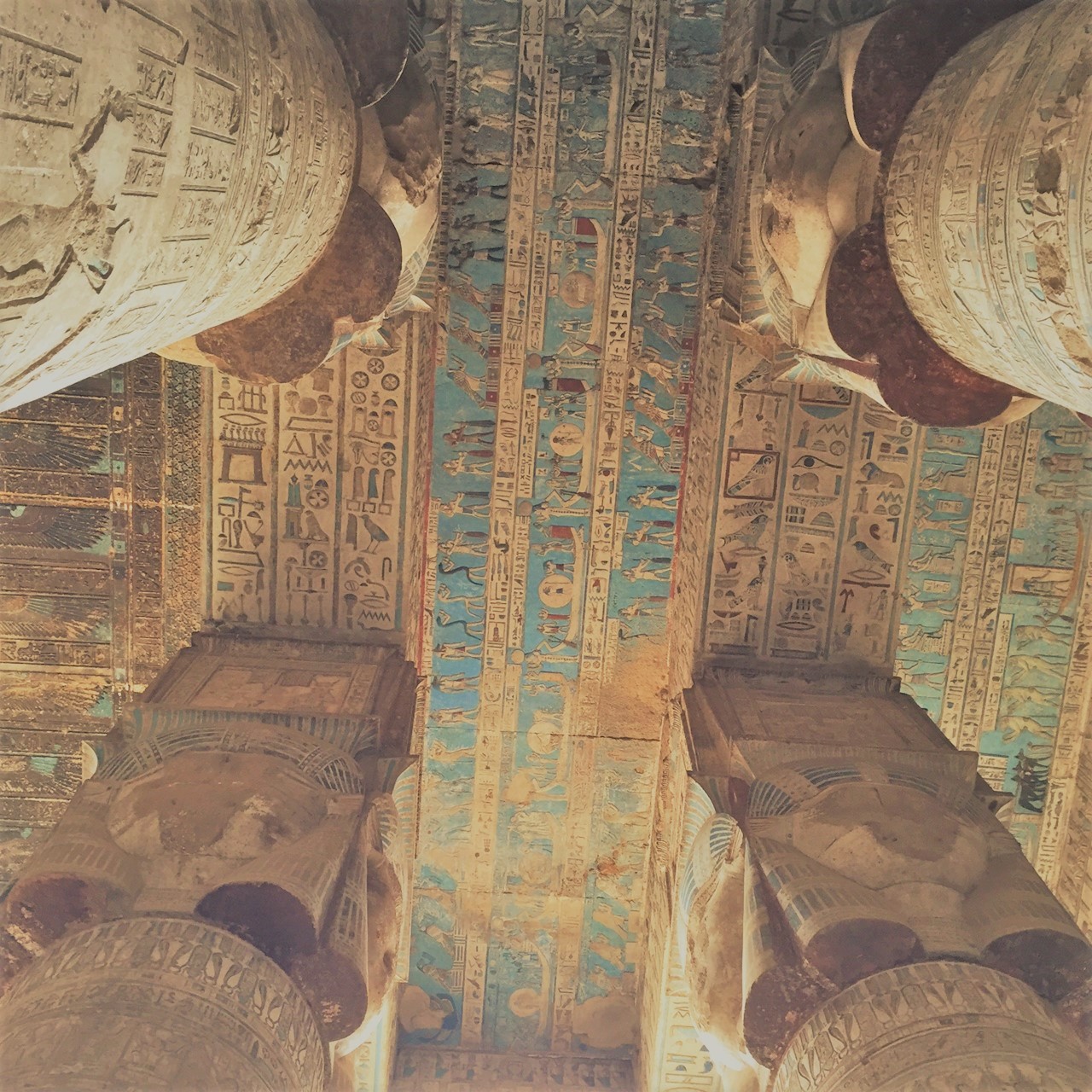
Interior of the Temple
Worshiping Hathor was popular both among the poor working class of Egypt, as well as the ruling elite. As the bringer of life and comforter in death, Hathor embodied the heavenly Nile as she brought the best kind of gifts from the gods to the people of earth*. She was also a goddess of poetry and dance. No wonder that Qena and Dandara are known to be the cradle of storytelling in Egypt.
Upon arriving at the temple’s entry, we were welcomed by poetic confessions of joy and pain by some local musicians. Having experienced this performance, I am only imagining how magical a storytelling festival, organized in Qena, must have been even to the visitors not familiar with the Arabic poetry.
Simple life can be experienced in Dandara village with children running around, traders of snacks, offering their products around the corner, and old men with donkeys, carrying their grandchildren.
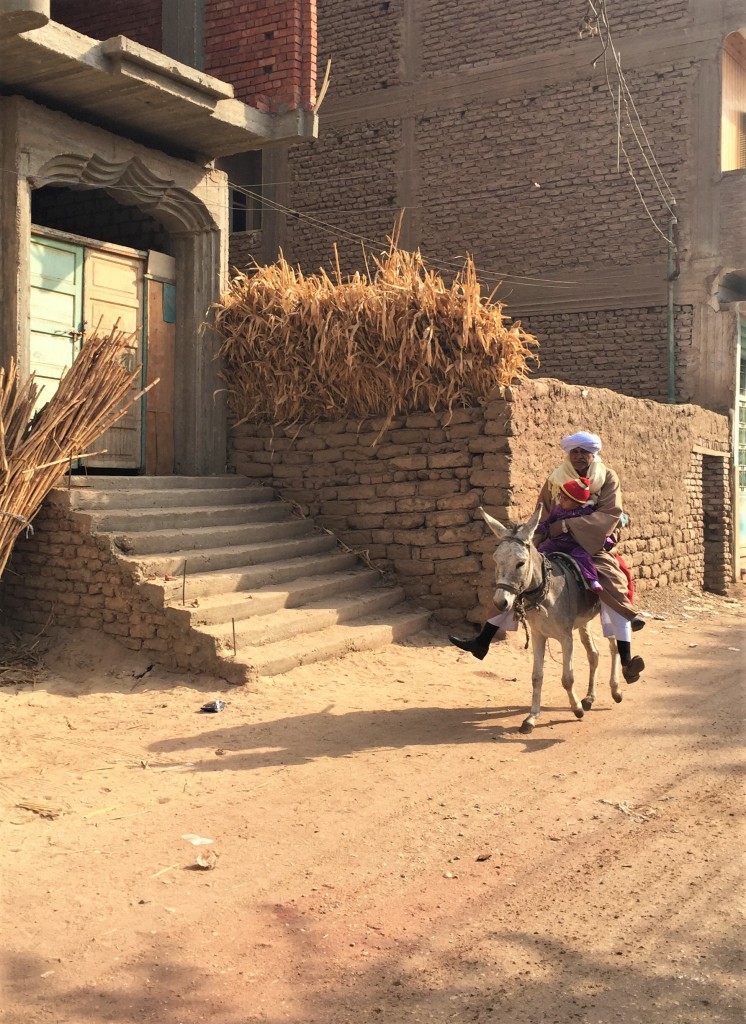
Donkeys are a very important mode of transportation
A small community of women has been trained and provided with seed capital to sustain jewelry making. Their necklaces, bracelets and rings are shown in local exhibitions, however meeting these women is as rewarding as appreciating their products.
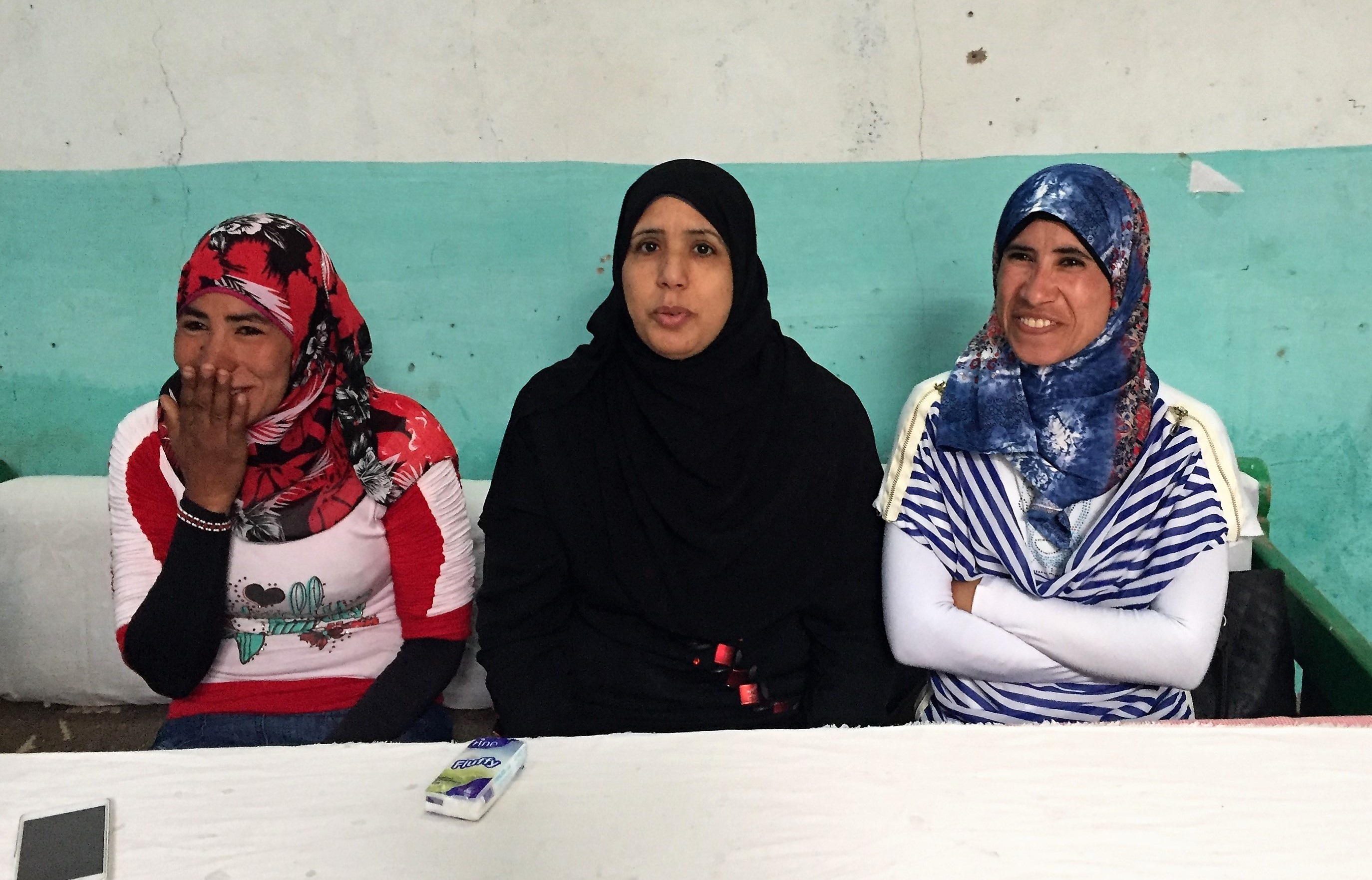
The ladies behind Dandara jewelry
Back home these beautiful turquoise artisanal pieces will remain a tangible memory of my day spent with them.
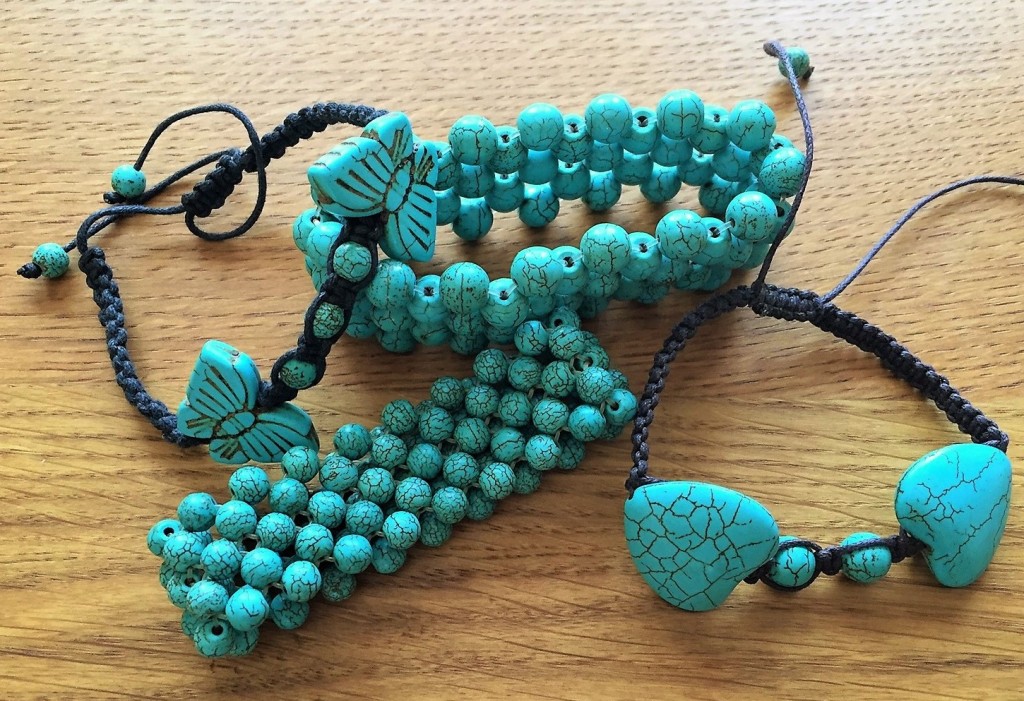
My favorite Dandara jewelry seems to be inspired by Hathor, known to be ‘the Lady of Turquoise Country’
Pottery makers kindly introduced us into their production process. A simple pottery kiln is positioned in the first line of the village, overlooking the Nile. Yes, the amazing river of life deserves special attention for it significantly fills the area with an unusual sense of peace. Numerous birds, overflying its shores, speak of abundant supply for life to all species.
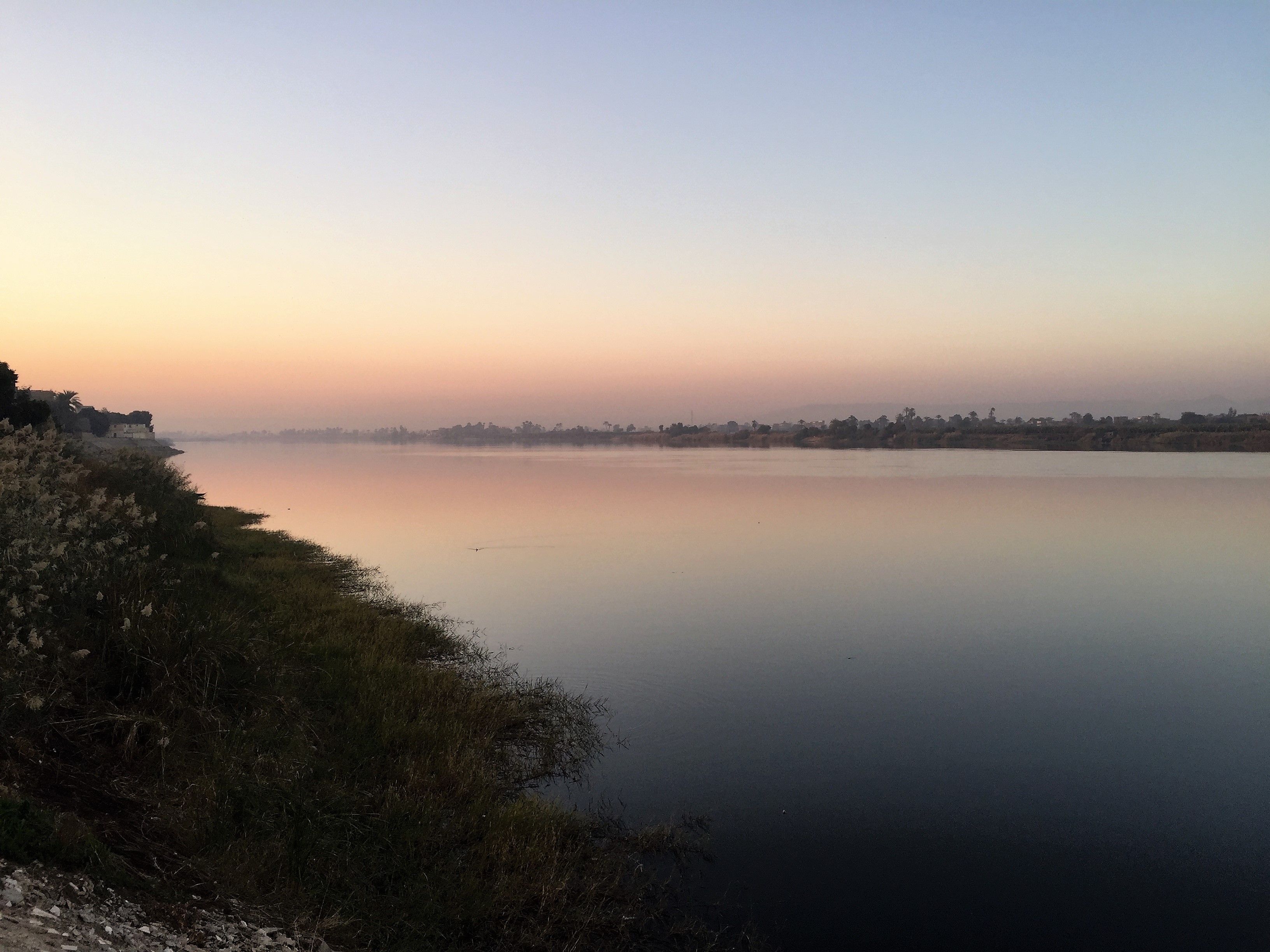
The River of Life
Dandara has given me the gift of authenticity, the one whose colors and fragrances stay with you for a long long time. It is the people, who uncover the character of places and there is a certain camaraderie in such encounters which transcend our cultures.

A Moment to Remember
*Sources: J. J. Mark: Hathor, 2009; and D. B. Redford: Oxford Guide to Egyptian Mythology, 2003.
Surrounded by mountains and enchanted by legends, Piva lake area in Northwestern Montenegro is often neglected, but well worth visiting. Piva pearls are attractive on their own and they are also a good place to make home base for exploring Durmitor and Tara.
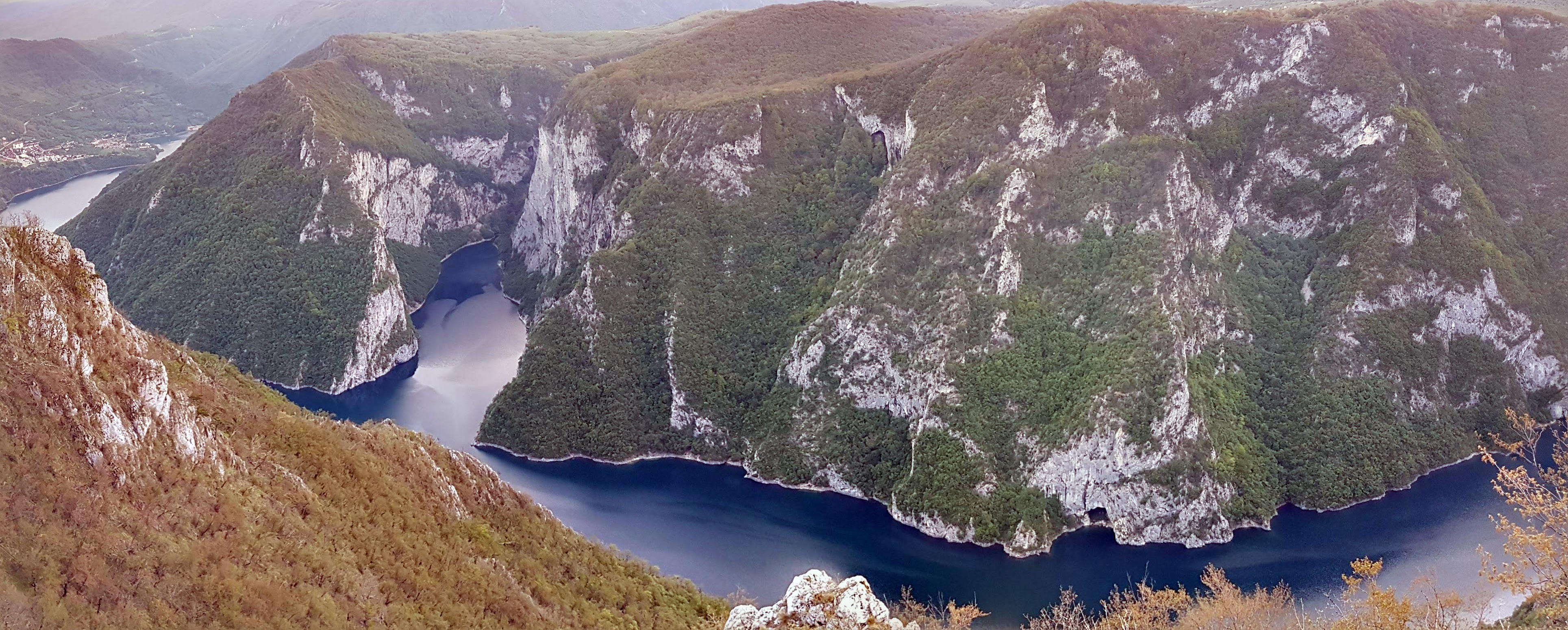
Piva Lake; Photo: Žiga Jenko
We escaped the crowds and distractions of civilization by taking a half an hour boat trip from Plužine to a little lakeshore camp with appealing name ‘Ajmo u tišinu’. Talking about the trend of ‘silence tourism’, here we truly experienced it. A marked trail through the woods led us to a lookout point with a beautiful view over the lake, resembling a big star.

Do You See the Star? Photo: Žiga Jenko
Later on, in the shade of oak and hornbeam trees, we enjoyed coffee while talking about life in Plužine.
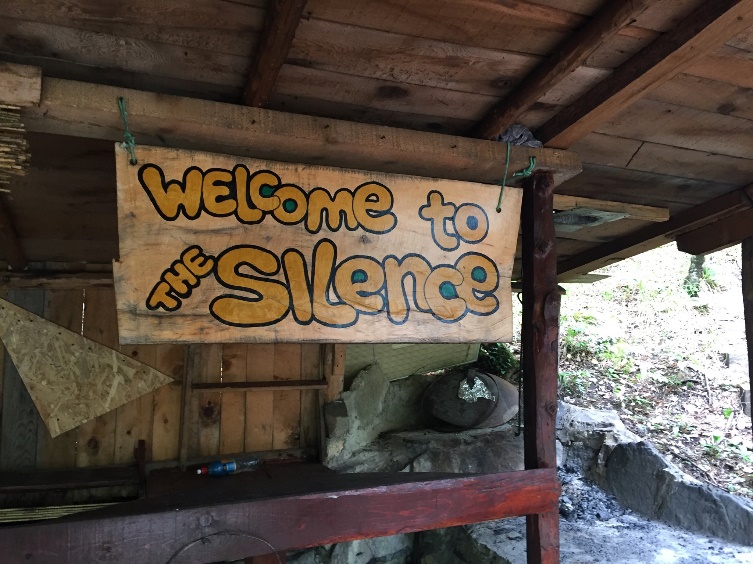
‘Welcome to the Silence’ on the Banks of Piva Lake
Quests in the Piva mountains are inspiring and fun. They brought us to the monumental medieval tombstones, called ‘stećci’. ‘Stećci’ are a very unique peace of cultural heritage of the cross border regions of Bosnia and Herzegovina, western Montenegro, western Serbia and central and southern Croatia. They have been recently inscribed on the UNESCO list of world cultural heritage sites.
Stećci are scattered on the meadows and in the mountains of Piva and often it seems as if they are a forgotten peace of human creation. This is exactly what makes them even more attractive. Looking for ‘stećci’ is certainly an amazing quest on its own.
The most comprehensive registration of ‘stećci’ in Piva region has been done in late 60s and 70s of the 20th century by a Bosnian researcher Šefik Bešlagić. At that time, 35 locations with altogether 787 ‘stećci’ have been evidenced.
An overture into quest for ‘stećci’ may be a visit to the guesthouse Zvono in Plužine. Their ‘in-house designer’, Vlatko Vuković, designed a map that takes you to amazing places. Following that map is a truly entertaining quest with many surprises on the way.
The next stop may be Etno-selo Izlazak close to a beautiful necropolis in Rudinice.
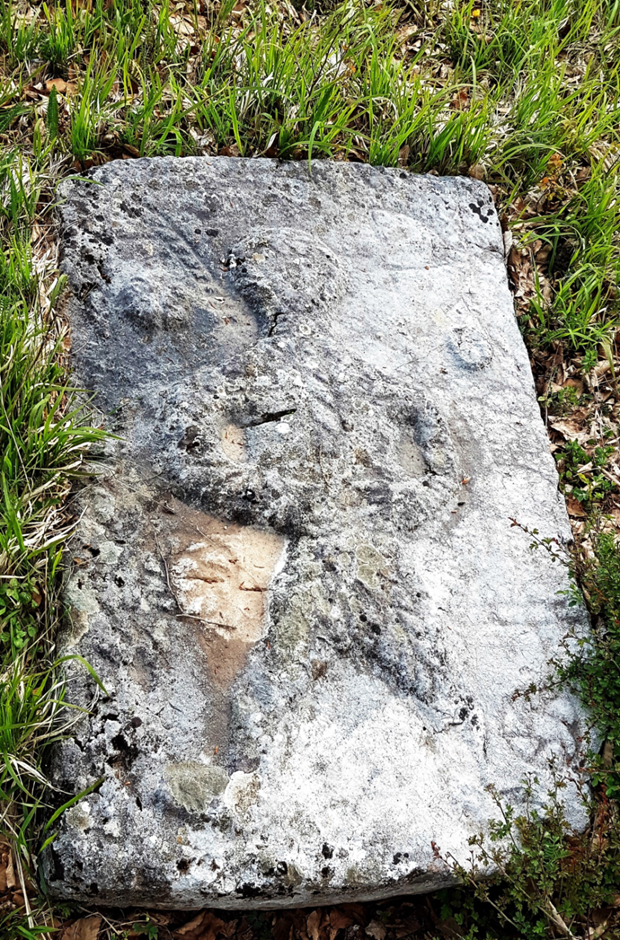
A Human Figure Carved in Stećak
The town of Plužine is also famous for tasty medovina, the mead, and Zvono’s specialties cooked in it. Legends say that the mead used to be the drink of the Gods and was considered to be the elixir of youth and immortality, the source of spiritual power and physical strength of ancient heroes.
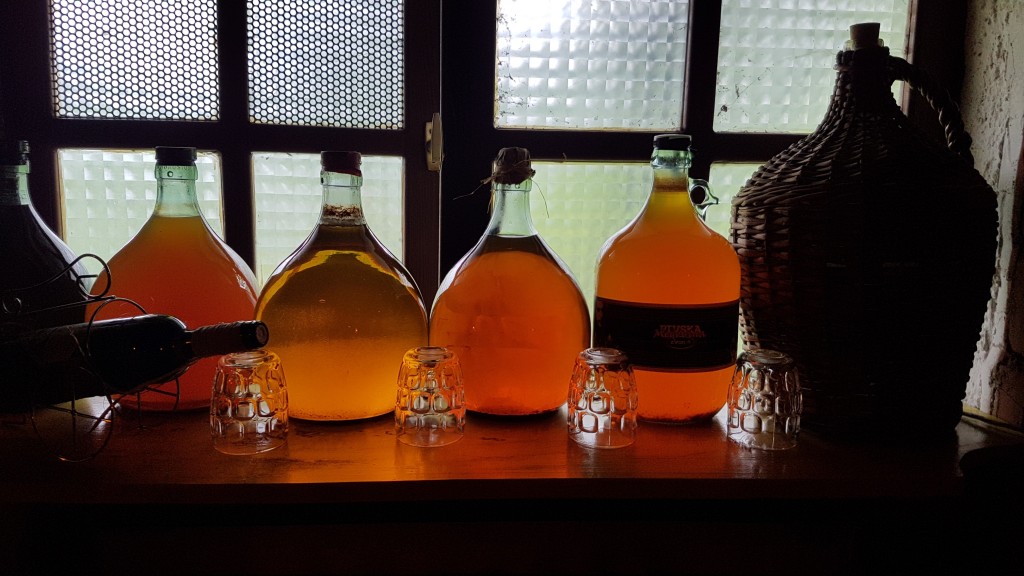
The Mead at Zvono
An early morning stop at the remarkable Piva Monastery filled us with peace and reverence. The Monastery was built in 16th century at the spring of Piva river and although it was Christian religious center, its construction was approved by the Ottoman rulers. As a result, the church in the monastery contains a fresco depicting Savatije Sokolović (the Serbian Orthodox patriarch) and Sokollu Mehmed Pasha (Grand Vizier of the Ottoman Empire), which is an unusual rarity.
In 1982, The Piva Hydro Electric Project created a vast water reservoir. The water covered the old Plužine village, two thirds of the area’s agricultural land, and several natural hot and cold springs. Only the Piva Monastery was saved, as it was moved to a new location stone by stone together with 1,500 square meters of frescoes. Preserving this monastery was a huge undertaking for ex-Yugoslav historical conservationists.
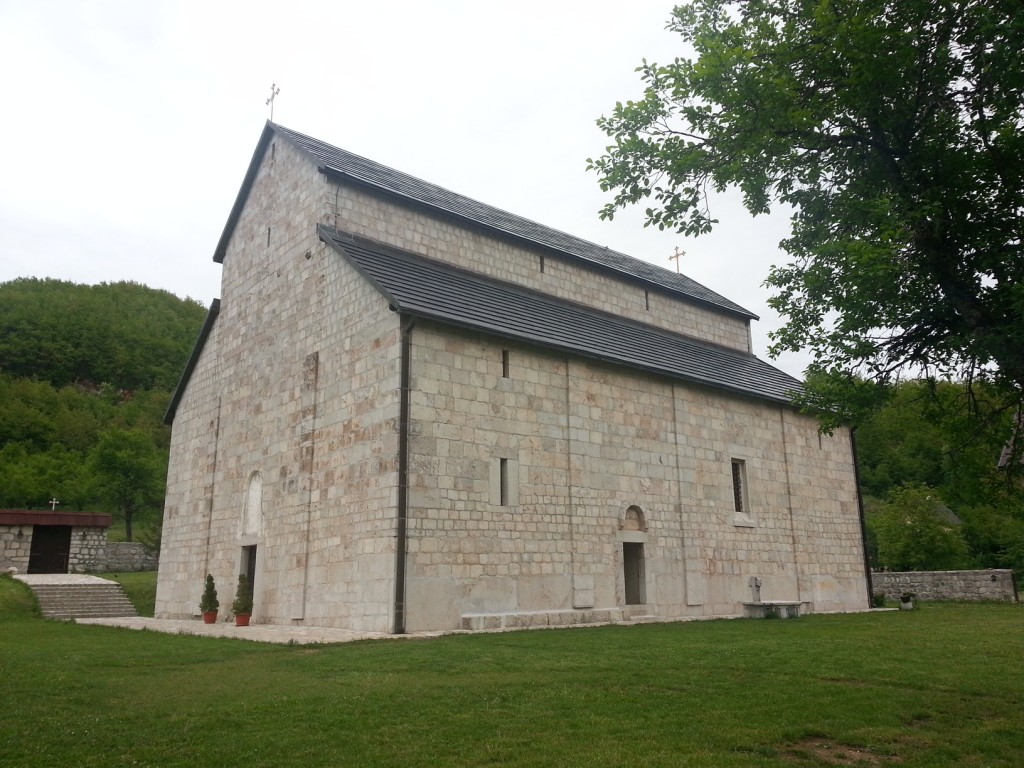
Piva Monastery
We continued our journey to the nearby farm of Željko Mitrić, the renowned honey producer, for a delicious breakfast. His farm is overgrown with fragrant flowers and embraced by aromatic meadows. His special pear orchard contains an endemic variety of pears, called “mrkaljuša.” Some of the trees are over 100 years old. The “Mrkaljuša” is a small fruit that can be eaten fresh, but is primarily used for the production of high quality brandy and “pear water” made by a process of dipping the fresh fruit into water and aging the liquid. This bitter “pear water” is believed to be very healthy.
A new day in the Piva region started with preparations for our hiking escapade in the Durmitor mountains. While approaching our starting point in the mountains, our legendary guide Mirko Vuković revealed the legend of Todor whose unfortunate love for Ružica caused the jealousy of fairies and eventually gave name to the mountain Prutaš (2,393 m.a.s.l.) – the highest peak on our hiking expedition whose rock formations resemble “fairies’ hair.”
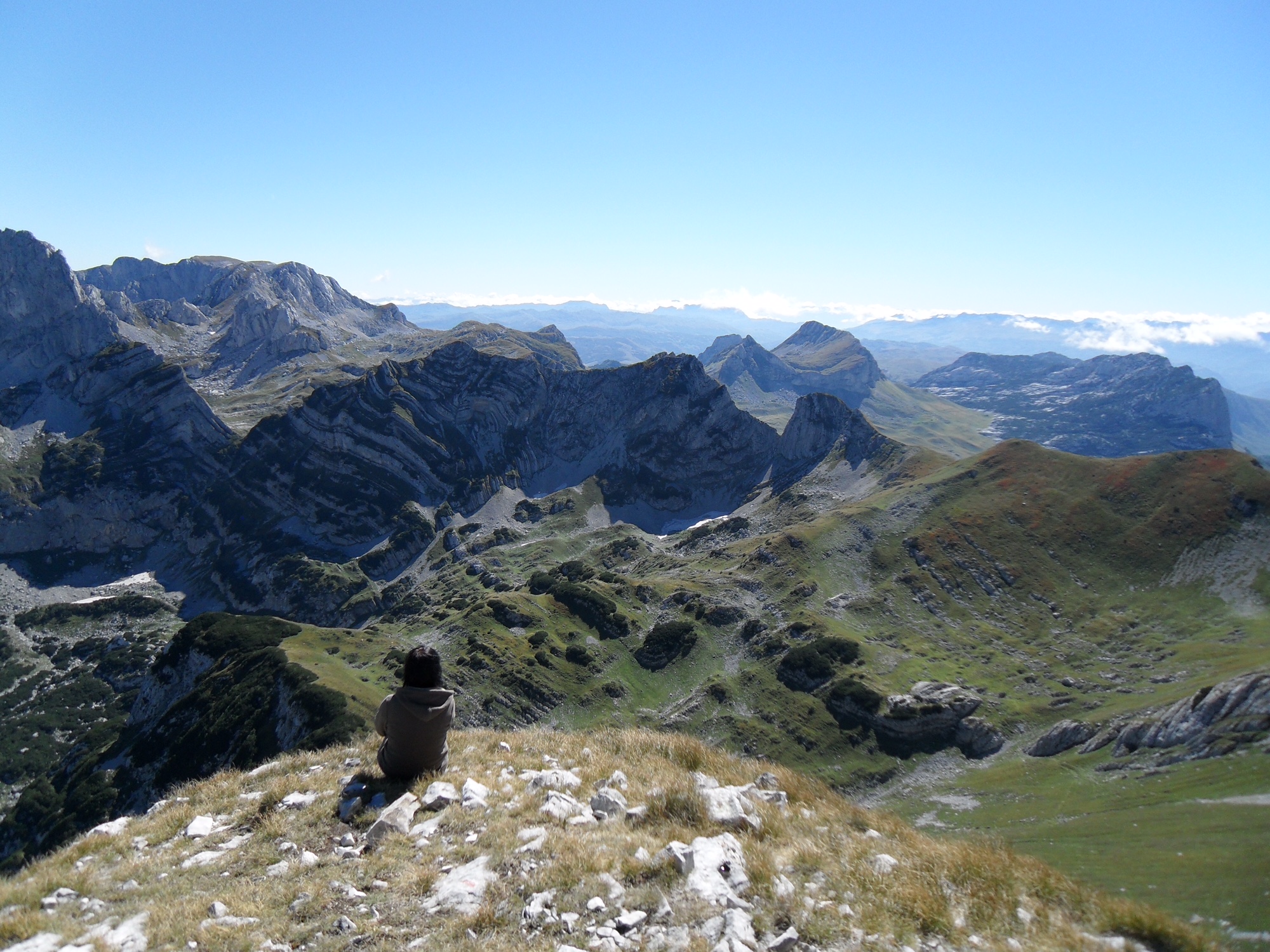
Prutaš
Experienced local mountaineering guides share deep respect for the mountain, never underestimating its power and always admiring its breath-taking beauty. Beautiful vistas filled our spirits, but we certainly deserved a good breakfast at the top of Prutaš. For most of us, breakfast at the 2,393 m doesn’t happen very often in our lives.
On our way back to the valley we crossed the border between the regions of Piva and Drobnjak and heard about another legend of a wise old lady Baba Kruna who put an end to the endless fights about where the border should be placed. She performed a ritual with stones and said that she is standing with one foot on the Piva territory and with the other one on the Drobnjak soil. On that place people put a stone wall which still exists and is called Prespa.
Our next stop was Nedajno village, a hidden gem often neglected by tourists heading towards the regional tourist centre of Žabljak. This picturesque village has maintained its traditional appearance with houses with steep roofs and small entrances. Though we visited the village several times before, we never miss a legendary local dish, called ‘cicvara’, made of wheat, corn flour and ‘skorup’ cheese.
We heard so much about Nevidio canyon. Tucked away and hidden in inaccessible terrain, the canyon had attracted attention and curiosity for decades. Endless strange and fantastic stories used to circulate about the last unconquered canyon in Europe. Finally, in August 1965 a band of poorly equipped adventurers from the Javorak Mounteneering and Skiing Club of Niksic successfully passed through the canyon and became the first to introduce the world to the canyon’s long hidden, wild and stunning beauty.
At the end of the Komarnica river valley at an altitude of 935 m.a.s.l. begins the canyon Nevidio or Nevidjbog as is called by locals (which means “God didn’t see” in Montenegrin). As it enters the canyon, the Komarnica river suddenly disappears through a strangely carved entrance and becomes invisible to human eye. Most of the canyon is in a perpetual shadow – due to the height of its vertical cliffs, sunlight does not reach the bottom. The canyon is a gem of rugged nature that has fascinated visitors since its discovery and this is where we are headed on our next trip to the region.
Crkvice: Embraced by Nature
Aromatic fragrances of the Mediterranean wild herbs are in the air as we are rising up the fragile stony stairs of an old Austro-Hungarian cinema in abandoned village of Crkvice on Orjen mountain in Montenegro. It’s amazing how nature takes over after human activities cease. Birds and other animals dwell in magnificent stony ruins.
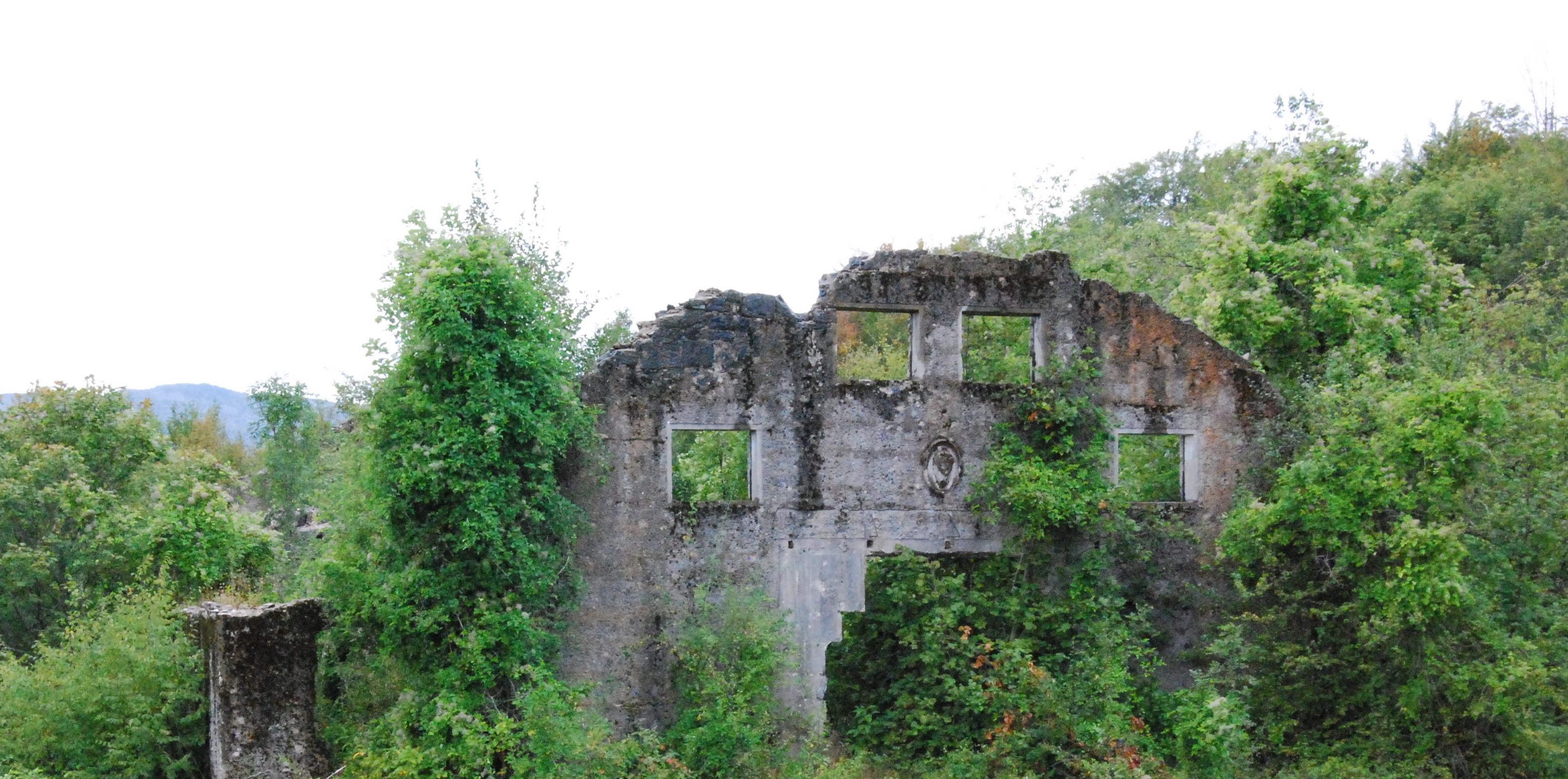
Old horse stall in Crkvice
When I was working in Suriname I first heard of so called ‘secondary forest’. I remember my imagination soaring as I was observing how the jungle overgrew old cotton plantations.
Something similar happened here, on Orjen. Except that there are no annoying mosquitoes around and the area continues to be partially cultivated by some farmers that are still growing potatoes in tiny karst fields.
Blending history with pristine nature
Some 100 years ago, Crkvice, a vivid military settlement above Risan, has been established to protect and expand the Austro-Hungarian reign in the areas, predominantly ruled by the Turks. In its peak, Crkvice had up to 10,000 inhabitants, mainly families of Austro-Hungarian soldiers. They had all the luxury one could imagine: hotel, tennis court, bowling alley, football field with stands for 1,000 spectators, cinema, brothel, church, bakery, hospital, horse stalls, funicular to drag tree trunks from the woods etc. Altogether over 150 solid buildings were built in a relatively short period.
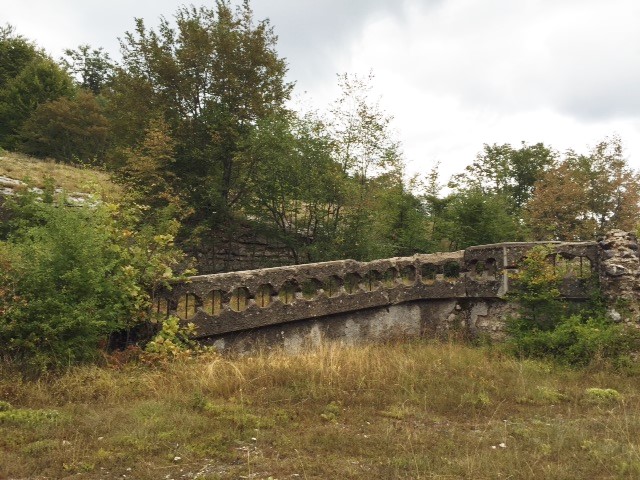
Path, leading to the water reservoir
The most outstanding are the ruins of the old bakery which used to be the largest bakery in the Balkans and the second largest in Europe. It provided bread for whole of Boka Kotor bay. Records show that over 24 tons were produced daily, using automated baking system and electricity created in a very sophisticated generator.
Nowadays, only stony ruins speak of the magnificence of Crkvice. Wildlife expanded, original vegetation regenerated along with old fruit trees, providing abundant food for birds and other animals.

Once the largest bakery in the Balkans, taken back by nature
Wildlife- and bird-watching in Crkvice is something unique
Our fellow traveller, Rok Rozman, ornithologist, immediately recognized some characteristic birds for Orjen and later on, along the walk, also some quite rare species. The region of Orjen is known for the biggest precipitation in Europe with the peak of it ranging from autumn to spring. Despite all, the region is surprisingly dry due to the karst surface. Limestone here reaches one of the deepest layers in the world, permitting these huge amounts of rain and snow simply vanish down into crevasses, caves and abysses only to get back to the surface, or even under the sea, in springs 1,500 meters lower in the Boka Kotor bay. This phenomenon leads to unique conditions that create very rare habitats and when combined with the forest-cowered ruins of one of the biggest settlements of its kind, you get an experience like no other.
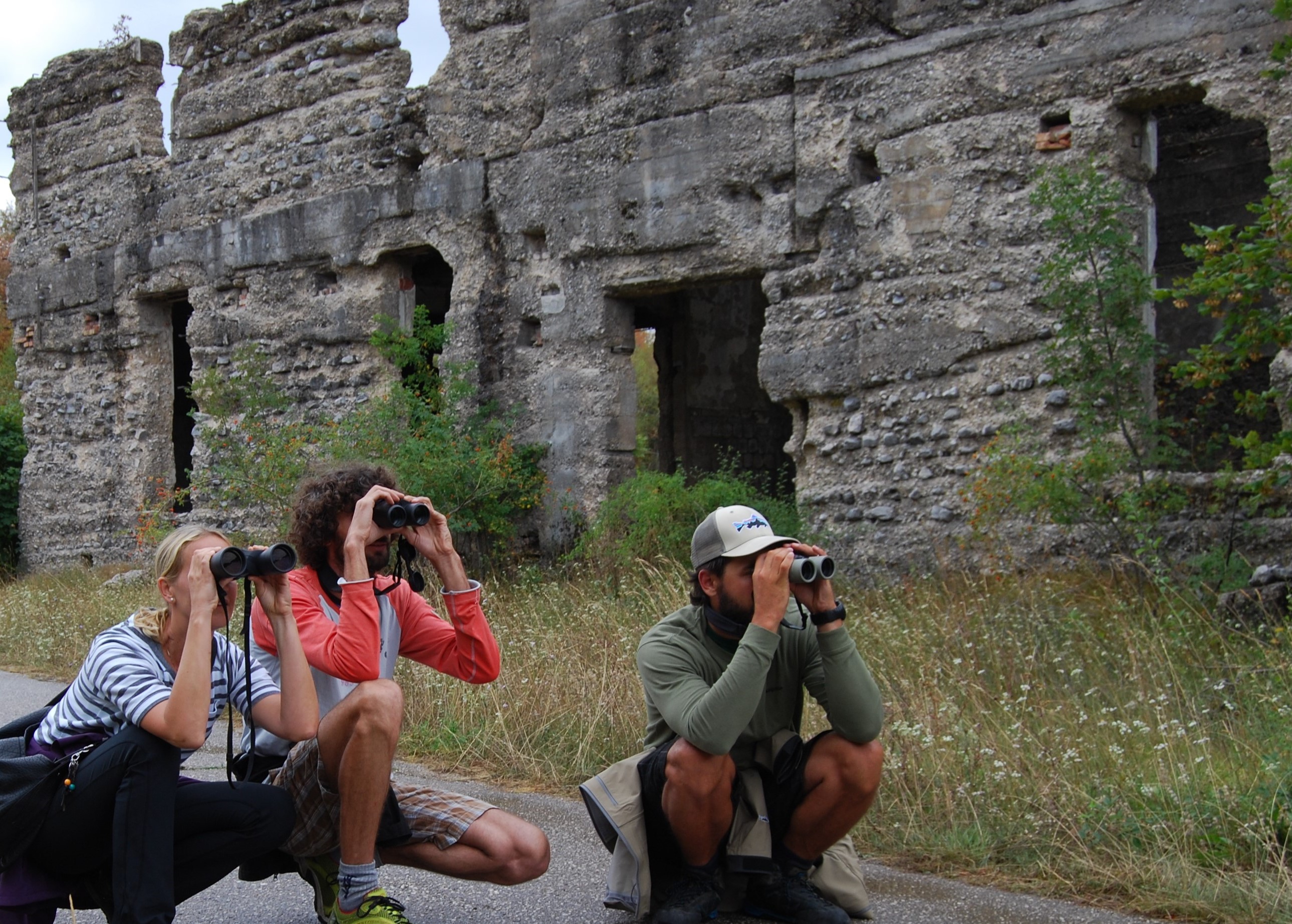
Trying to spot birds in the bushes
Wildlife is abundant and especially birds are to be noticed at every step. Nuthatches, tree creepers and tits accompanied us at every step; we spotted many Mediterranean weathers, rock buntings and even black woodpecker. The place is also known to be incredible site for observing birds of prey in the nesting season as well as in migration. We saw a sparrow hawk, but golden eagle and short-toed eagle are to be expected and seen easily for someone, spending more time in Crkvice. The potential for birdwatching is simply amazing.
Non-governmental organisation Center for Protection and Research of Birds of Montenegro is raising awareness about exceptional richness of bird species in the area and about protection of their habitat.
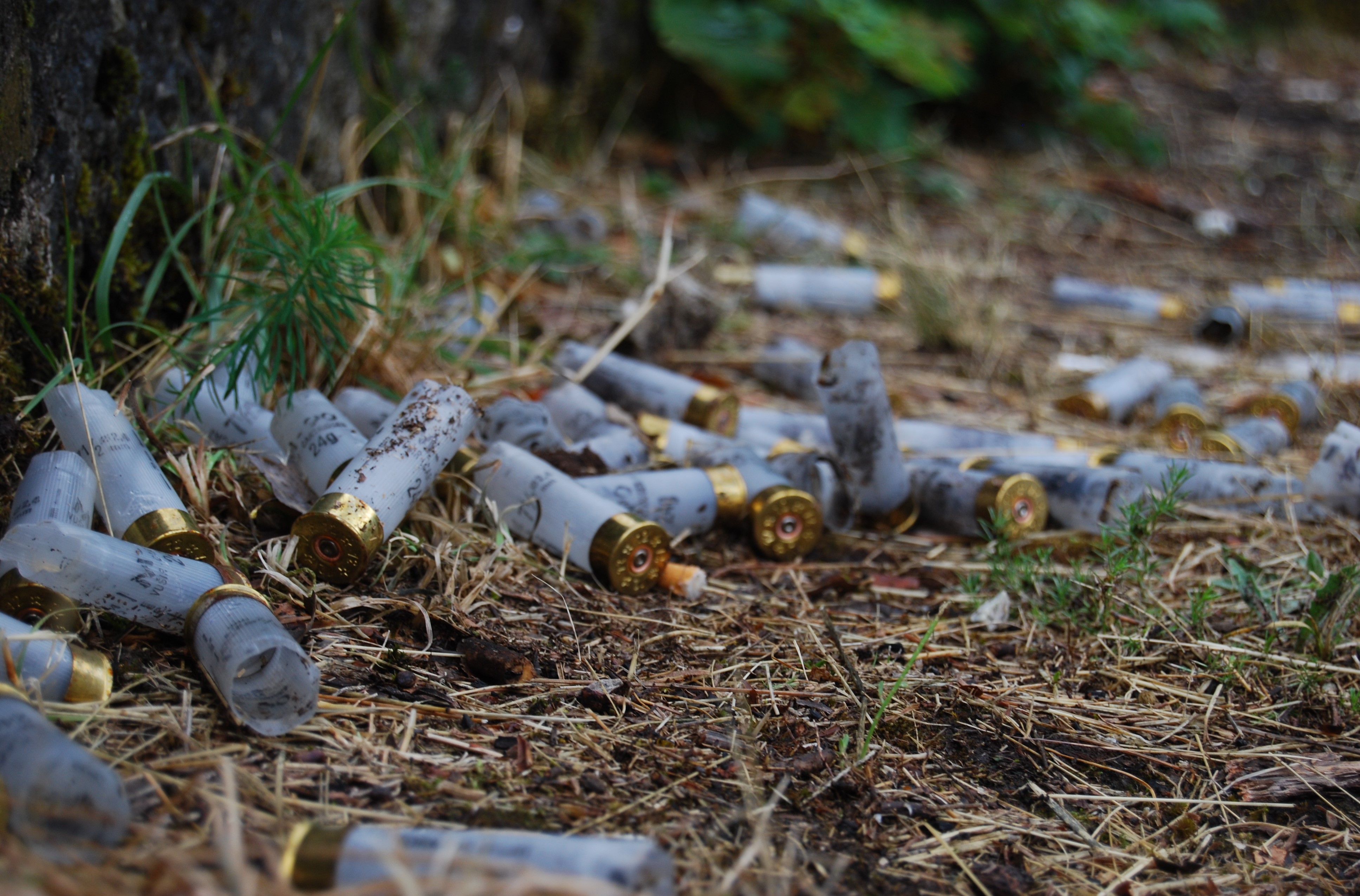
Bullets near Crkvice
However, local hunters do not always respect hunting regulations and bullets can be noticed around. I trust that this will change in time with the increased awareness of local people and more and more nature lovers, visiting Boka Kotor bay, admiring its magnificent nature.

Ideas for hiking in the area
Crkvice is great for hiking as well. Though easily accessible by car – less than half an hour drive from Herceg Novi – the site is a very suitable starting point for several walking trails that lead to spectacular views and are getting very popular. Local mountaineering clubs Niskogorci and Subra are maintaining mountaineering trails on Orjen and do great job in promoting outdoor activities in the area.
I certainly don’t qualify for a professional birder. But birdwatching can be such fun! Especially, if not taken too seriously. Hours pass by listening to the sounds of nature, something that can rarely be experienced in our everyday lives. And as I had been trying my best to spot nuthatches and tree creepers, another joke from our Montenegrin guides came across. Days spent in laughter!
Upon my return home, I learned that these same enthusiasts from Niskogorci club introduced a new climbing route, called ‘nuthatch’ (brgljez), named after the only European bird that can climb head down. I just love this dedication and Montenegrin sense of humour!

New climbing route by Niskogorci
Special thanks to Nativa Institute and Rok Rozman!
The Old Town of Kotor, its fortifications and nearby villages have been widely publicized since Kotor made it to the list of Lonely Planet’s top picks to visit in 2016.
The wider area of the Boka Kotor Bay offers some pretty amazing experiences for nature lovers, too. We had a chance to work with environmentalists and authentic local tourism providers within a non-profit initiative, called BETSA (Birdwatching and Eco Tourism of South Adriatic) and this is what we recommend as top 5 highlights for nature lovers:
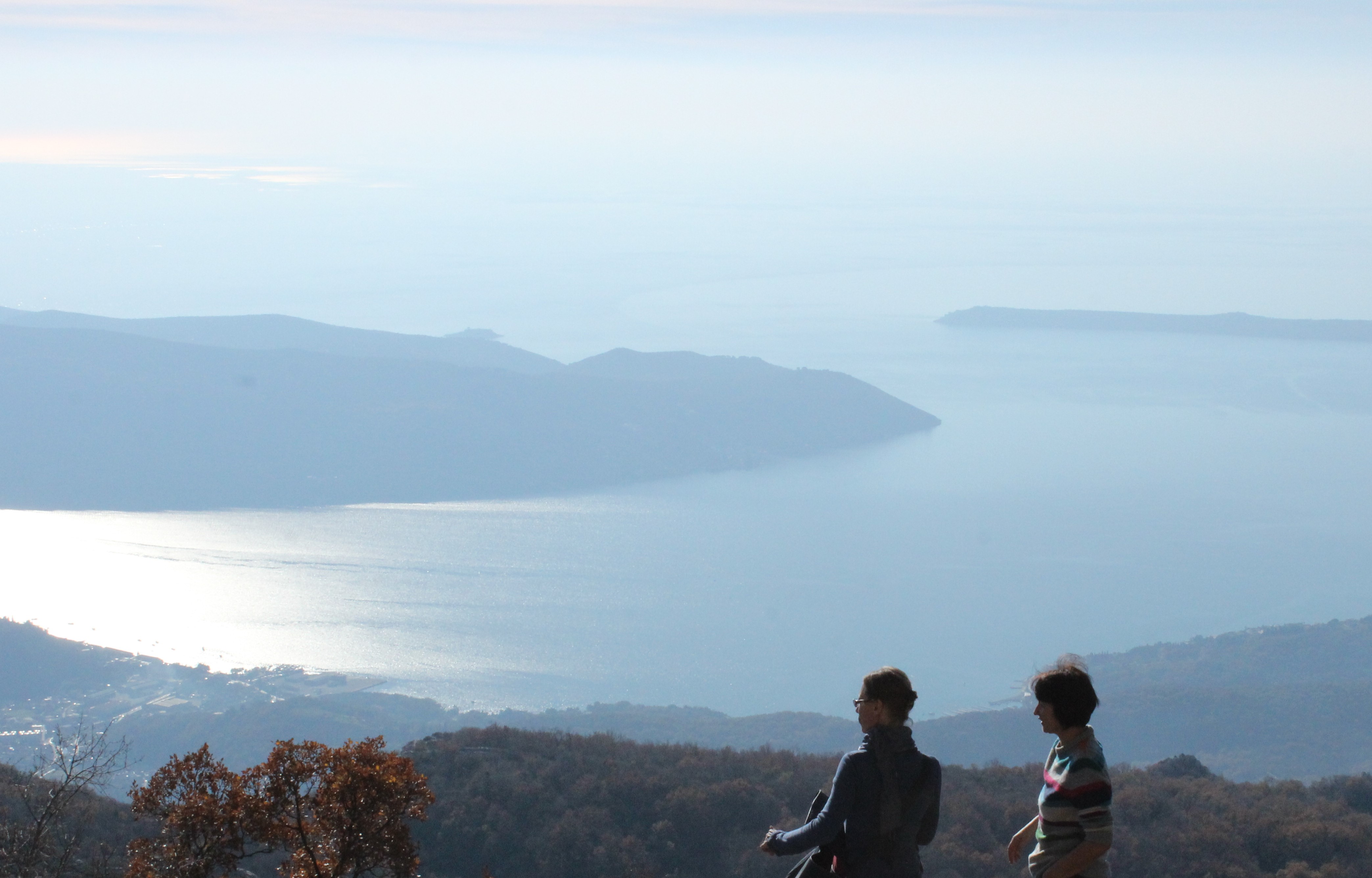
View from Orjen; Photo: Miljan Novaković
1. Tivat Salt Pans
Tivat Salt Pans, an ornithological reserve, enlisted on the Emerald and RAMSAR site, are a unique biodiversity gem. The most nature friendly ways of accessing the area are: by kayaks from Tivat, by bikes or walking a 3 km walking trail from Tivat Airport.
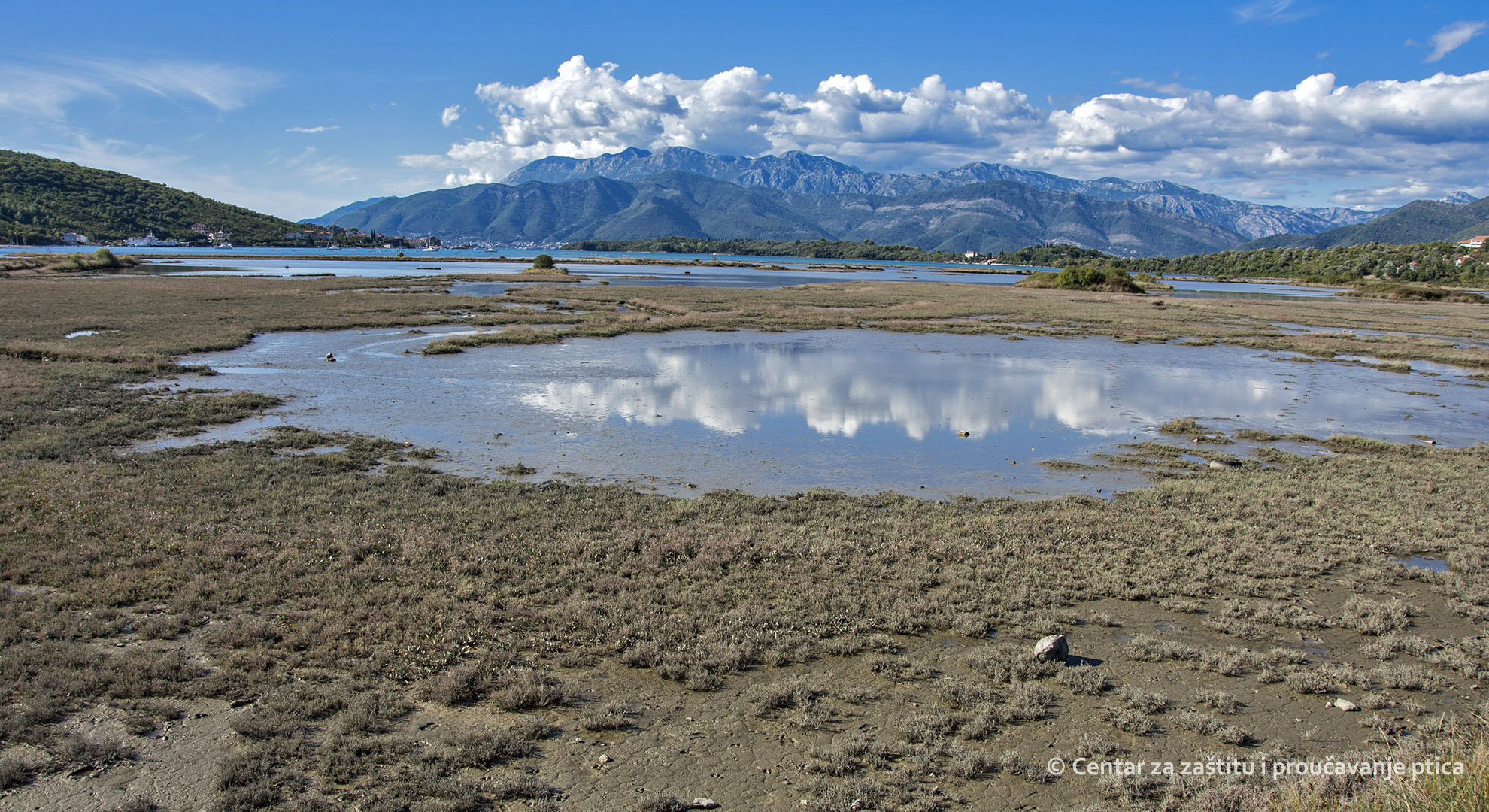
Tivat Salt Pans; Photo: CZIP
The natural and cultural heritage of Tivat Salt Pans is presented by young enthusiastic guides from the Center for Protection and Research of Birds (CZIP), a non-governmental organisation which is running an info point there. A variety of birds can be spotted during every season: herons, several species of ducks, coots, snipes, woodcocks, cormorants, gulls, ibises and many more. In spring, the scenery is particularly impressive as most European species of water birds fly over the salt pans in large flocks.

Little Egret on Tivat Salt Pans; Photo: Borut Rubinić
We recommend visiting the reserve either early in the morning or later in the day, before the sunset. The lights are just amazing.
2. Exploring Mount Orjen

Vilino Guvno on Orjen; Photo: Željko Starčević
Orjen is the highest mountain range in the Mediterranean part of the Dinaric Alps. The area has been recently declared a regional park. First mountaineering trails and several fortifications date back to the 19th century, during the reign of the Austro-Hungarian Monarchy. Plateaus on Subra are majestic examples of karst micro-relief. ‘Subra amphitheatre’, for example, is a fabulous work of art by nature. Numerous speleological sites are scattered in the area.

Unique Bosnian Pine on Orjen (Pinus Heldreichii); Photo: Željko Starčević
The best way to start the exploration of the mountain is from the edge of Herceg Novi at ‘Matkovića most’, near the village Matkovići on the way from Herceg Novi to Trebinje.
A one hour hike on a stony walking trail leads to Kotobilj forest. This area, afforested back in the 30s of the 20th century, is an untouched oasis of mixed trees of Bosnian pine and cypress. There is a lot to see in the surroundings. A visit to the tiny churches of St. Peter and St. Paul, as well as, to the Church of St. Stephen is especially rewarding. It’s also nice to walk to the ‘Secret Hill’, dominating above the village of Kameno. It used to be a military fortress and nowadays, it offers an attractive blend of history and nature. From the top of this hill some of the best views over the bay can be observed along with flocks of migratory birds during spring and autumn migrations.
On the way back, a little village Trebesin is also worth visiting. The name of the village comes from the French expression of excitement: ‘tres bien’. A delicious authentic meal can be ordered in ‘konoba’ there.
3. Moonlight in Žlijebi Village
A small, almost completely abandoned Dinaric village of Žlijebi is noted for its unique stone houses with interlaced limestone roofs. Everything is built from stone in this village: poultry houses, paths, walls and even the church of St. Nikola. Nikola Sikimić, a local master of stone crafting, is one of a few left who can show you how to collect plates of limestone from the ground by hands so that they don’t break. With much care and love for this unique village he has renovated a beautiful complex of houses in traditional style that are now open to visitors.
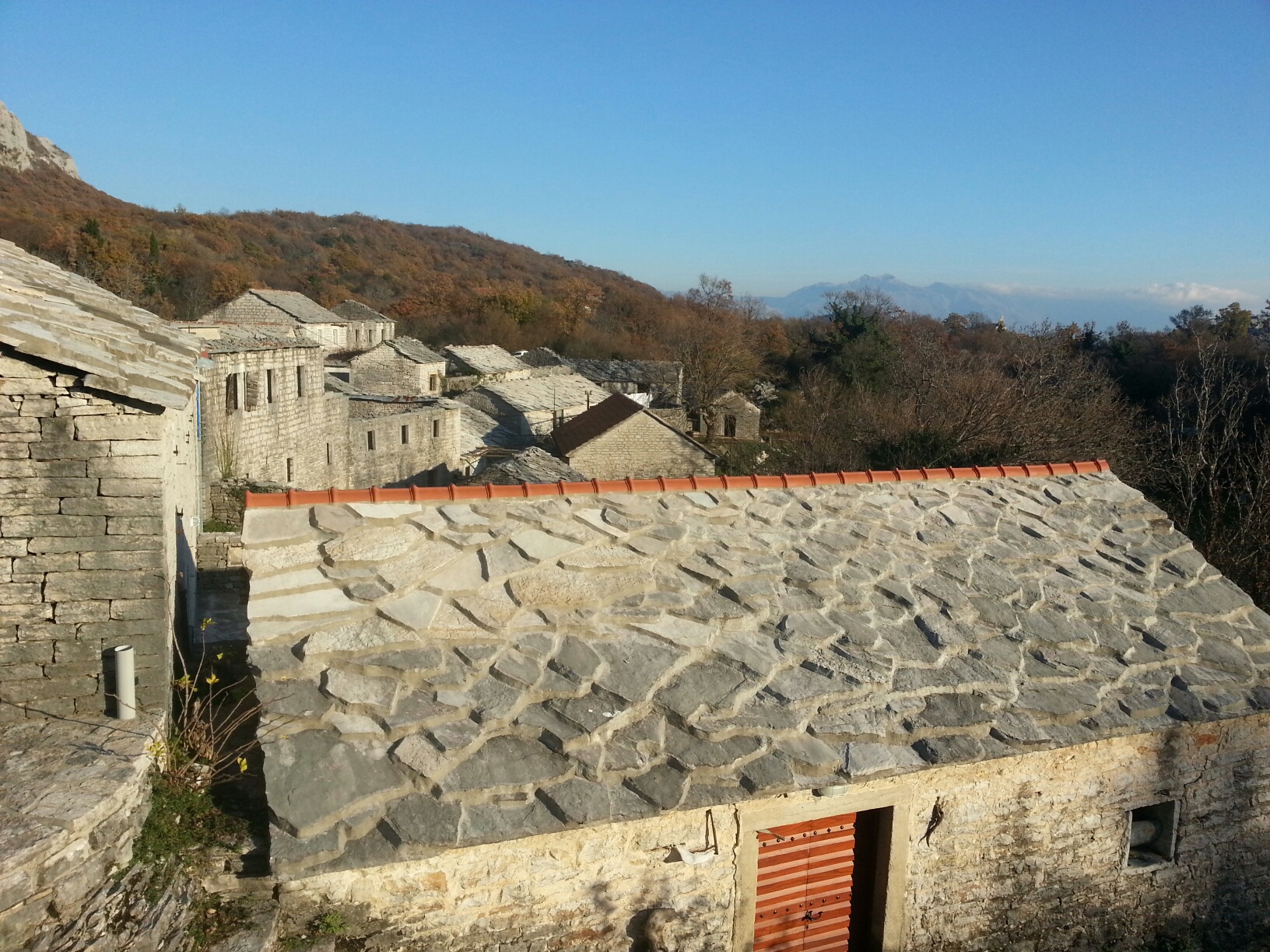
Žlijebi Stone Houses; Photo: Tadeja L. Colnar
More than anything, simplicity and peace can be enjoyed in Žlijebi. And on a full-moon night the whole village glitters. Unforgettable!
4. Hiking Vrmac
Mount Vrmac is a peninsula, dividing Kotor Bay from Tivat Bay. On the Kotor side, it is part of the UNESCO world heritage, whereas on the side of Tivat, it is declared a regional park. Several marked walking trails that used to connect settlements and fortresses on Vrmac lead to spectacular views over the bays.
There are several options on how to hike to Vrmac. For those who prefer an easy walk, a 4-5 hour trail starts at the Austrian fortress, continues on the slopes of Vrmac to the highest peak of Sveti Ilija (St. Elijah, 785 m.a.s.l.). The views over the Kotor and Tivat Bay are stunning.

View from Vrmac; Photo: Klaudio Katelan
There is also a possibility of longer hikes, starting in the Old Town of Kotor, through Vrmac, to the village of Gornja Lastva. Local guides will help you with that. Pay special attention to the drumming sounds, made by woodpeckers, whose presence indicates highly preserved forests in this area.
Vrmac is attractive at all seasons – Camellia Festival is a spring overture to festivities in Boka. Camellias are a symbol of maritime tradition and interconnectedness with the rest of the world.
Summer is the time to enjoy Upper-Lastva Festival.
In the end of autumn/beginning of winter delicious chestnuts are the reason for another festival, called Chestnut Festival in Donji Stoliv. It’s amazing how many culinary delights can be made from this one ingredient.
5. Kotor Town Walls
Though this is one of the major attractions of Kotor, climbing the city walls just above the Old Town is a must. Rising at sunrise and avoiding crowds is certainly a good way of doing it. Nature lovers might enjoy this path a bit differently – at the very top, at the Fortress of Sveti Ivan (St John), an off-the-beaten path continues through ‘the window’ towards the village of Špiljari.

Fairy’s Doors; Photo: Klaudio Katelan
Perhaps a little ‘bar’ in the village is open and you will have the chance to taste the best pomegranate juice ever while sitting in traditional Montenegrin chairs, overlooking Vrmac, the Old Town and the sea.
Written by: Tadeja L. Colnar